Germany
1985 Photos
I passed through East and West Germany on the way to the UK by train on my 13-week Melbourne - Bangkok - Hong Kong - Taipei - Japan -
Trans Siberian Railway - Poland - Germany - Holland - UK - Athens - Israel - Egypt - Western Europe - Singapore - Melbourne trip.
Later I visited West Germany on my 4-week tour of Wesetern Europe.
This tour left Dover on the ferry Reine Astrid for the port of Ostend in Belgium. Then to Brussels, Amsterdam and Copenhagen.
Then we entered West Germany from the Danish Jutland peninsula past Hamburg and on to Hannover.
Our Hannover hotel was opposite a park with lots of deer, boars, horses and squirrels in it.
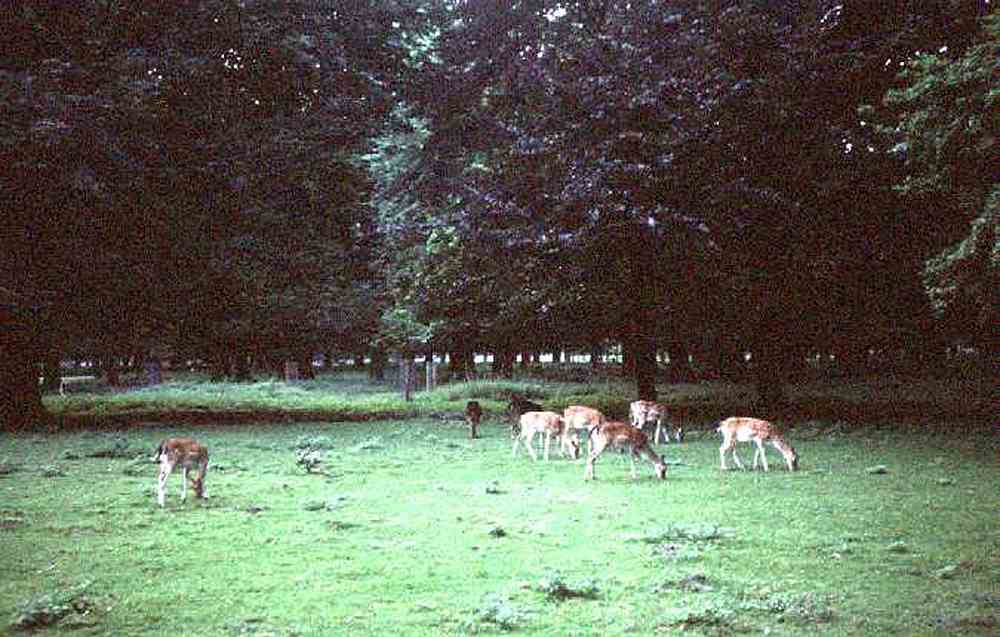
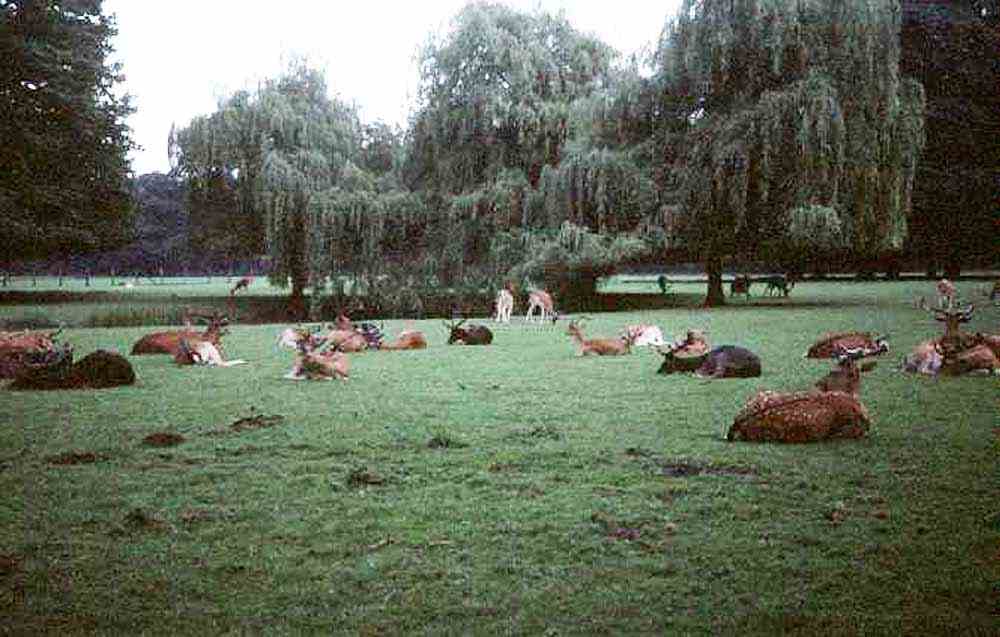
From Hannover we travelled through increasingly picturesque countryside over high aqueduct type bridges
to the Rhine River at Boppard where we started a cruise on the Rhine River.
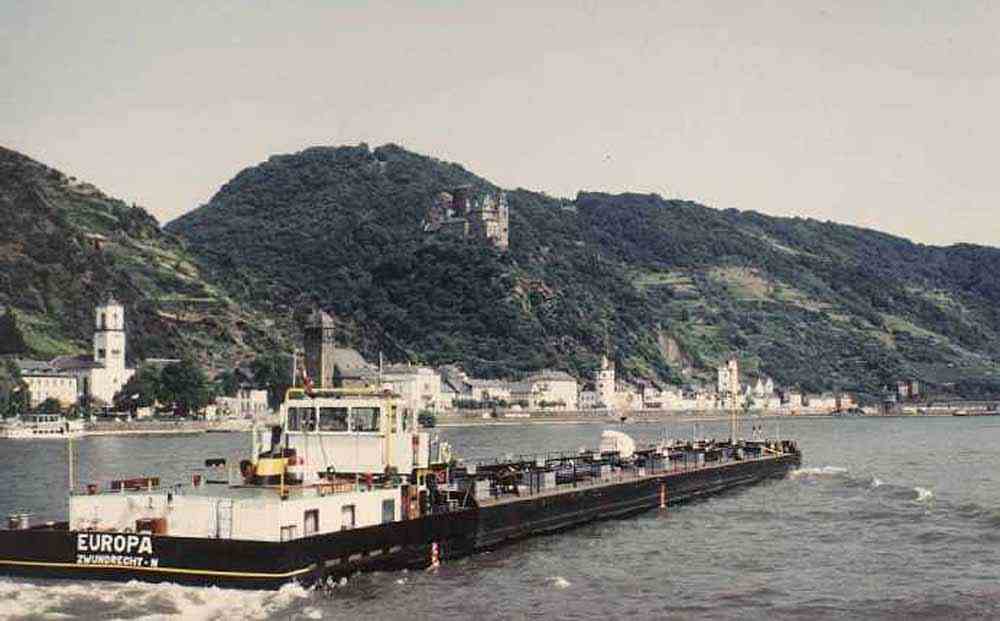
We passed a combined church and hotel. You enter the church through the hotel.
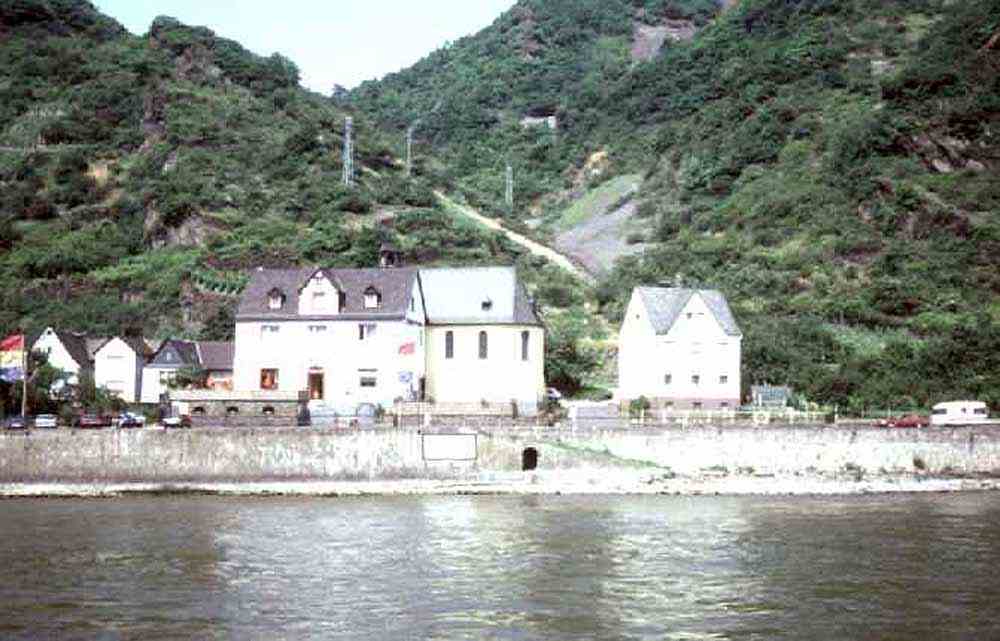
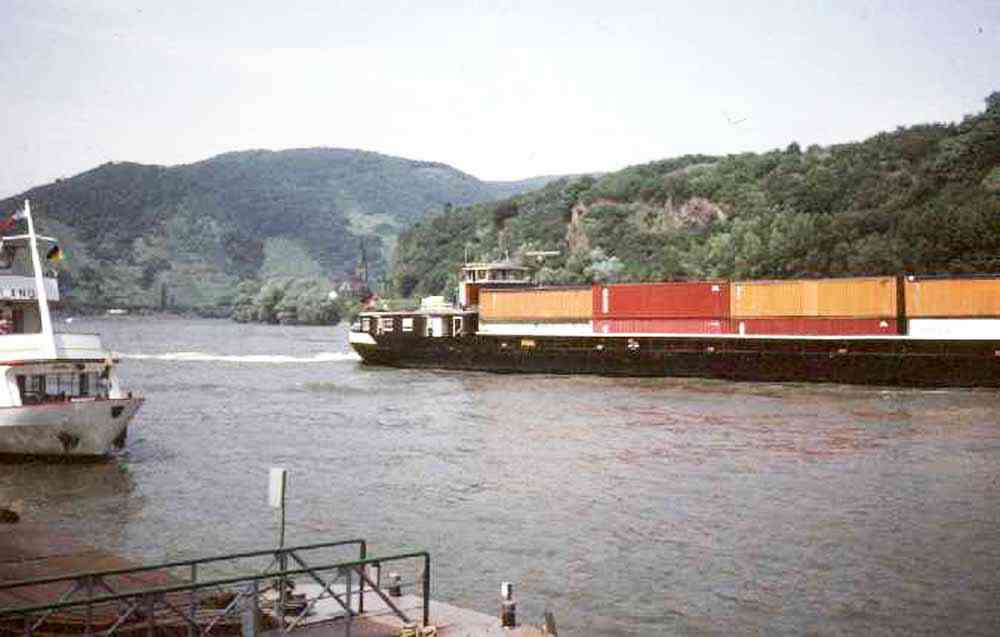
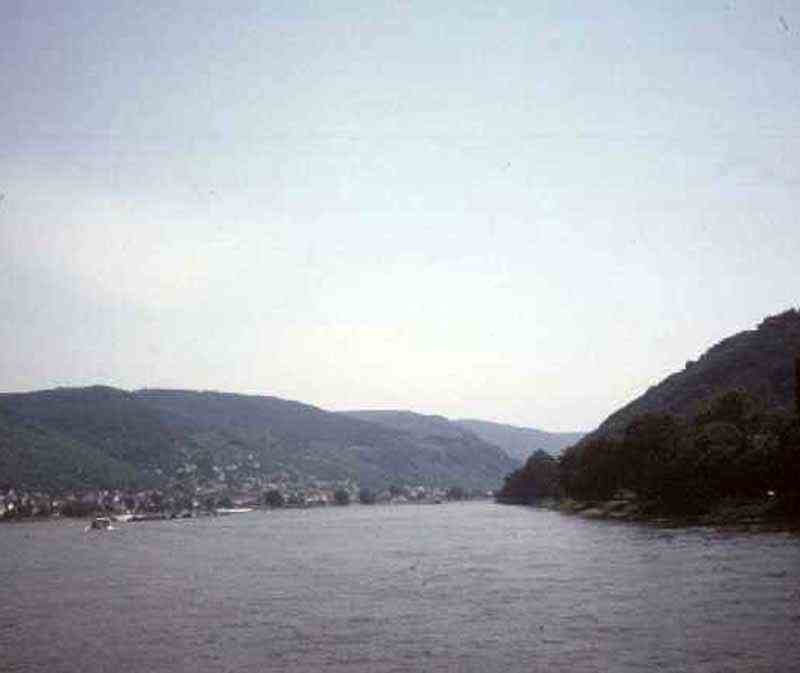
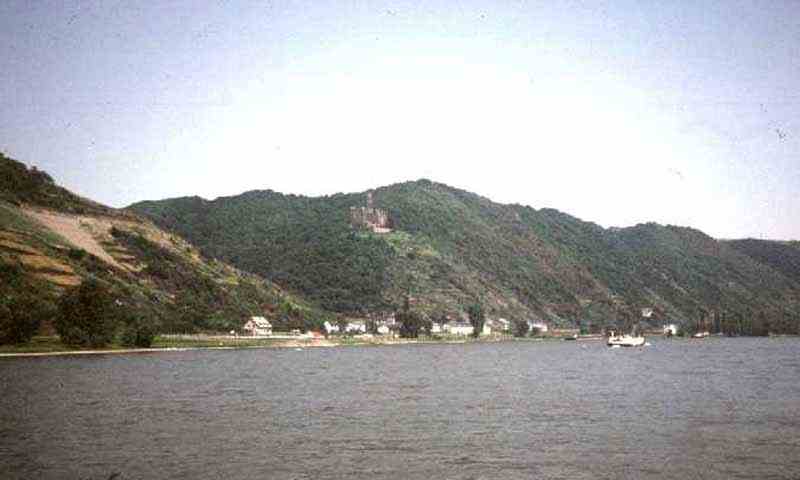

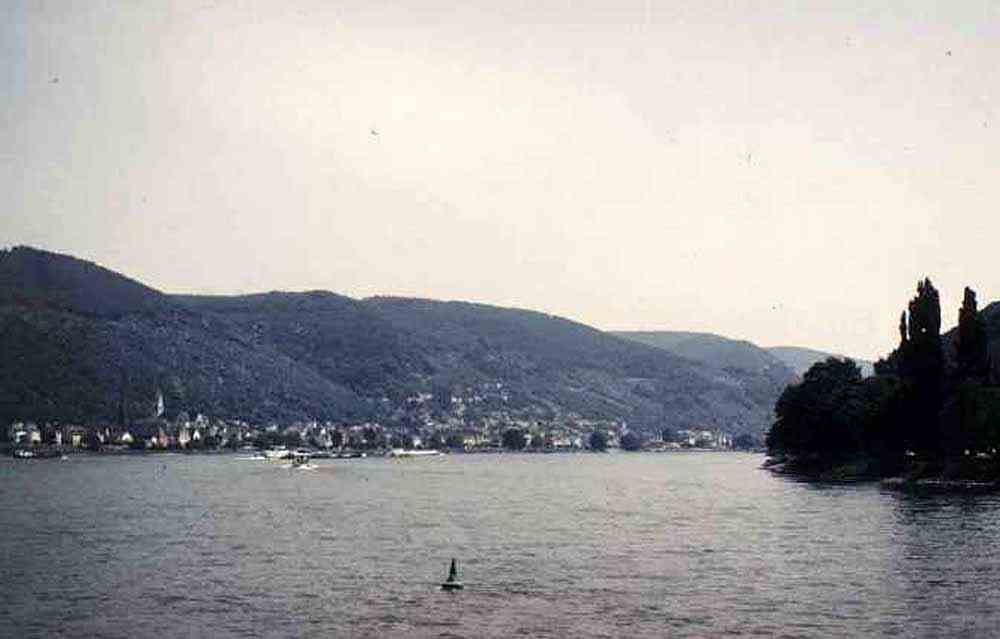
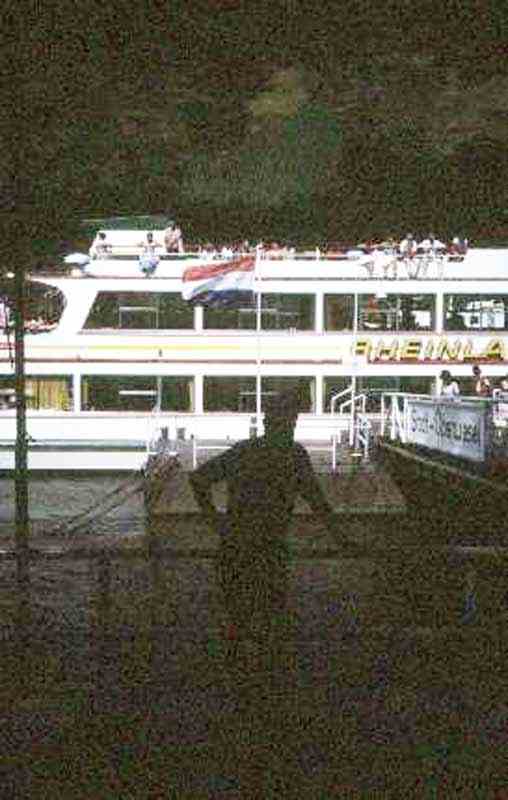
We passed Loreley Rock where legend has it that a maiden lived here who caused distraction to the boat's crews so that they ran onto the rocks.
There is a song about it and a bronze statue of her.
We finished our cruise at Oberwesen and then travelled through Bonn, the West German capital to Cologne (Koln).
Cologne Cathedral.
It was massive inside and out.

A West German village.
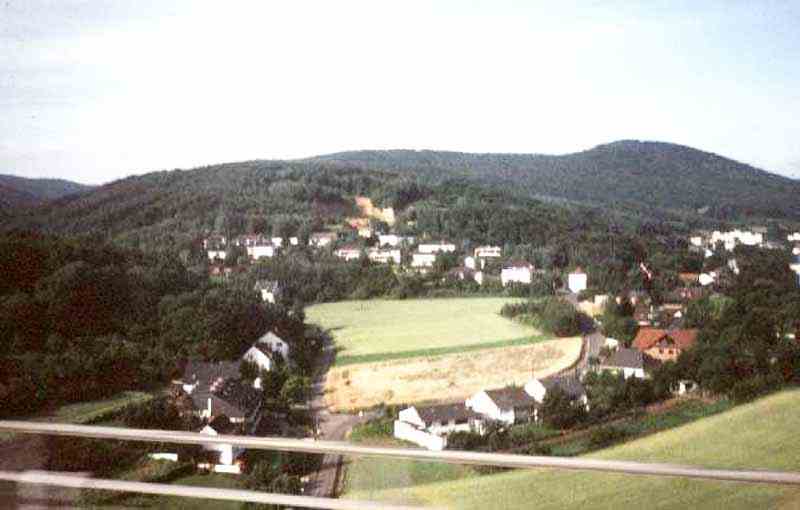
The Moselle River in West Germany.
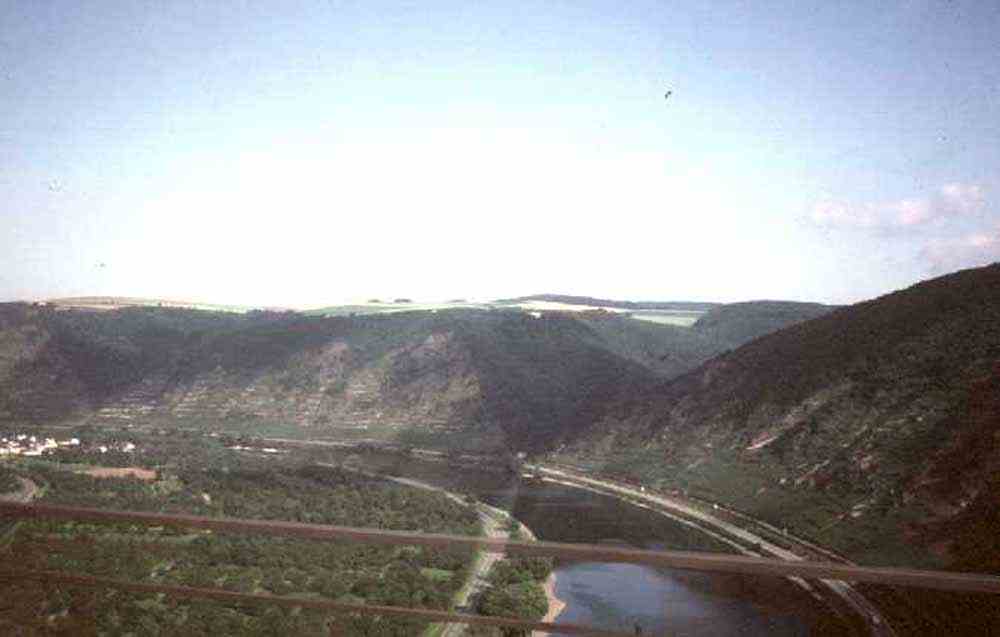
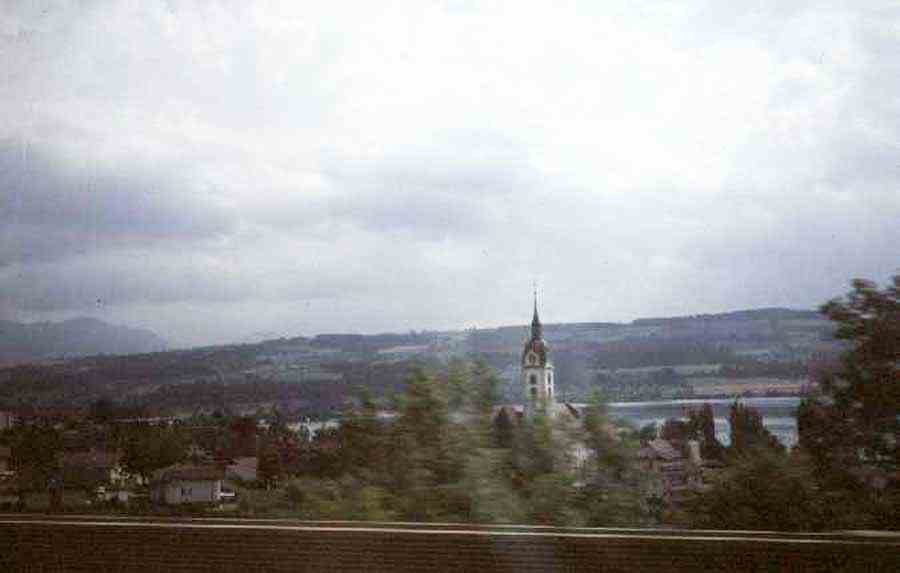
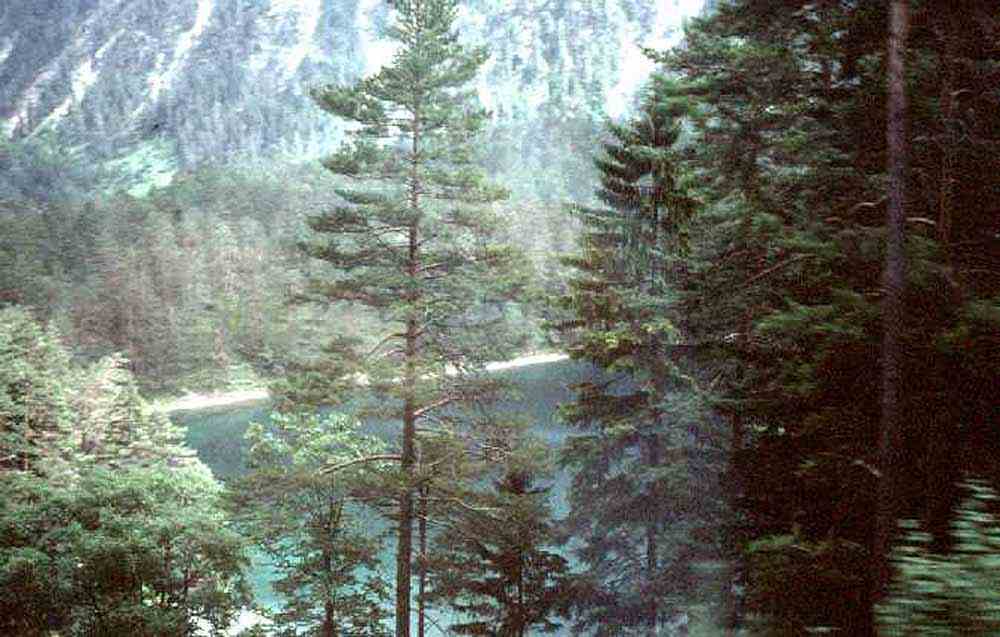
Mt. Zugspitze, 2963 metres, the highest mountain in West Germany.
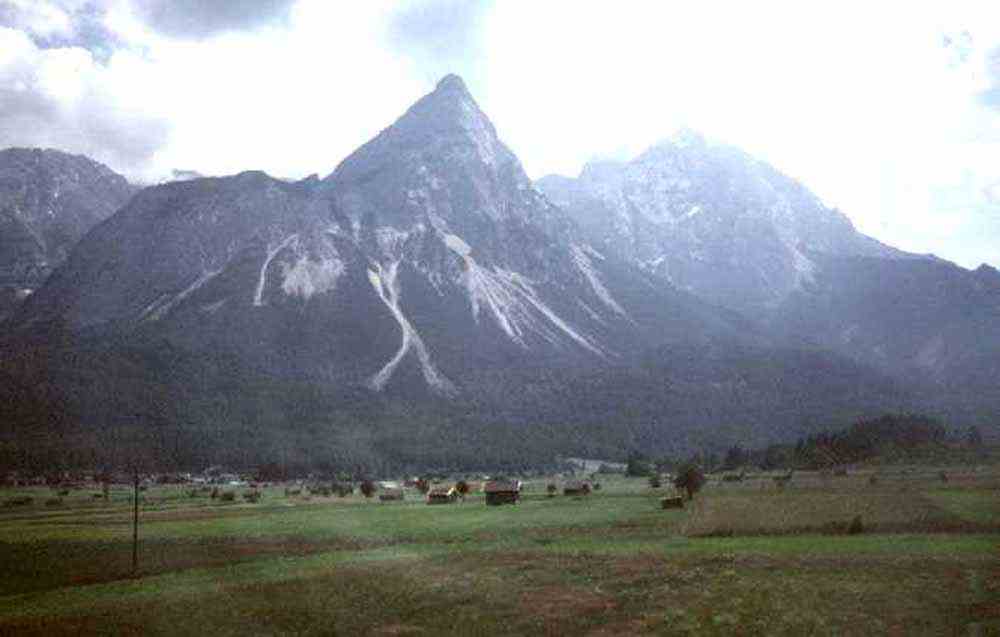
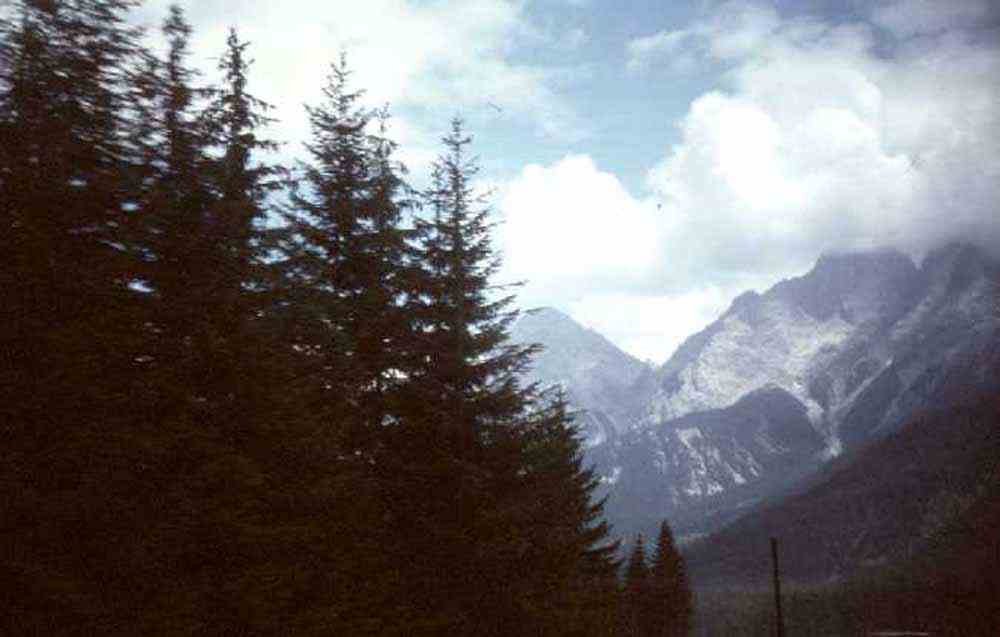
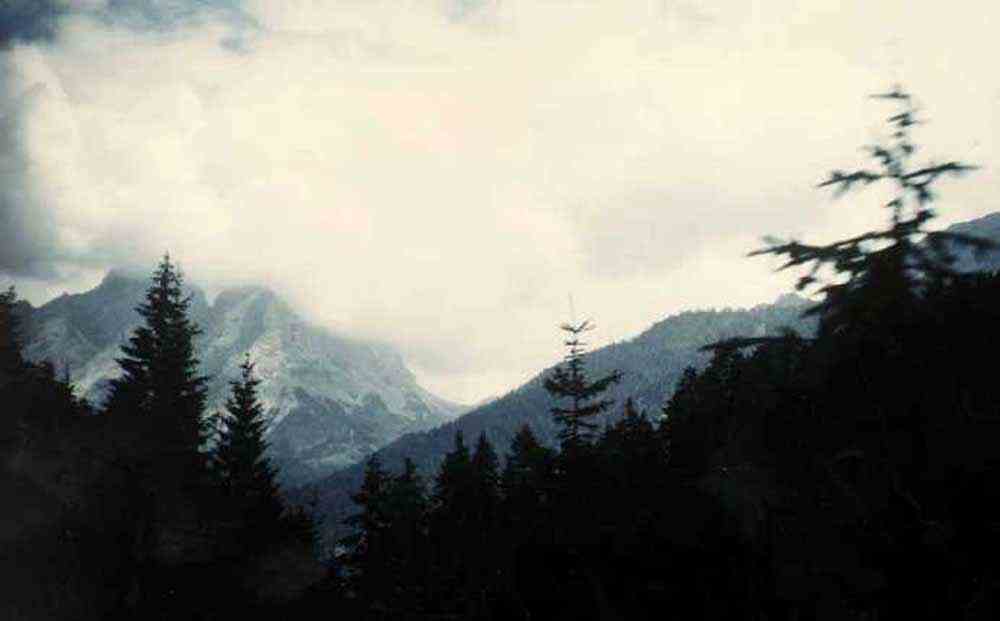
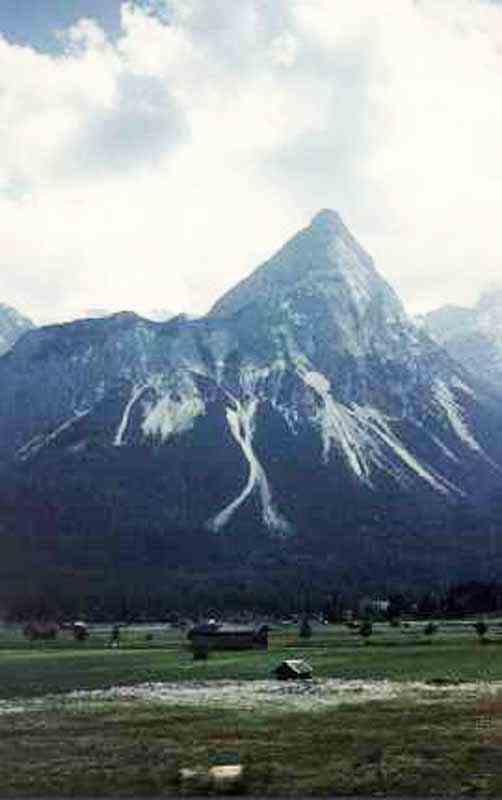
The 1972 Olympic Games stadium in Munich.
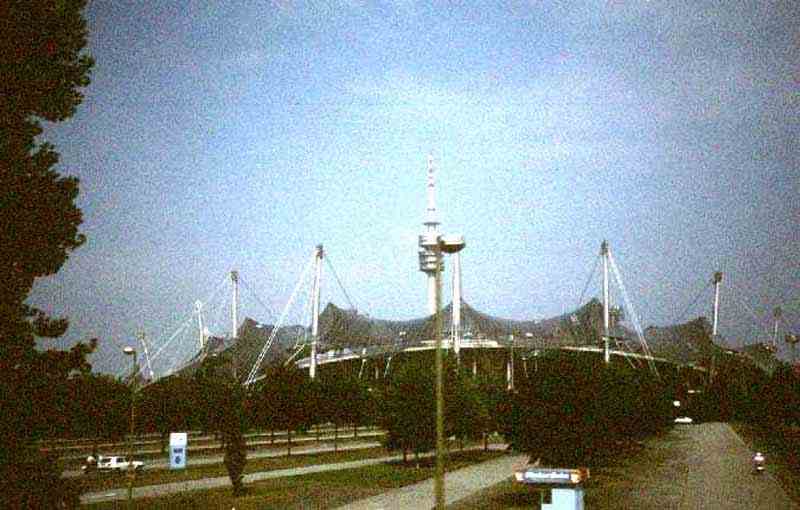
The BMW building in Munich. It is shaped like a 4 cylinder motor cycle engine.
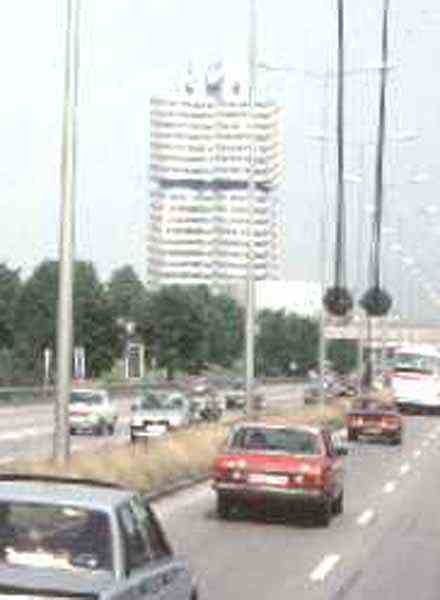

Dating from the 3rd of October 1990, West and East Germany reunified into one nation, Germany.
Photos from our 1999 trip
My second visit was when Margaret and I visited Germany on our first around-the-world trip in 1999.
(99-days - Melbourne - Bangkok - Frankfurt - Moscoe - St. Petersburg - Stockholm - Helsinki - Copenhagen - Malaga - London -
Western Europe - UK - Egypt - Jordan - Israel - Greece - New York - Las Vegas - Melbourne.)
During our 4-week Western Europe tour we entered Germany from The Netherlands and travelled to Cologne.
Cologne
An Australian tourist having his lunch outside Cologne Cathedral.
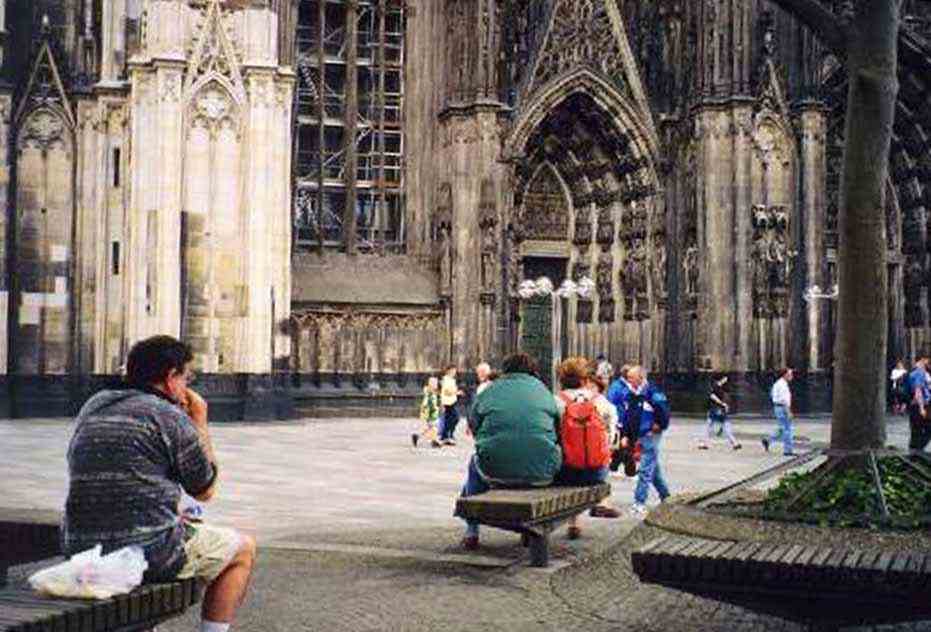
Some of the 12 apostles and other decorations over the main door of Cologne Cathedral

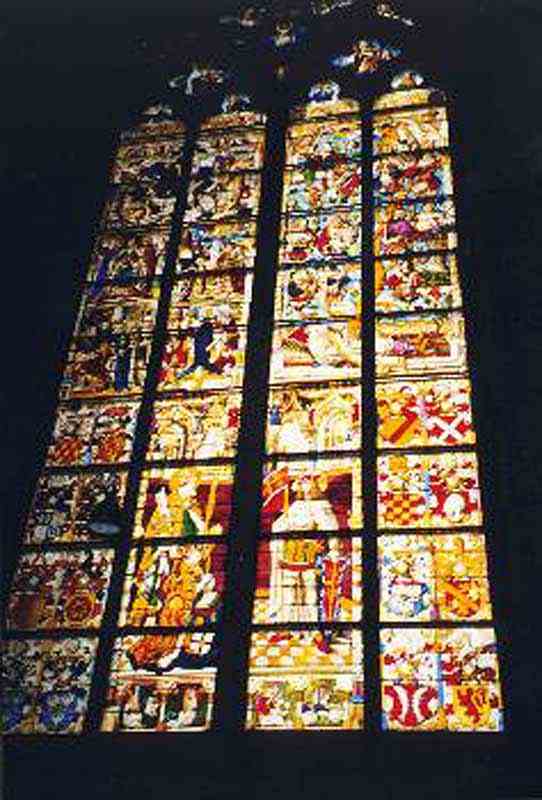
A view of the Rhine river from one of the steeples of Cologne cathedral. There were 509 steps to reach the top of the 157 metre high steeple.
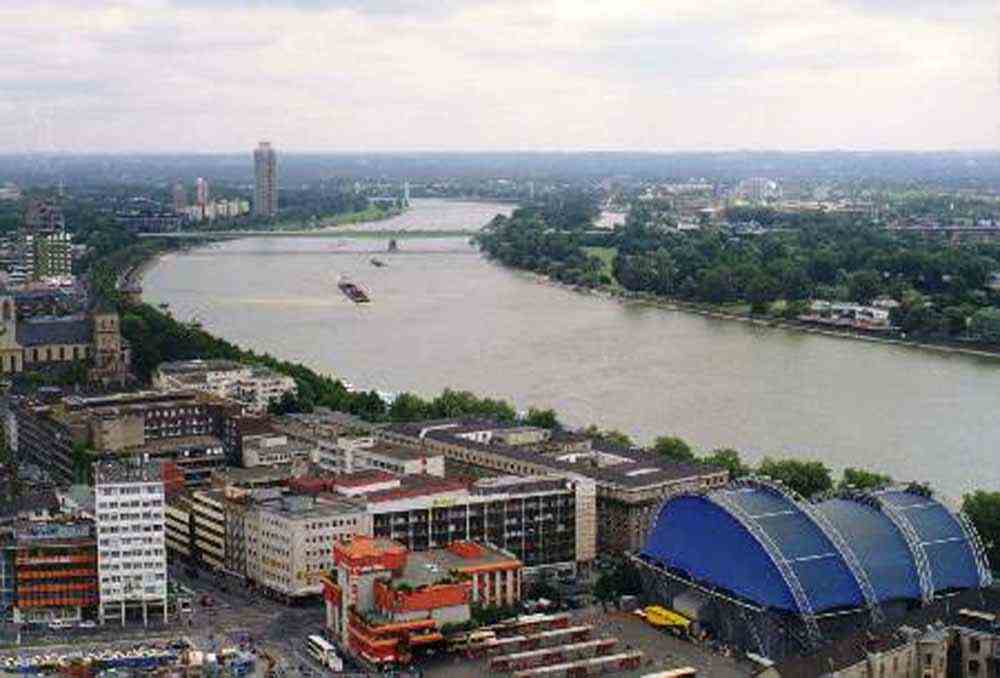
One of the villages beside the river on our 25 km Rhine cruise upstream from Boppard.
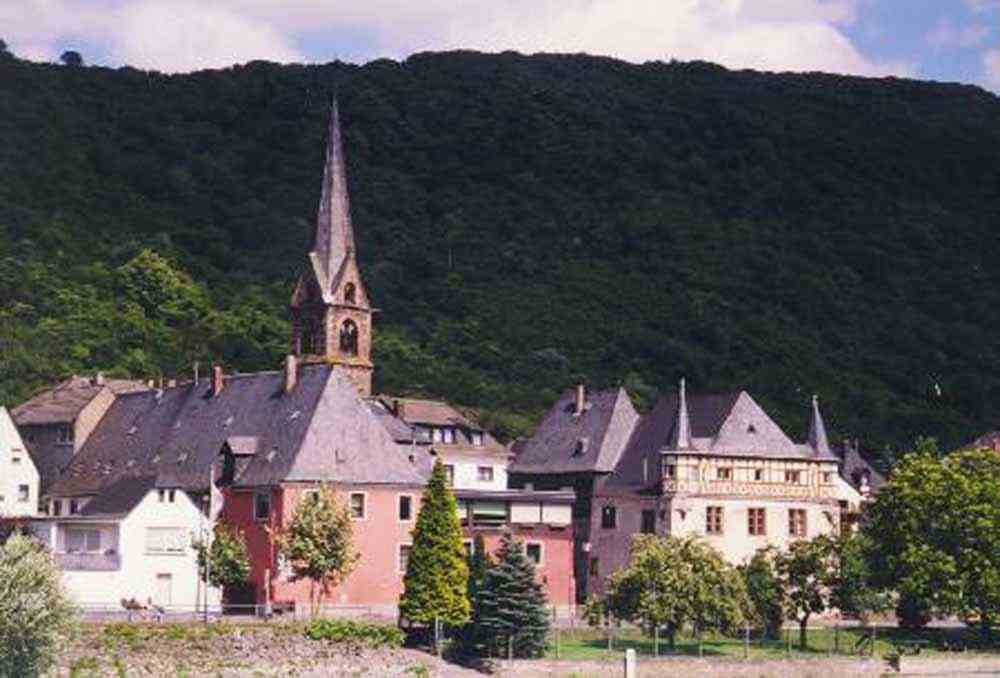
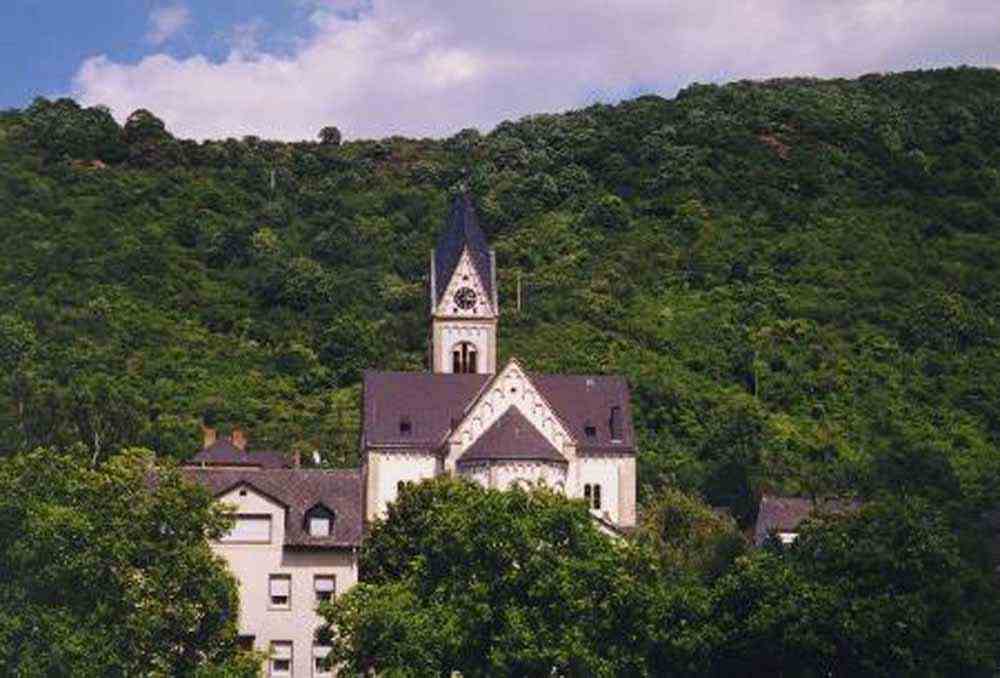
The building with the weather vane is a combined church and hotel. You enter the church through the hotel.

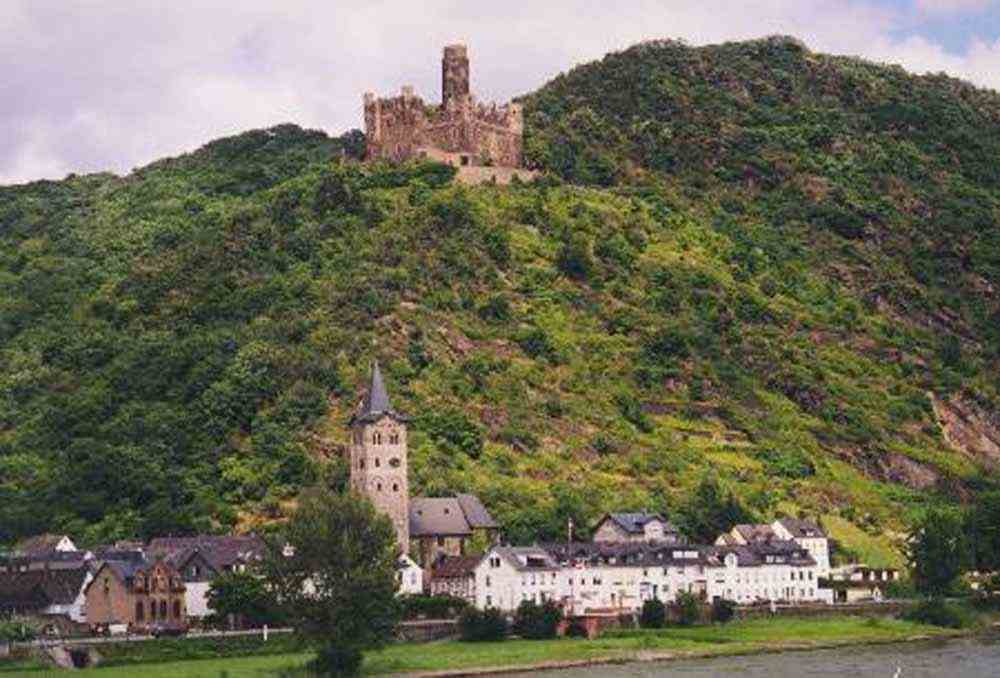
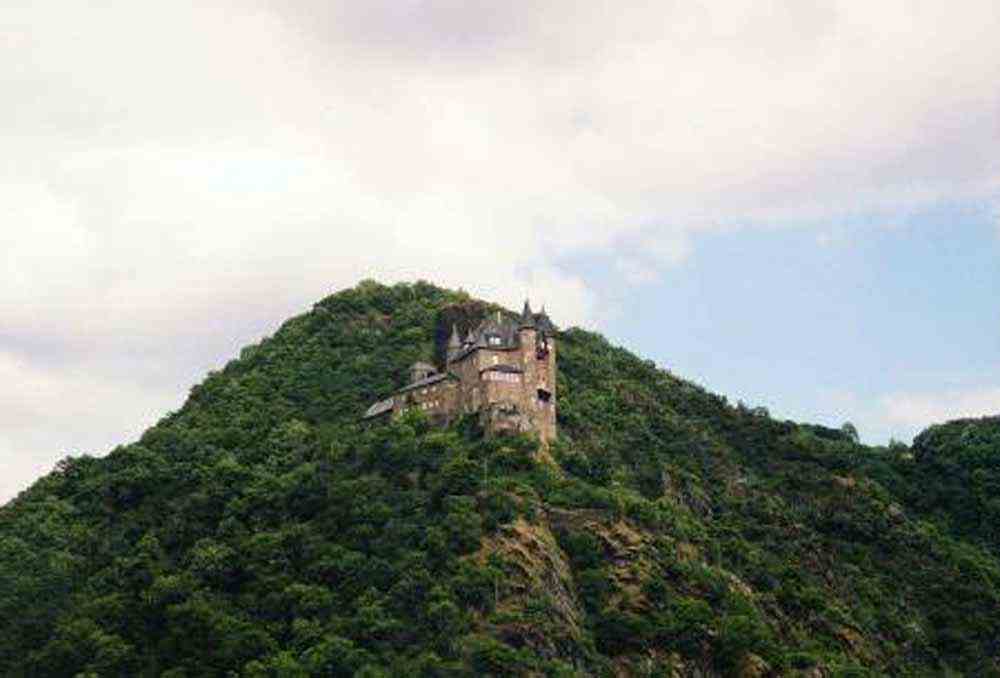
The Black Forest
Decorative figures on the wall of the restaurant where we had lunch in the Black Forest at Hofgut Sternen.
The hatch in the middle opened on the hour to present a typical cuckoo clock display.
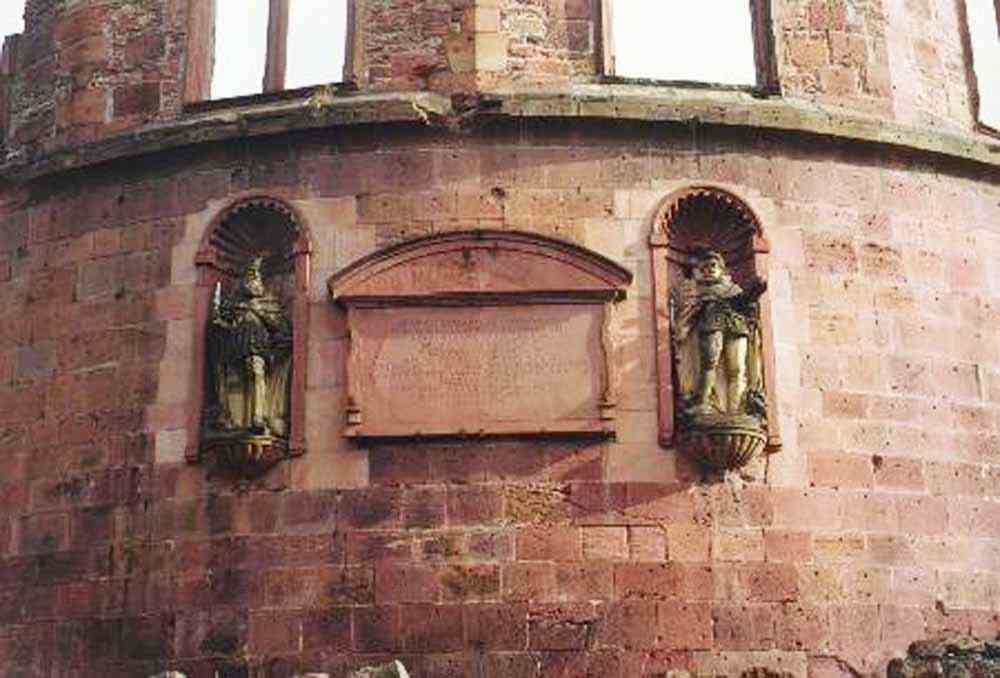
A colourful display at the restaurant where we had lunch in the Black Forest.
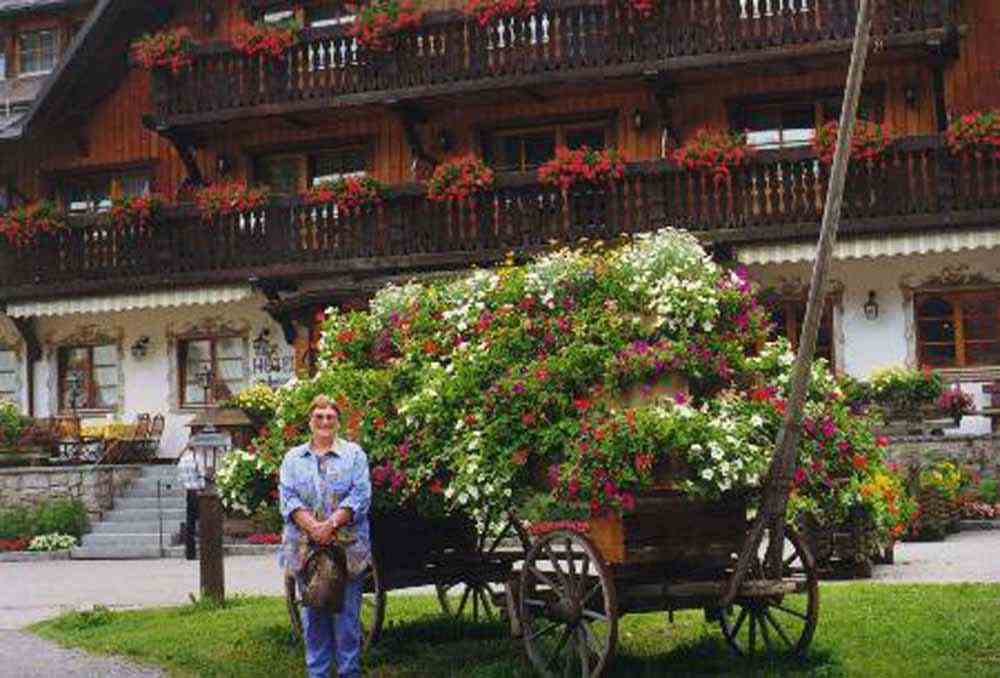
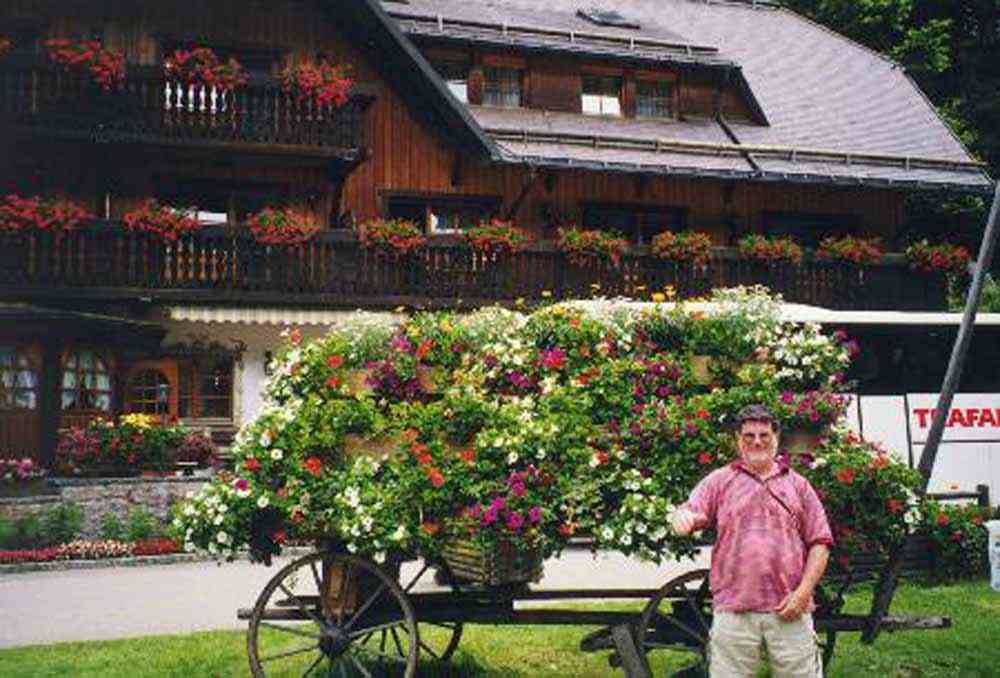
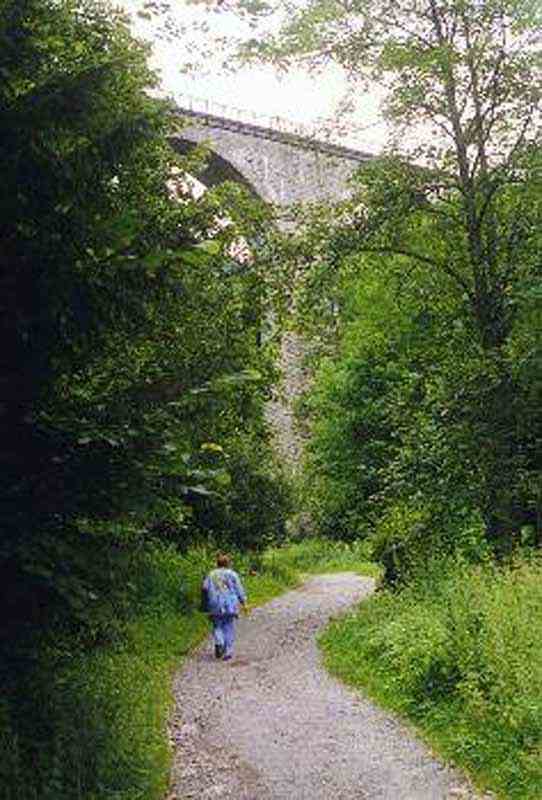
Picturesque Lake Titisee near the Black Forest.

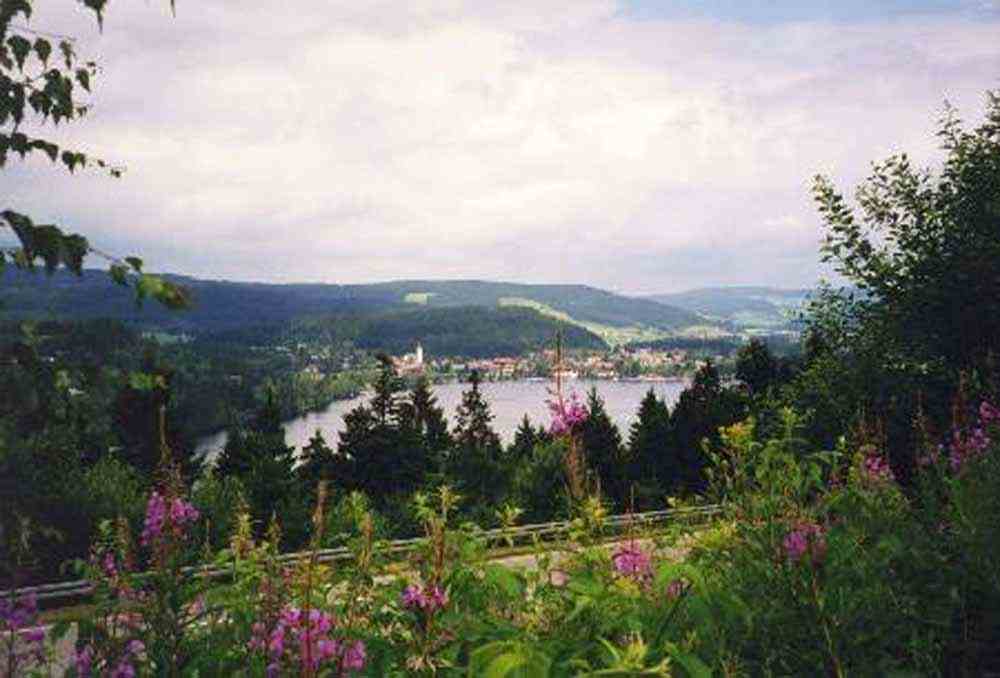
Heidelberg
At Heidelberg Castle.
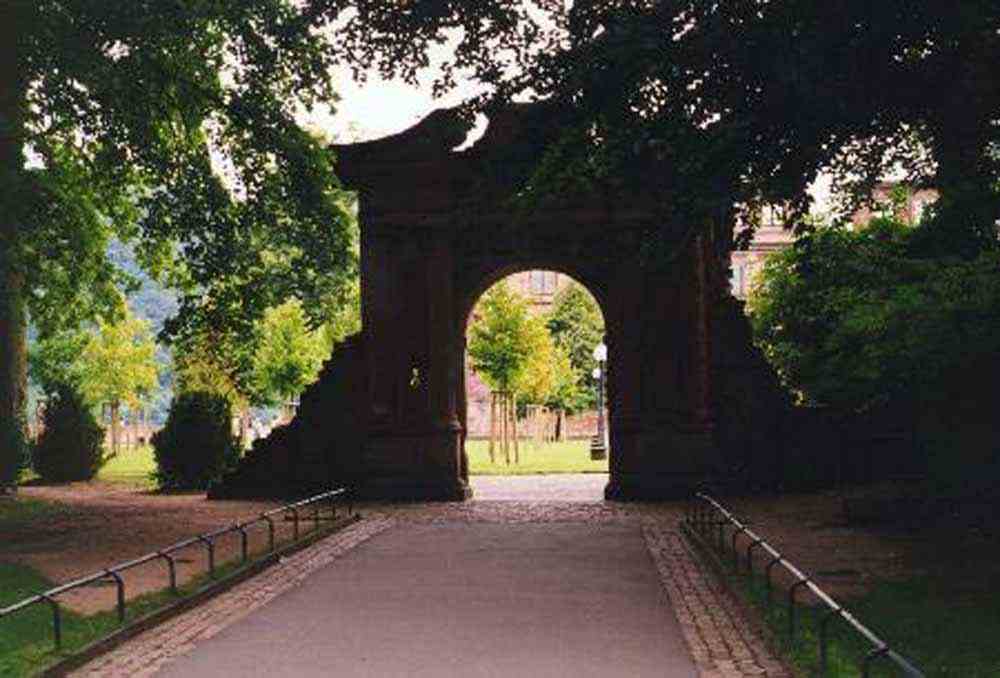
The earliest castle structure was built before 1214 and later expanded into two castles circa 1294.
However, in 1537, a lightning bolt destroyed the upper castle. The present structures had been expanded by 1650, before damage by later wars and fires.
In 1764, another lightning bolt caused a fire which destroyed some rebuilt sections.
The castle has only been partially rebuilt since its demolition in the 17th and 18th centuries.
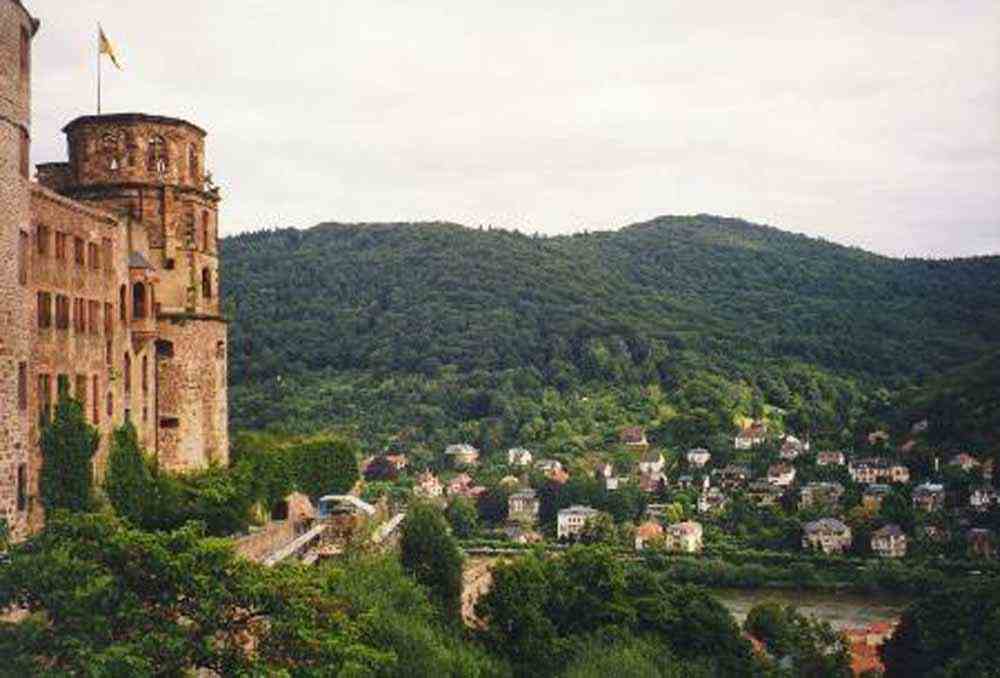
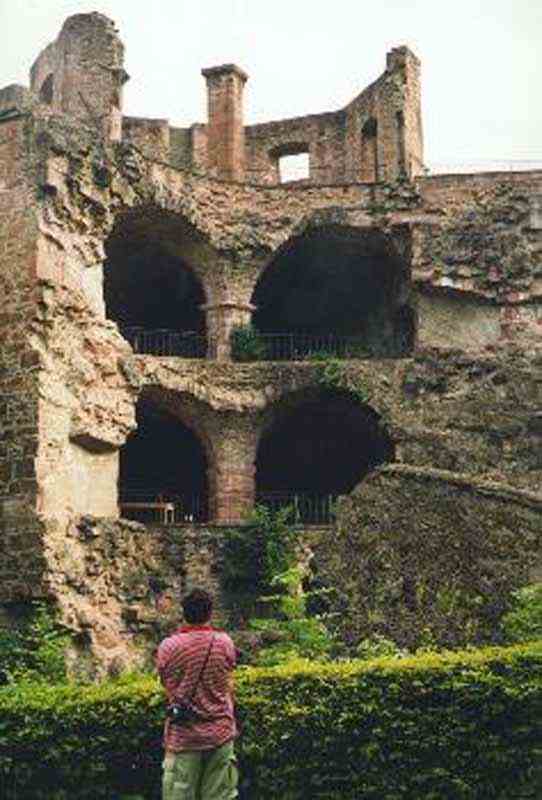
From here we visited the Rhine Falls in Switzerland, and our 1999 Western European continued through Austria,
Italy, France, Spain, and back to Dover from Calais in France.
Photos from our 2002 trip
With an around the world air ticket, we flew out of Melbourne on the 10th of May to Vancouver in Western Canada.
We then flew to Calgary and after a week in Alberta we then flew to Frankfurt in Germany.
From here we went on a Trafalgar Highlights of New Europe tour.
(Frankfurt to Berlin, Poland, Slovakia, Hungary, Austria, The Czech Republic and Rothenburg before returning to Frankfurt.)
After this tour we flew to Istanbul in Turkey and went on a Trafalgar tour of Turkey.
Then to Singapore via Dubai and back to Melbourne after 54 days.
After flying over the North Pole from Calgary to Frankfurt.
We stayed at nearby Wiesbaden before the Eastern European tour on which we went to Berlin first, then on to Poland.
Unfortunately our cameras were stolen from our room at the hotel at the start of this tour in Frankfurt.
We bought new cameras in Berlin but did have a chance to take photos there.
After visiting Poznan, Warsaw, Czestochowa and Krakow in Poland, We travelled through Slovakia to Budapest in Hungary.
Then to Vienna in Austria and Prague in the Czech Republic.
We re-entered Germany and visited Rothenburg.
Rothenburg
Rothenburg ia a well-preserved medieval old town in Barvaria.
Apart from the cars through its streets is like what it was in the 1700's.
Most of the buildings were tourist shops. They have metal silhouette signs that depict the type of business. Spot the McDonalds!
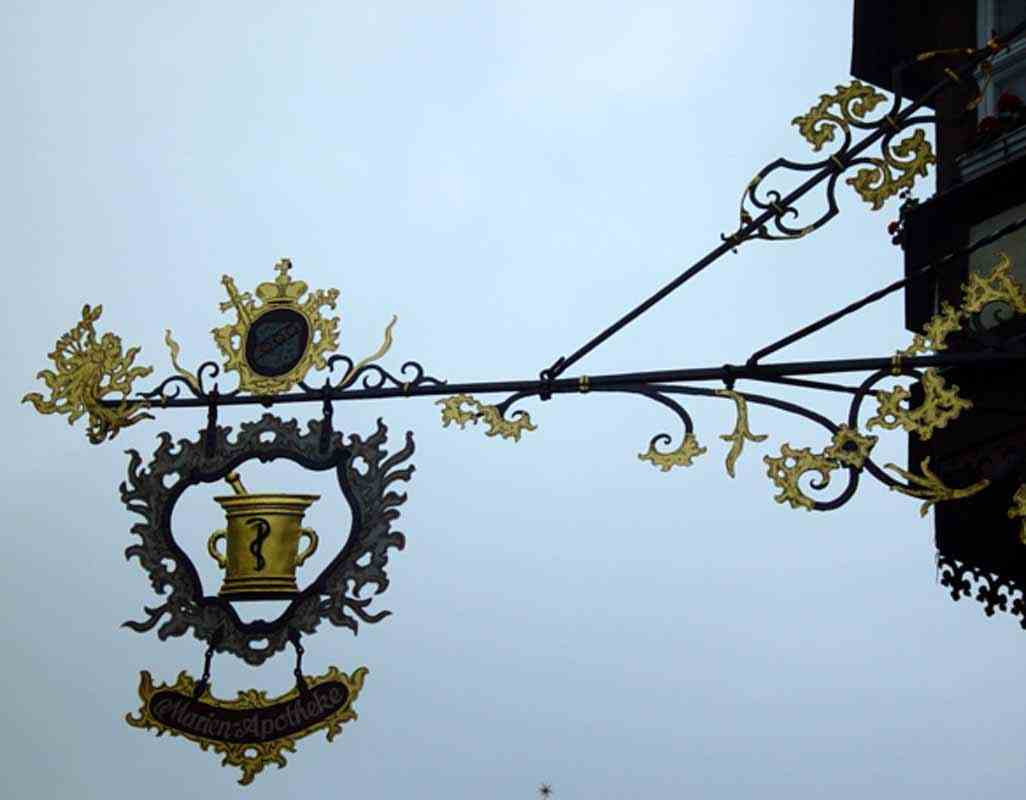
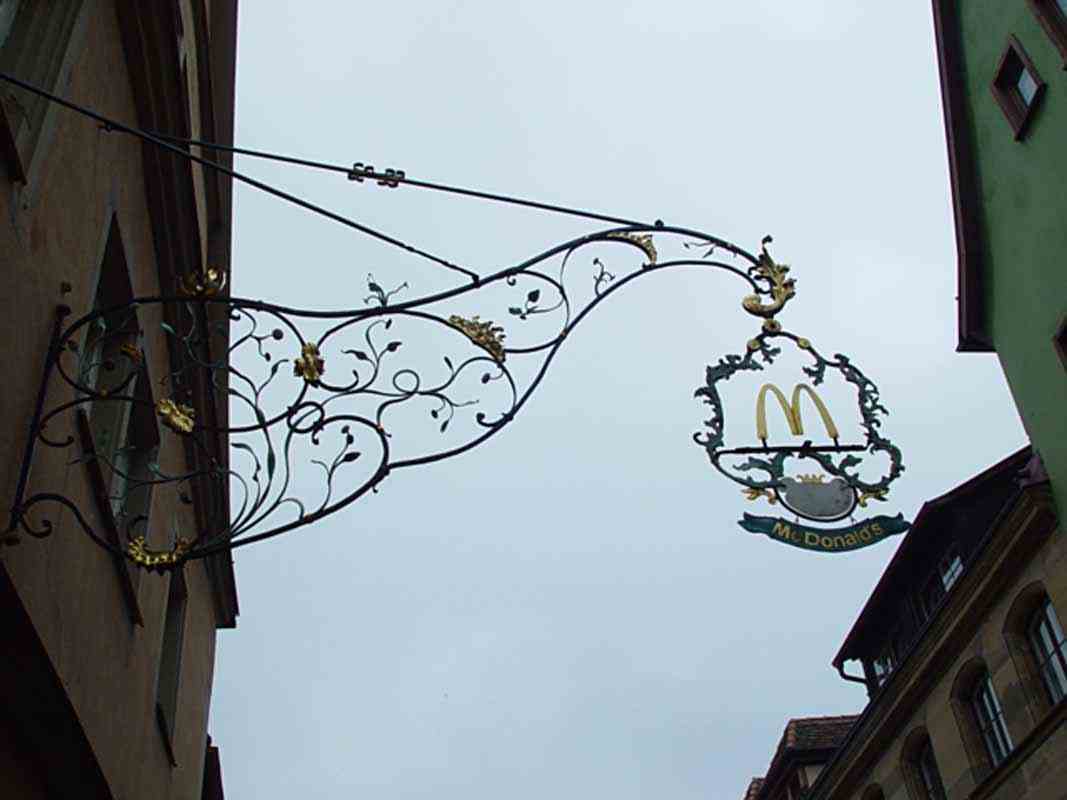
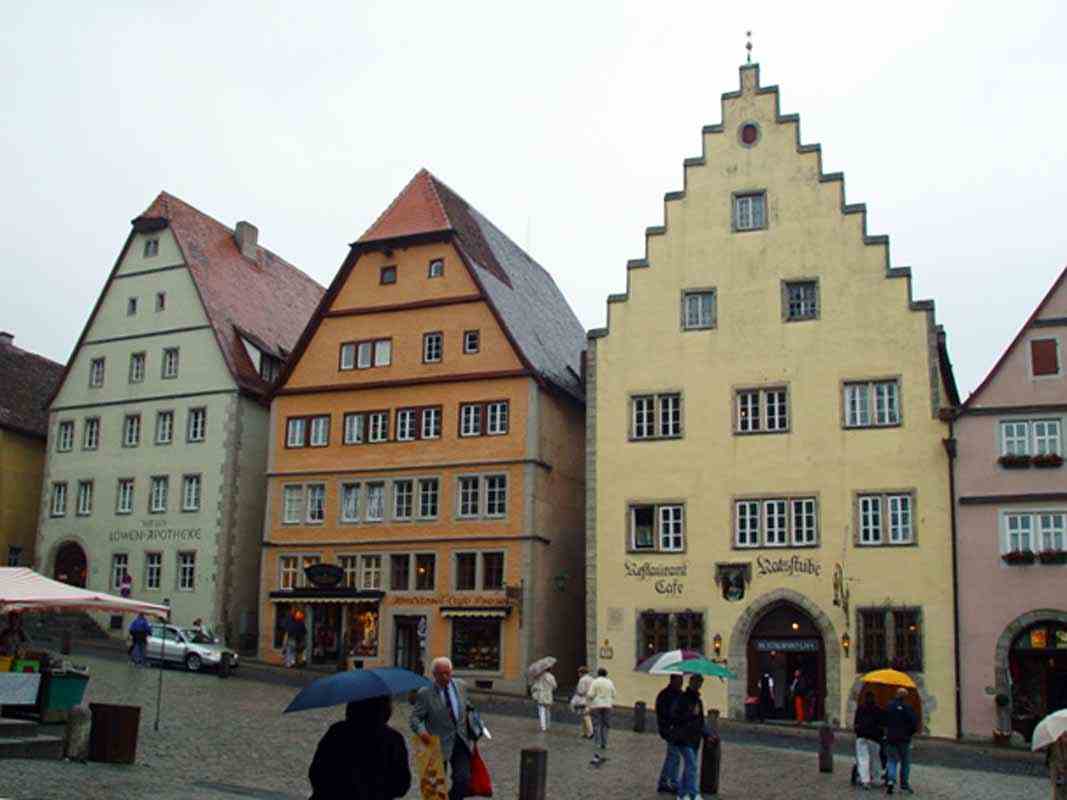
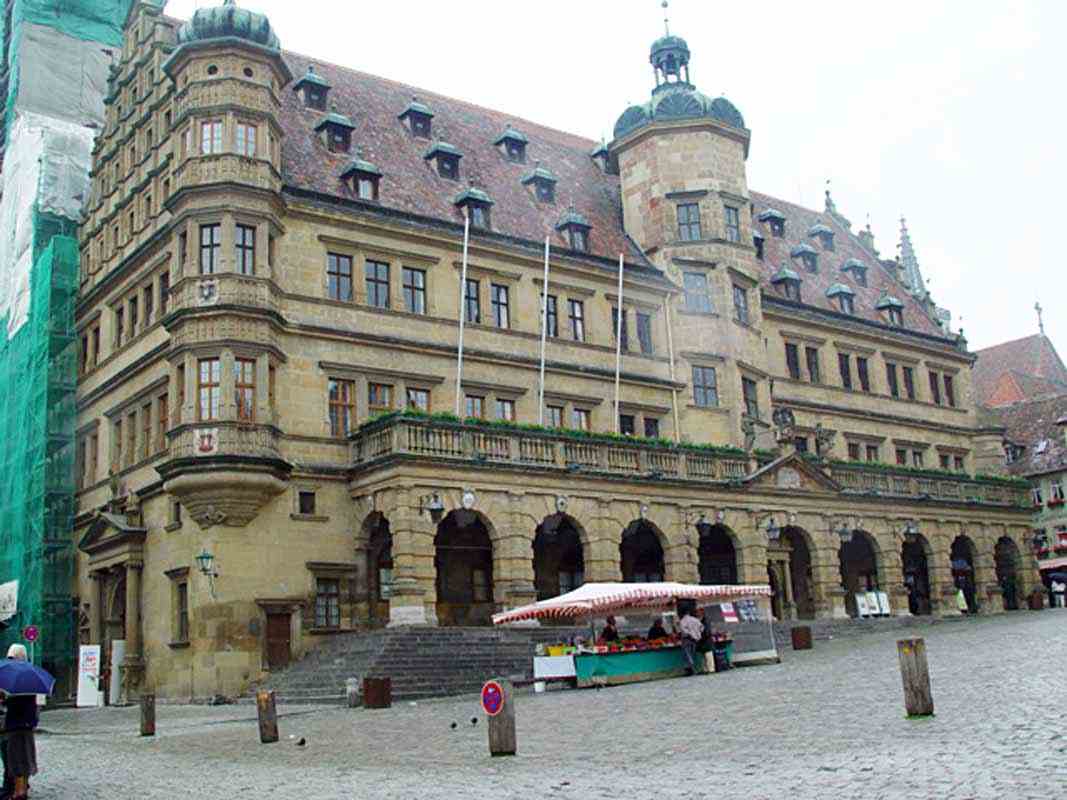
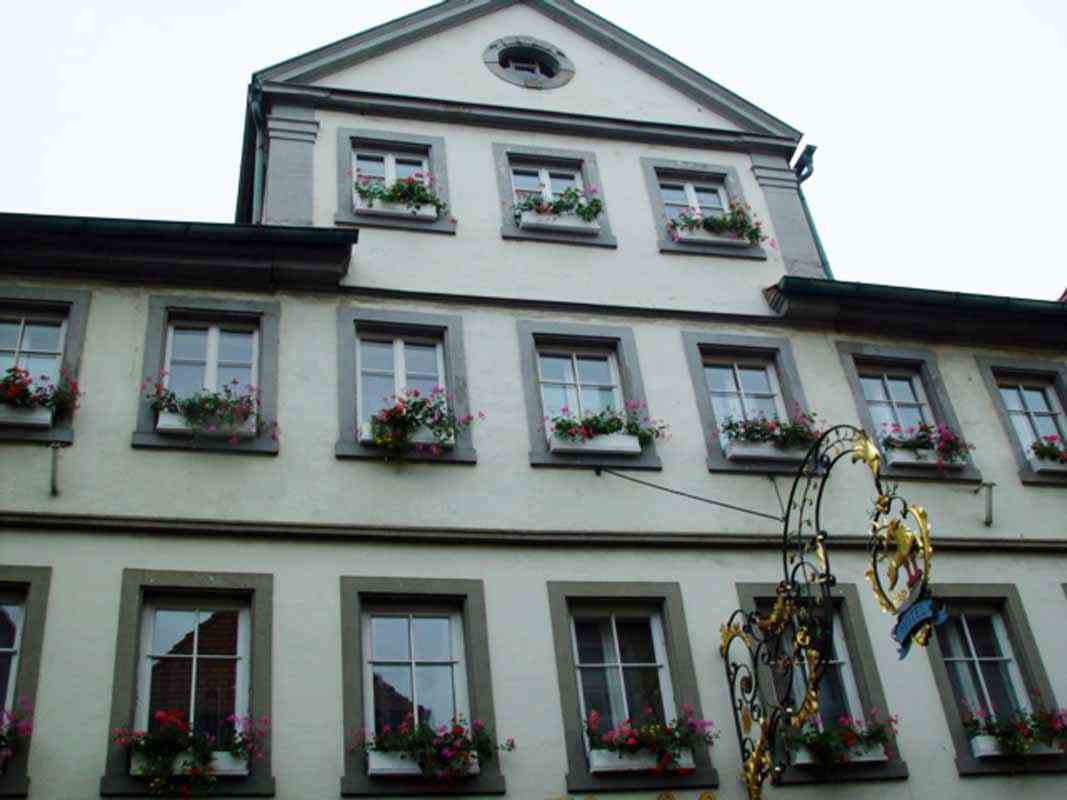

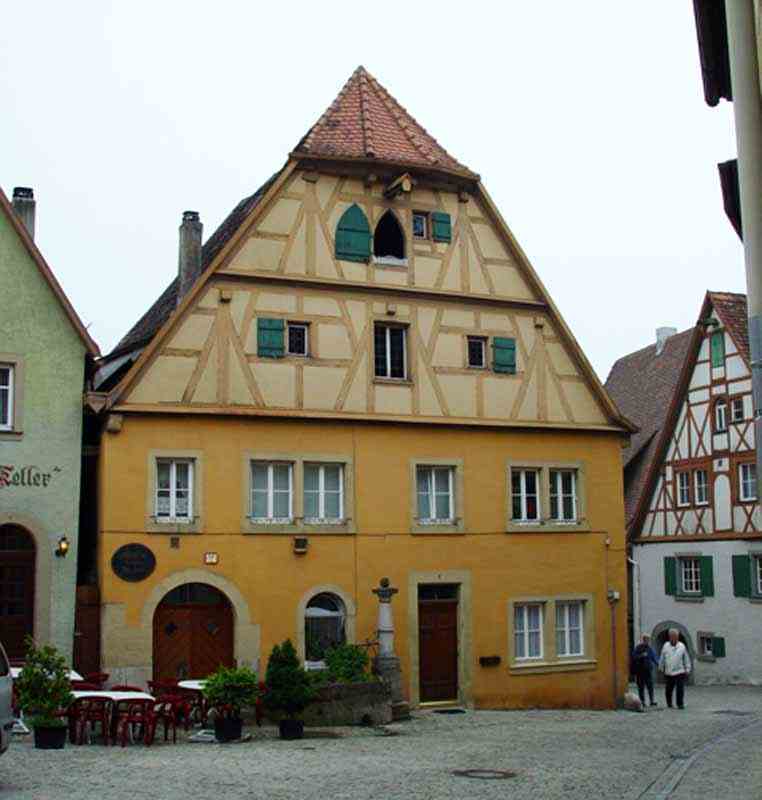
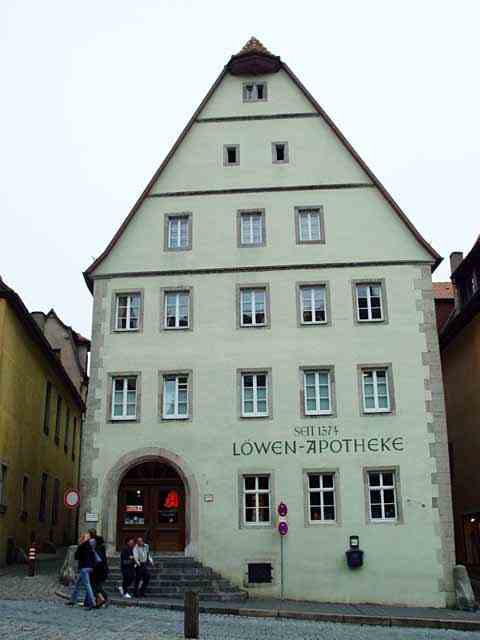
Like a number of other European towns, the town hall clock opens windows depicting a story when striking on the hour.

The clock, installed in 1683, shows the Meistertrunk scene.
This is the famous moment in 1631, when at General Tilly's command, ex-mayor Nusch drank almost a gallon of wine at one draught,
thereby saving the town from destruction.
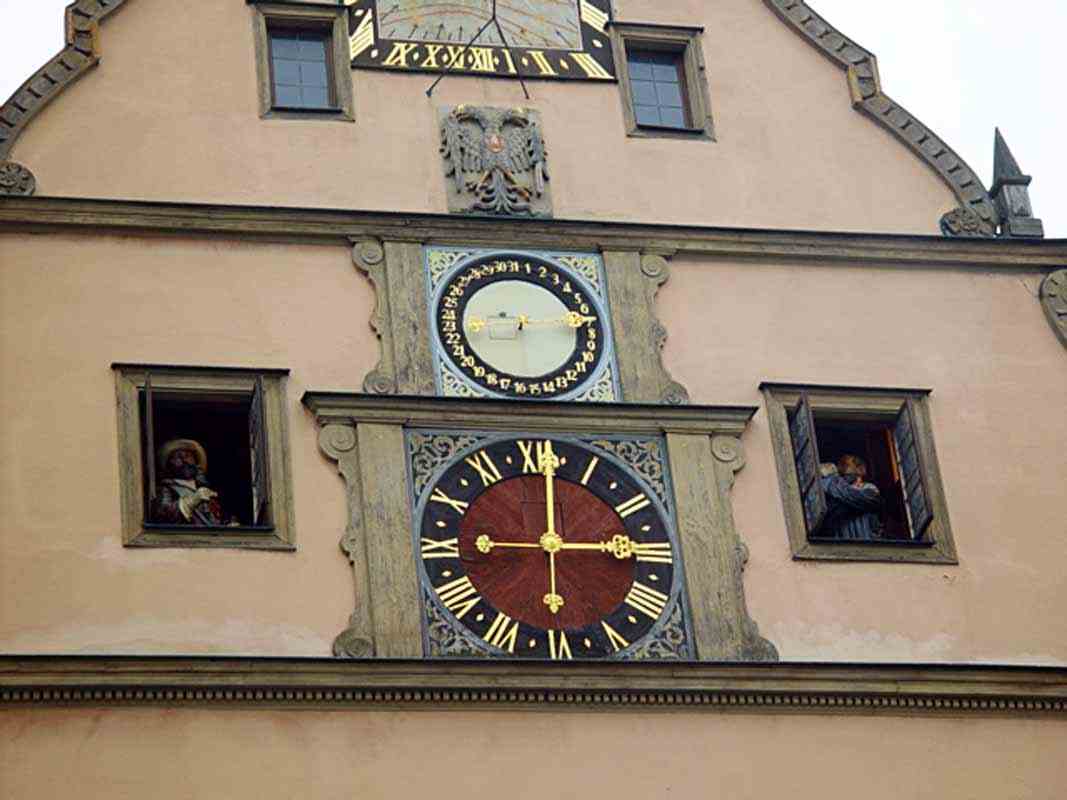
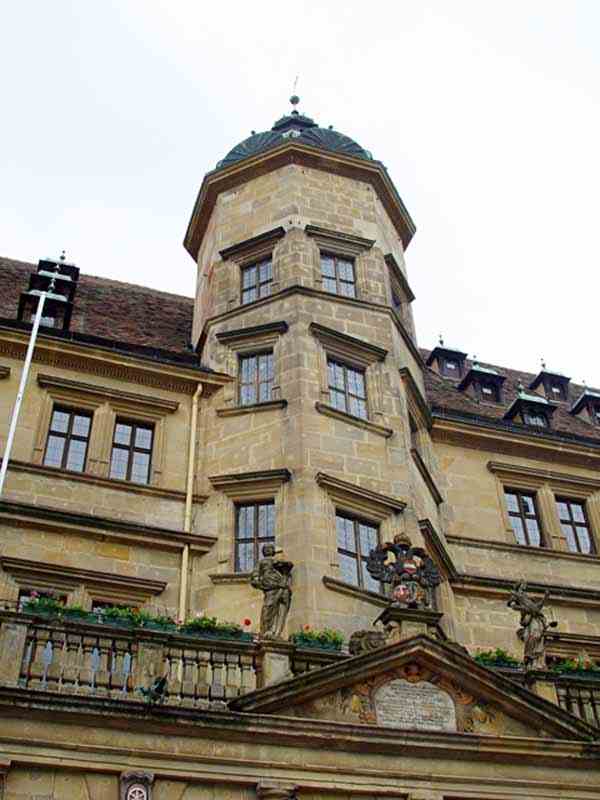
It was possible to climb up the inside off the tower of The Rathus (Town Hall).
The view of the town and countryside from the top.

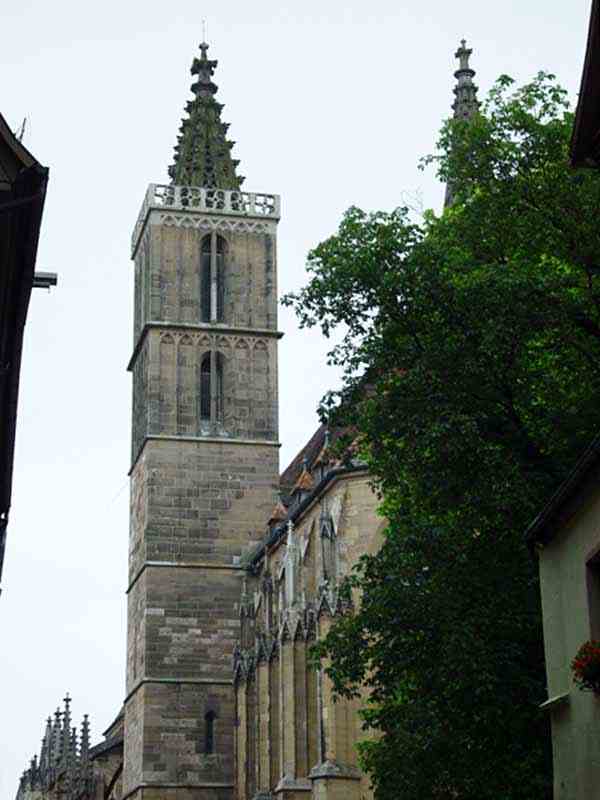
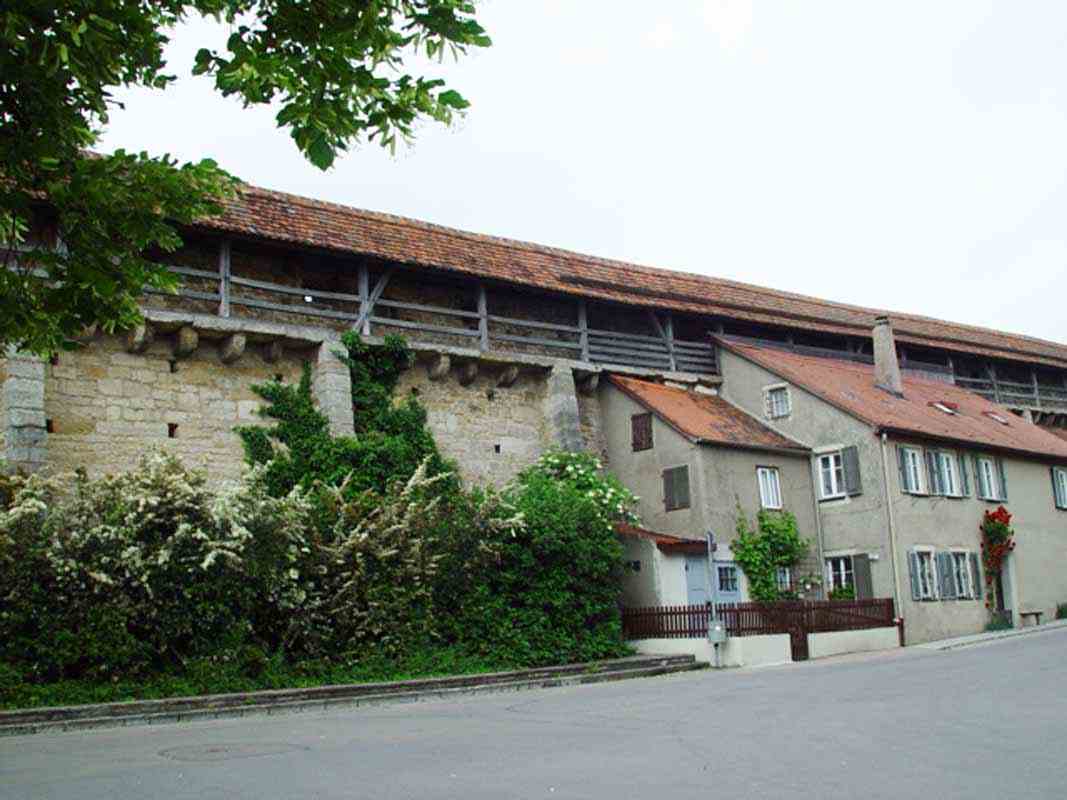
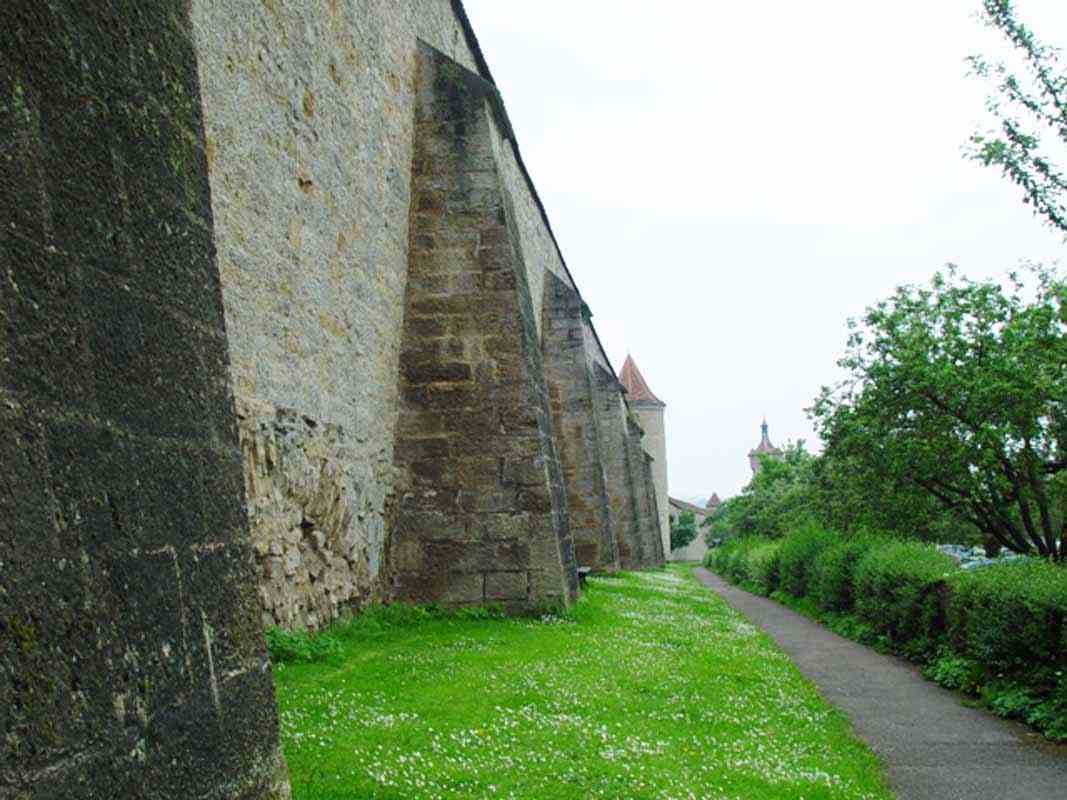
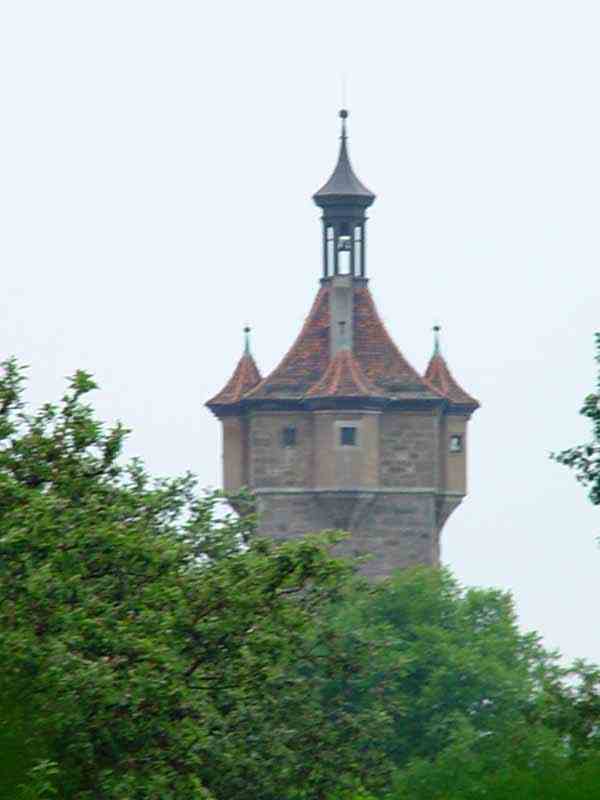
Our Eastern European tour finished at Frankfurt and again we stayed at nearby Wiesbaden.
Wiesbaden
Neat and colourful gardens at Wiesbaden.

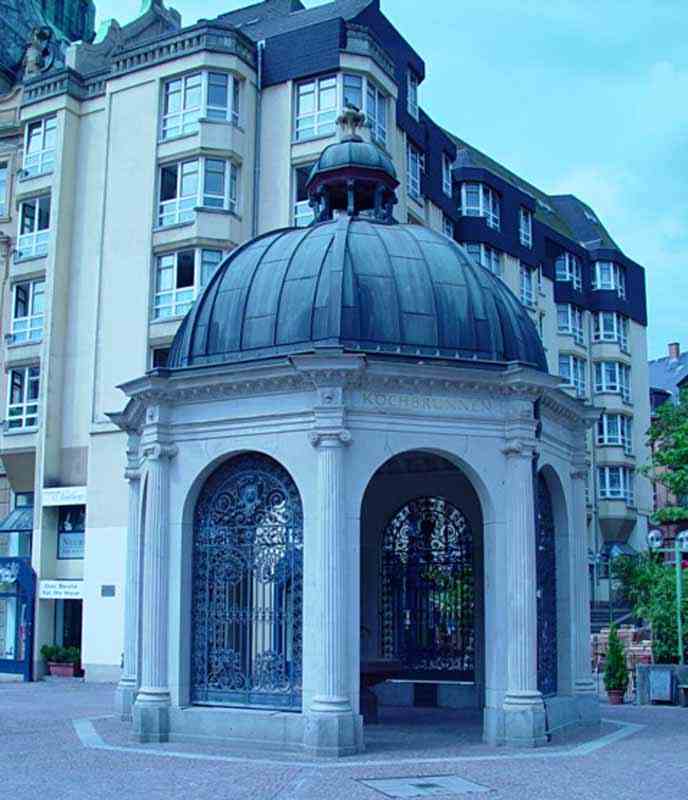
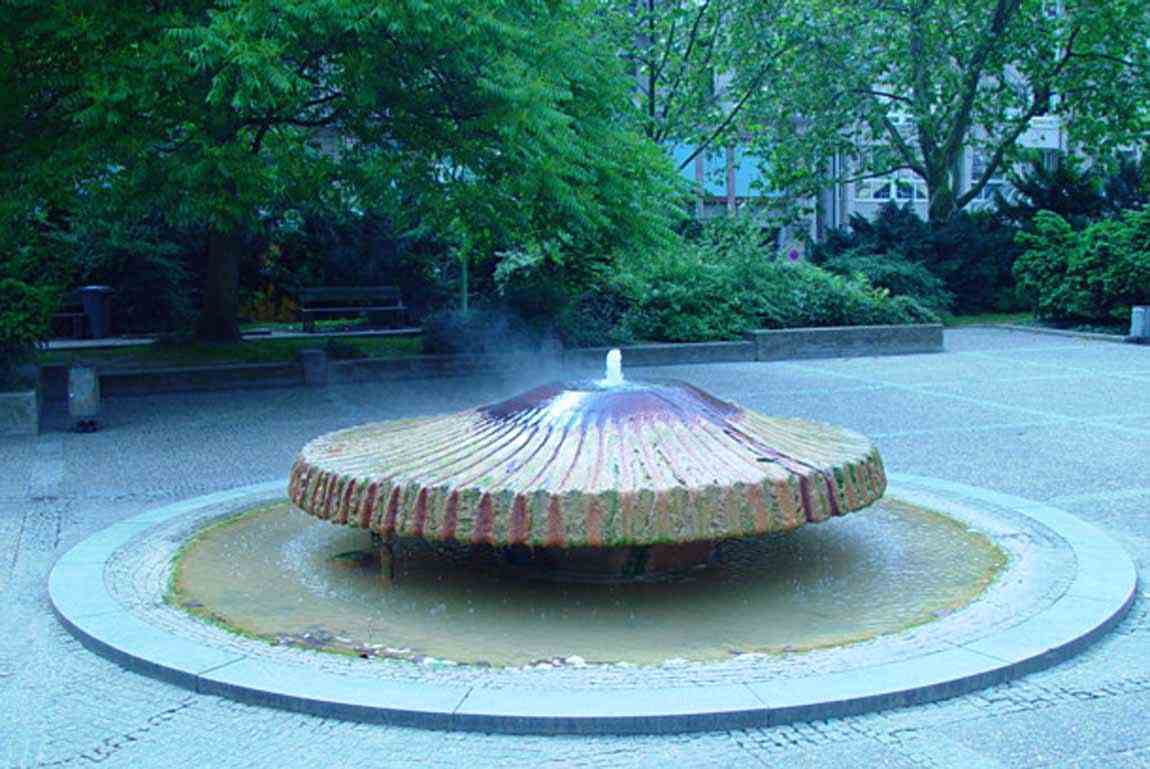
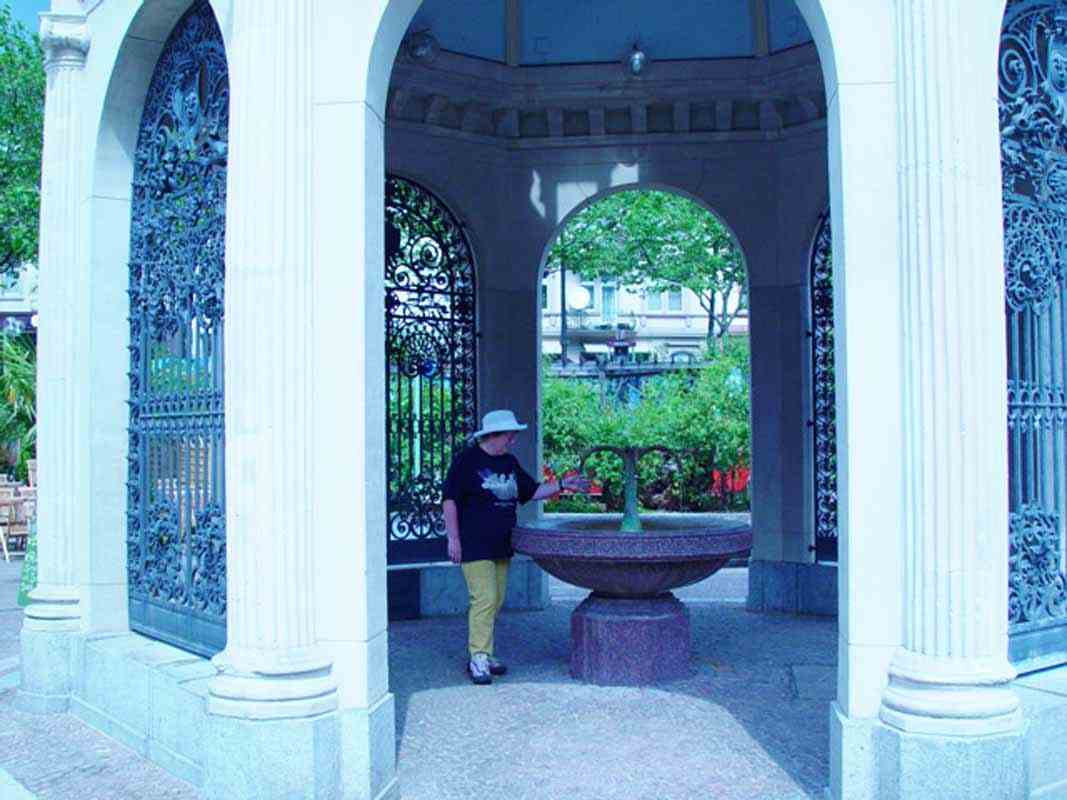
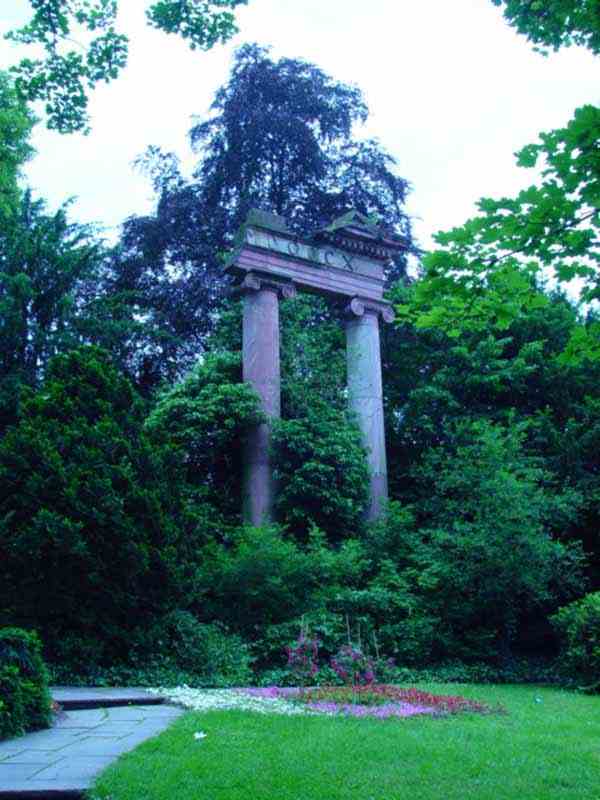
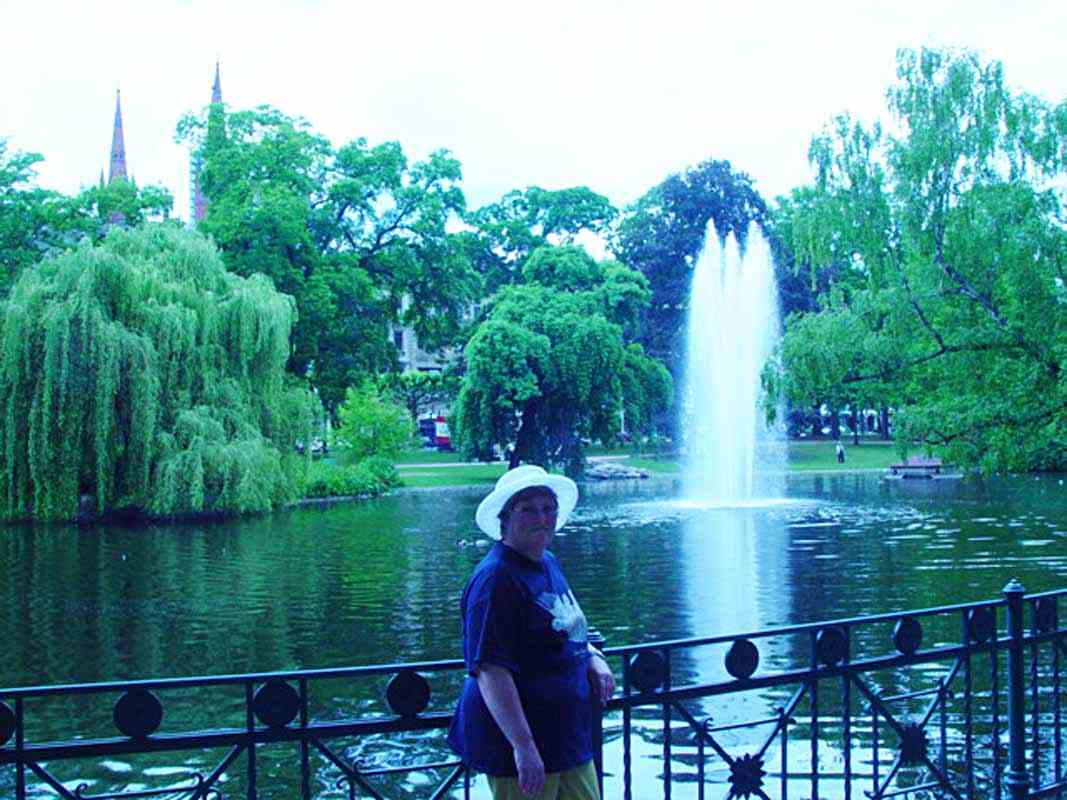
The street festival, Wilhelmstrassfest, was near our hotel. It was very, very crowded.
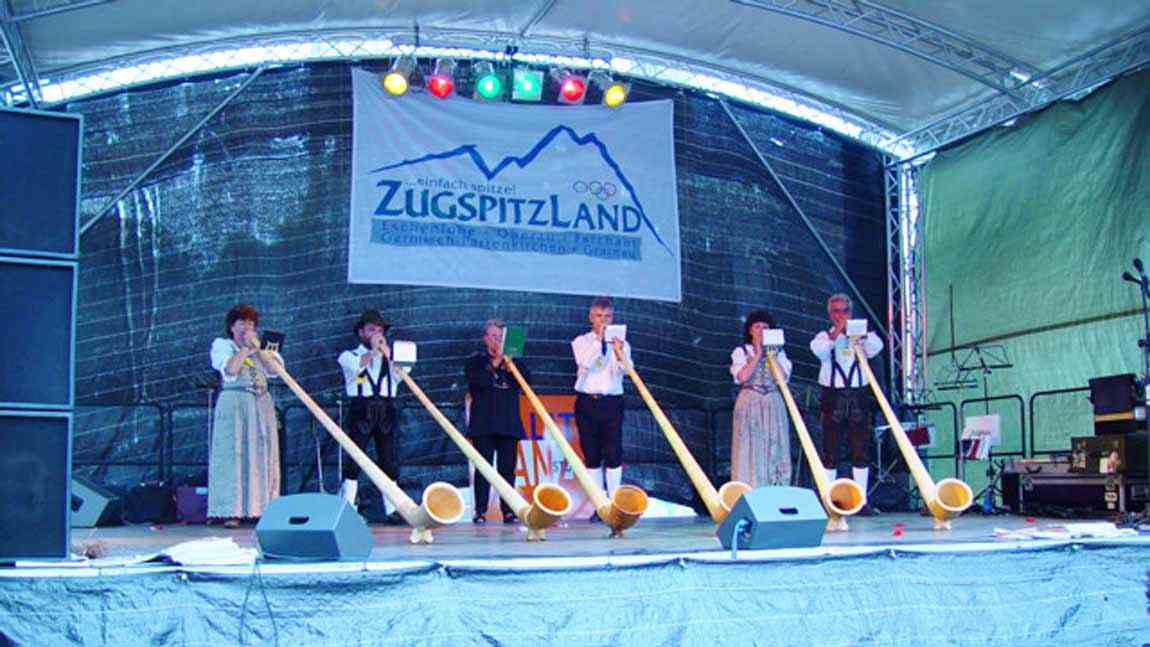
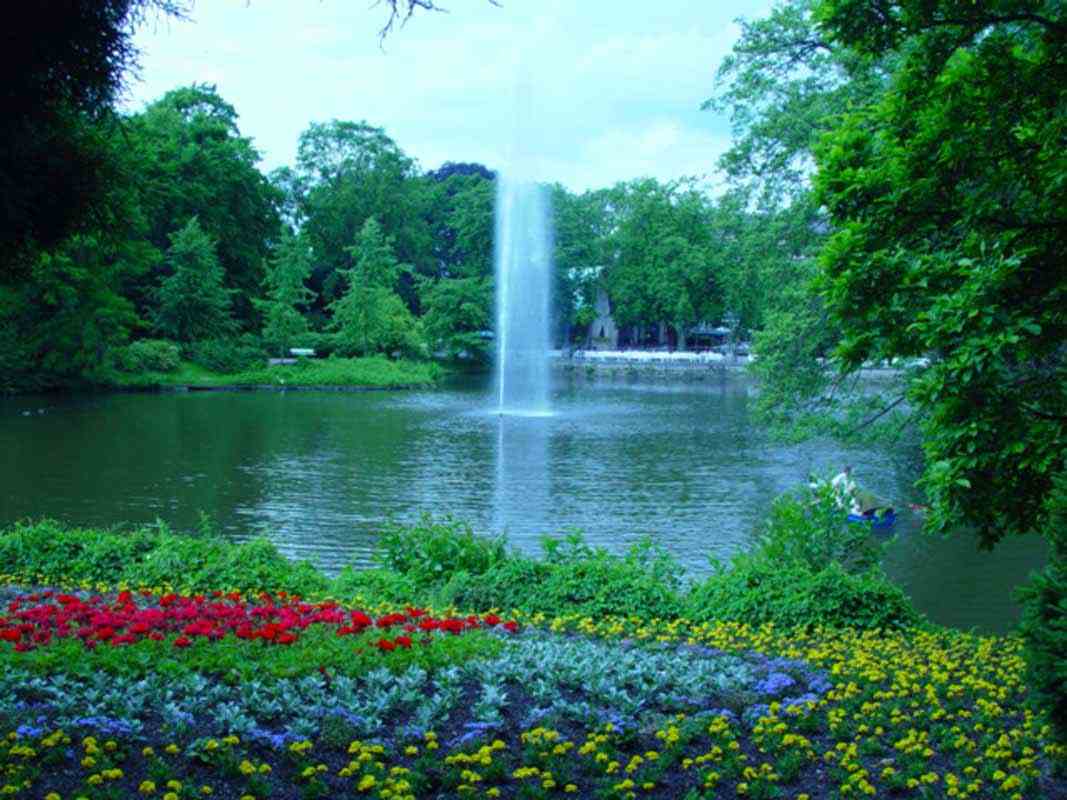
Our friend Harriet drove us to vineyards near Wiesbaden.
With her friend Sylvia we first went to a winery overlooking the Rhine River.
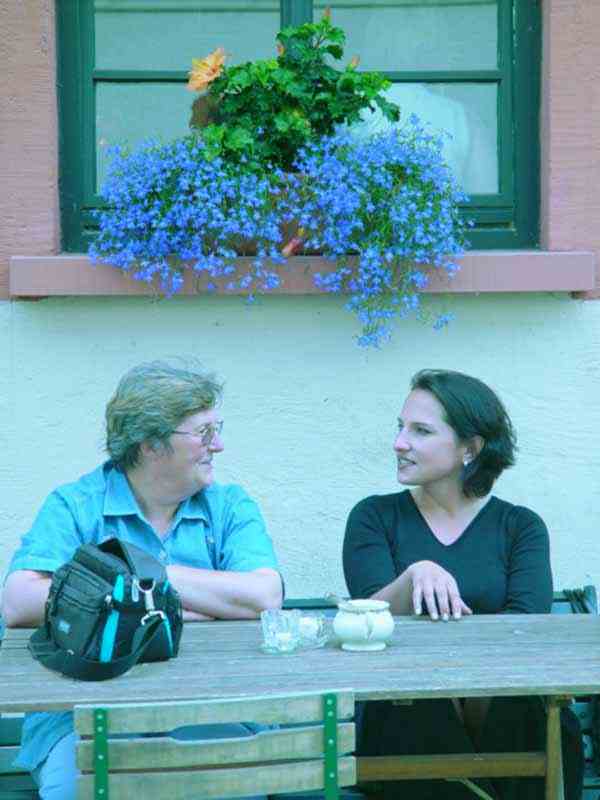

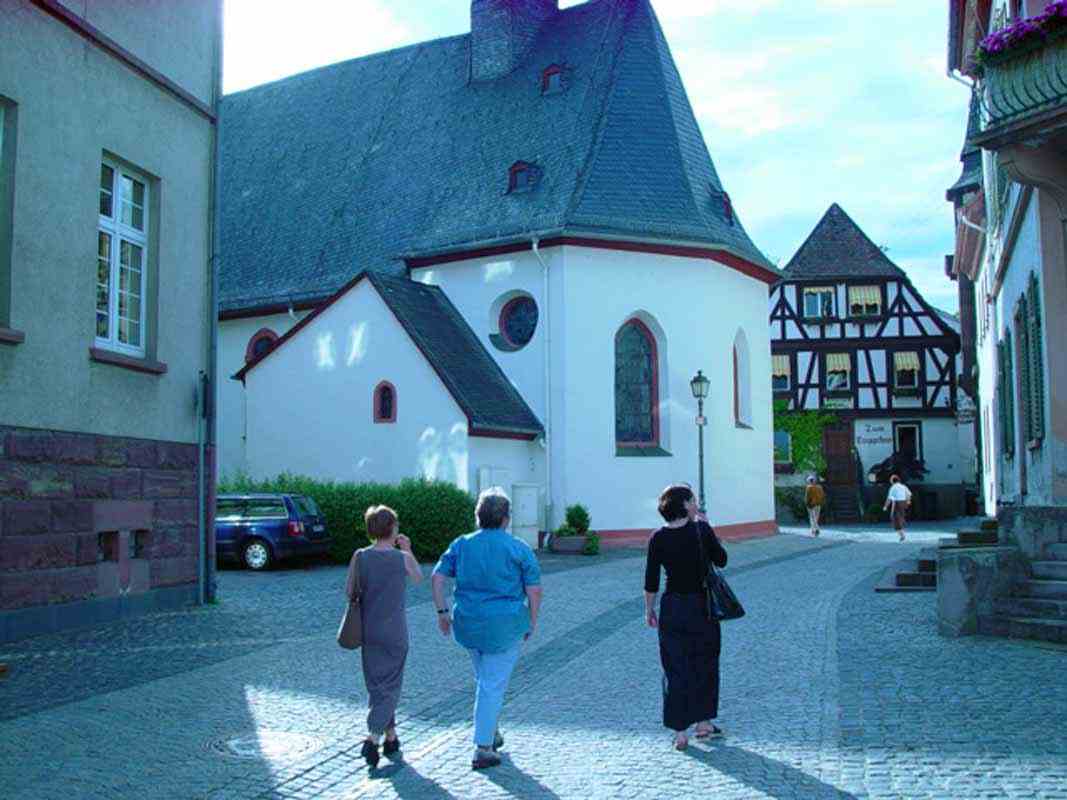
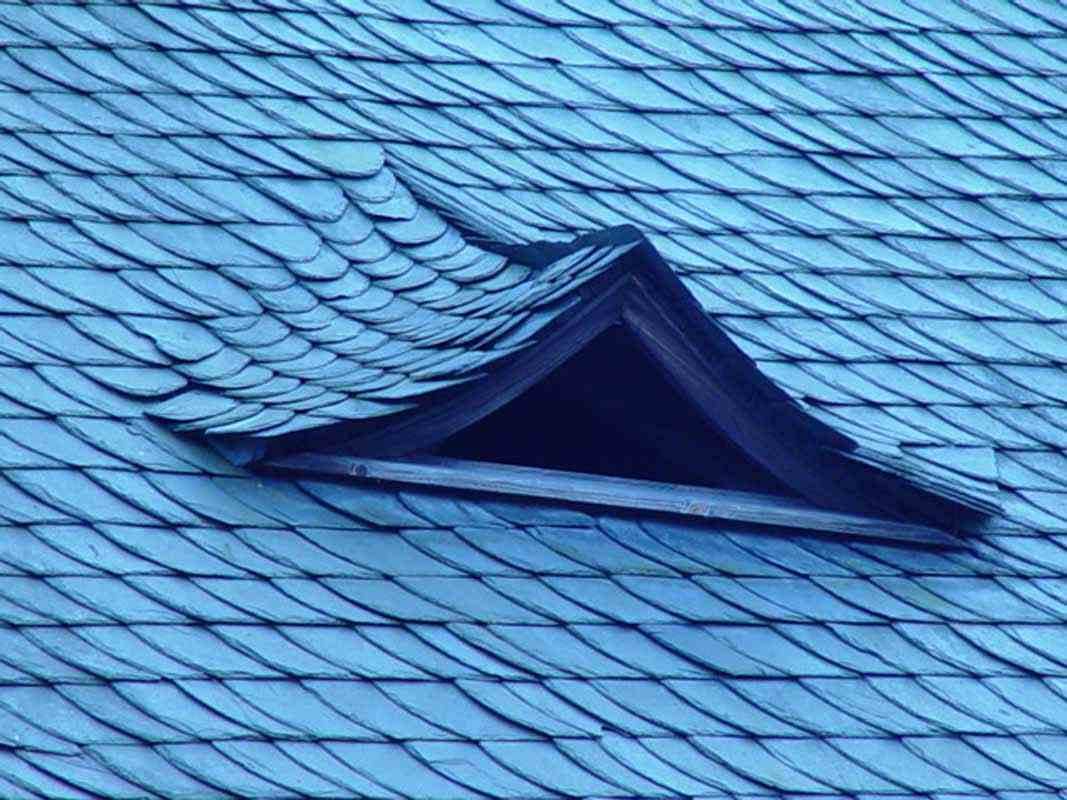
Next Harriet took us to an estate privately owned by the Metternick wine company.
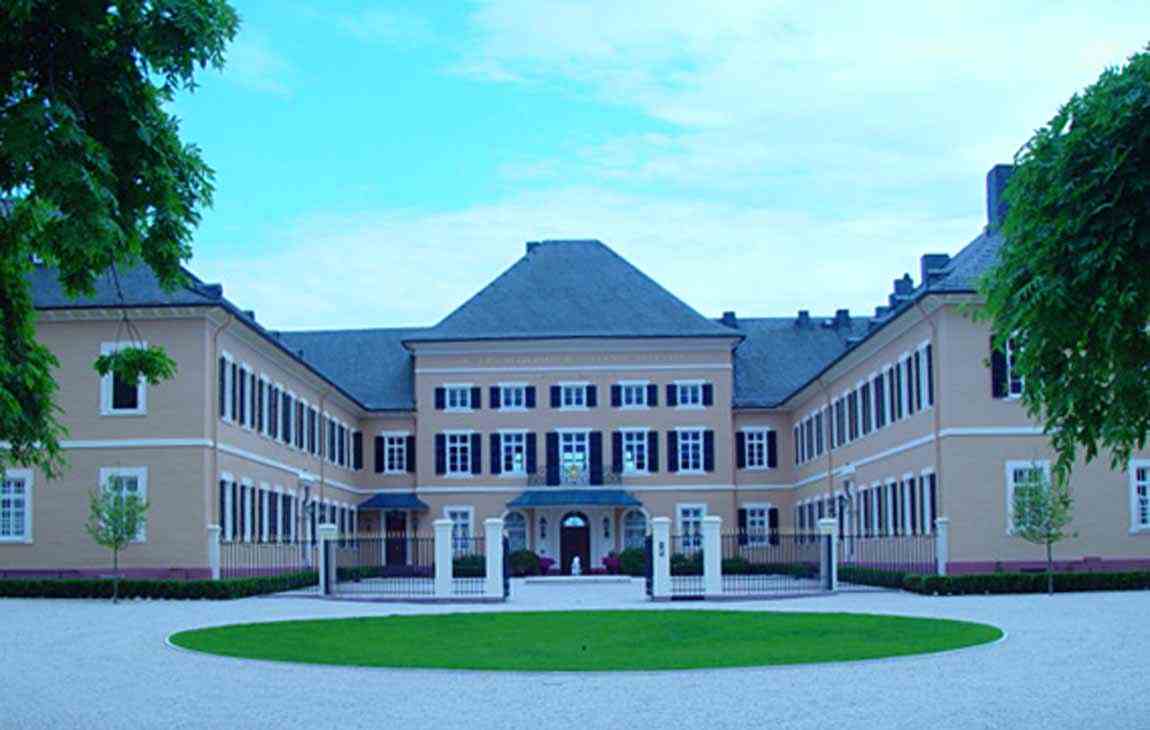
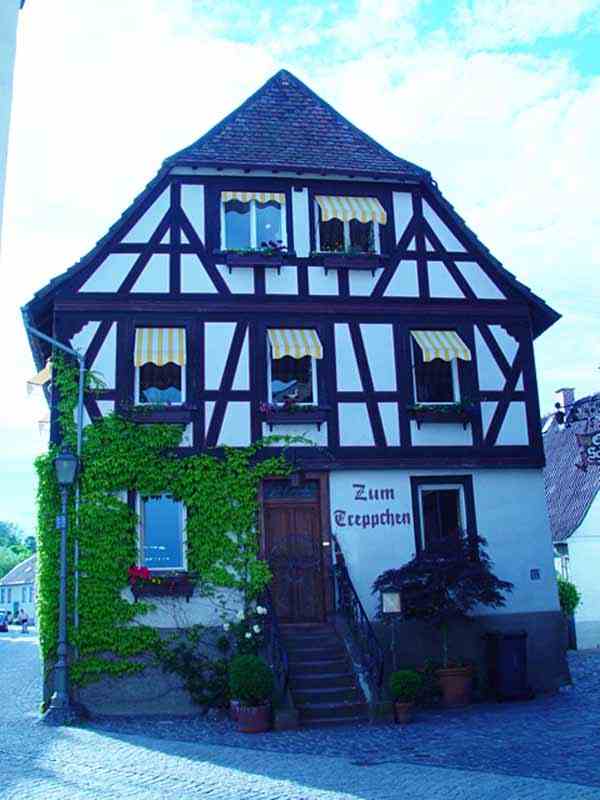
A German high-speed train at Wiesbaden station.

The Seckenberg museum in Frankfurt.

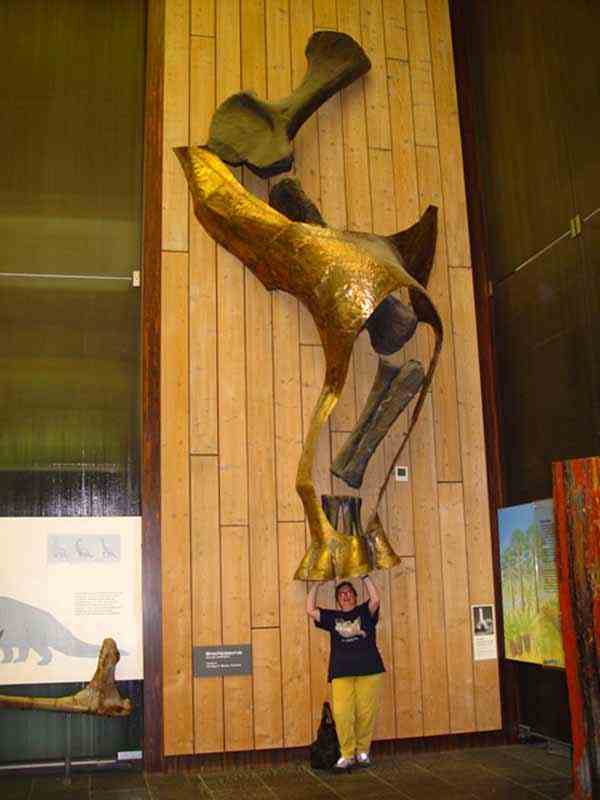
Frankfurt Zoo
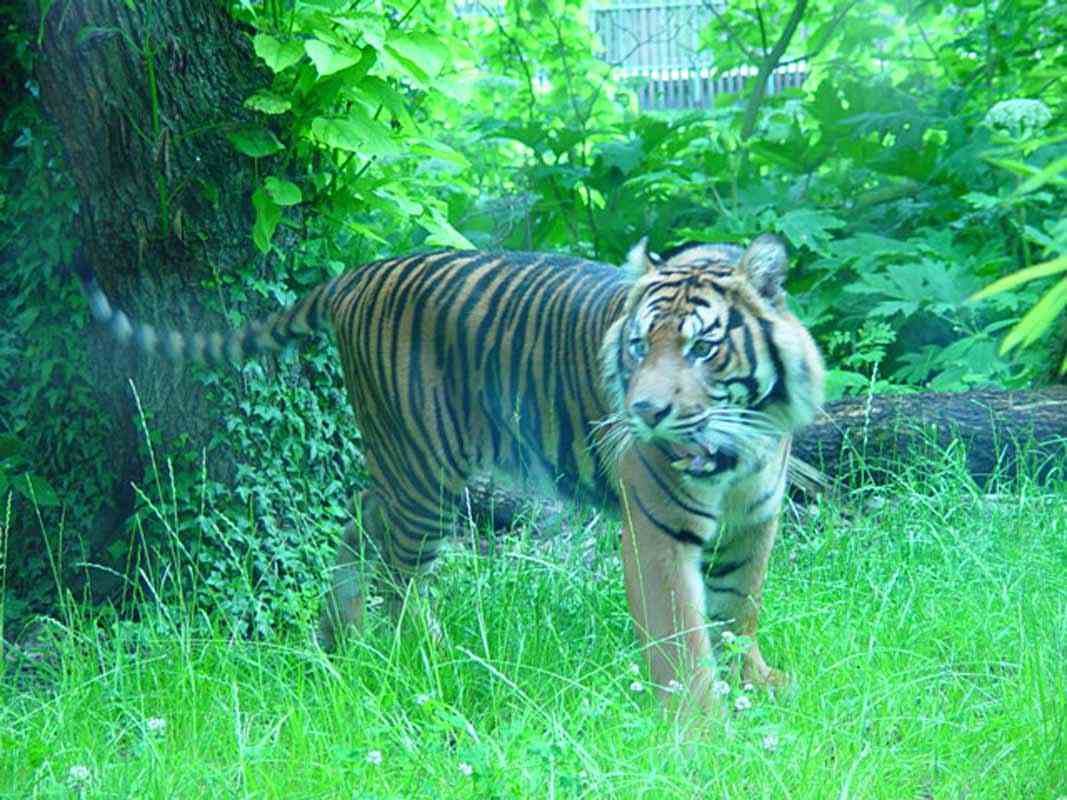
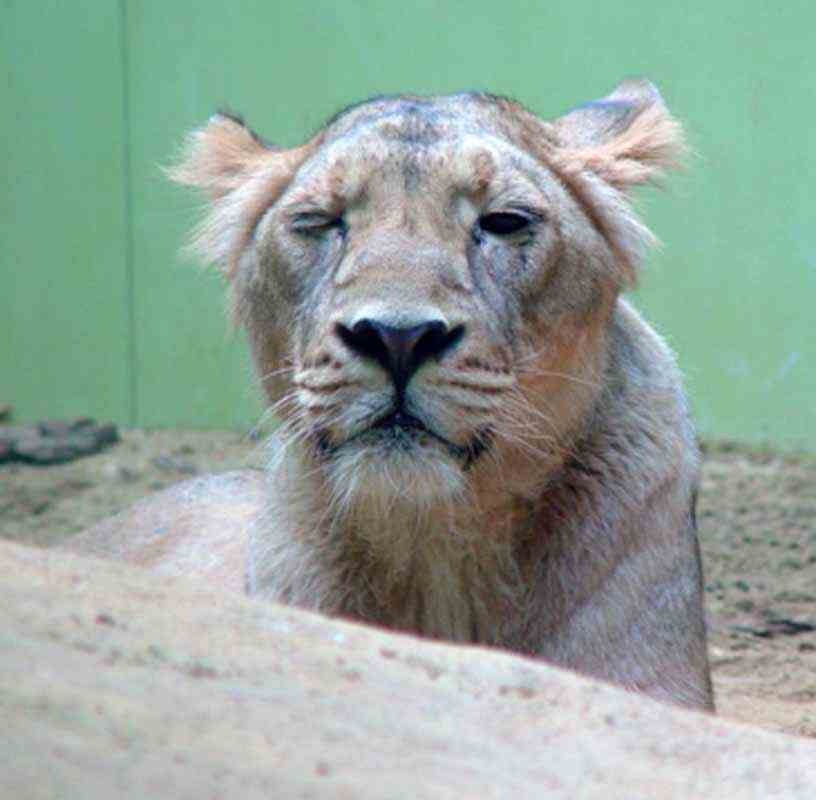
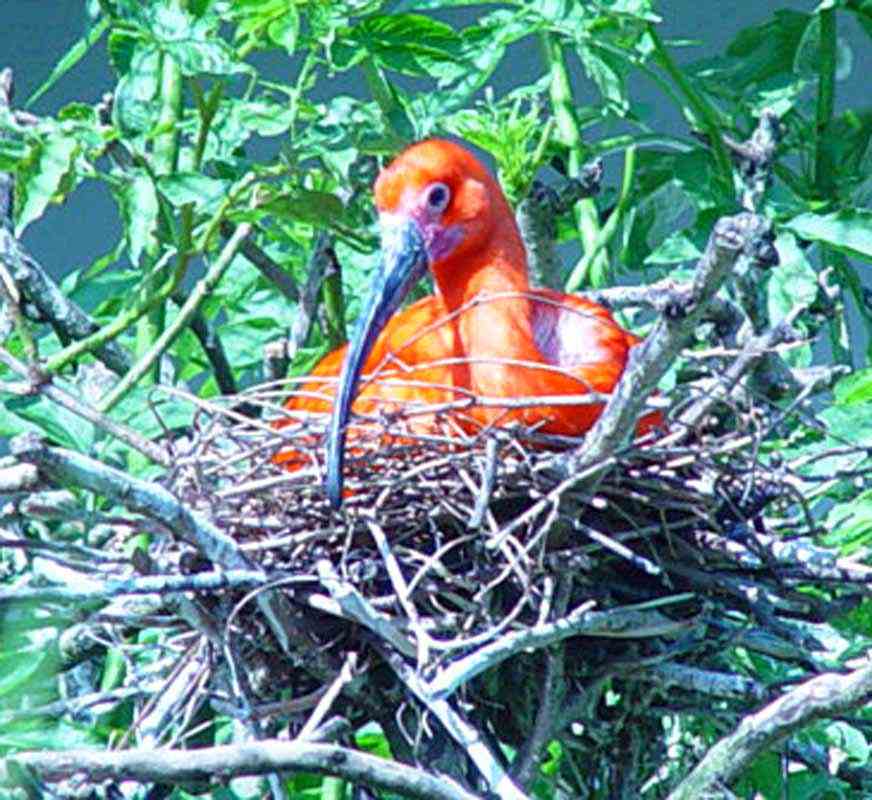
From Frankfurt we flew to Istanbul in Turkey.
After a 14-day tour of Turkey we flew to Singapore.
After 2 nights there we flew home.
A great 53-day around the world tour.
Photos from our 2014 Rhine - Main - Danube River cruise
This river cruise was part of our 48-day Melbourne – Dubai – Dublin – Ireland – Amsterdam –
Rhine-Main-Danube River cruise – Istanbul – Dubai - Melbourne trip.
We boarded the River Duchess in Amsterdam and enteded Germany via the 72km-long Amsterdam-Rhine canal.
Our first stop was at Cologne.
Construction of Cologne Cathedral (Kölner Dom) commenced in 1248 and was halted in 1473, leaving it unfinished.
Work restarted in the 19th century and was completed, to the original plan, in 1880.
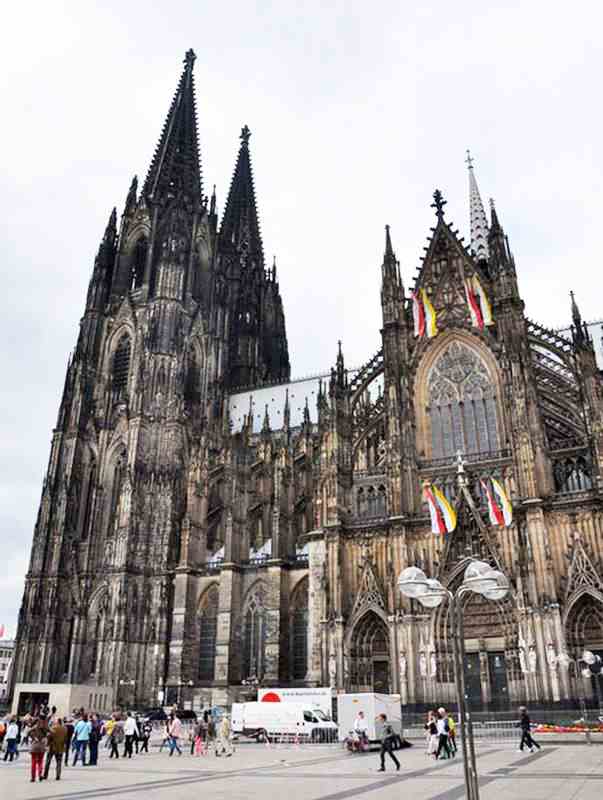
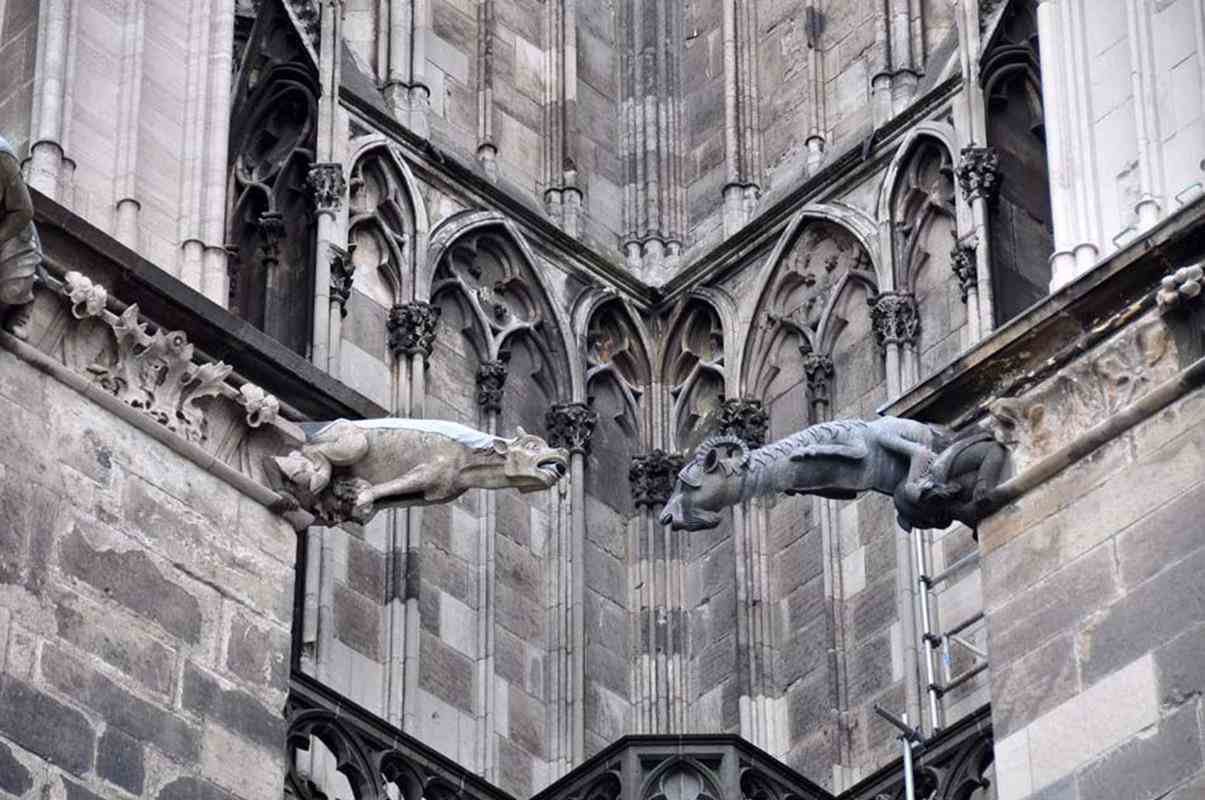
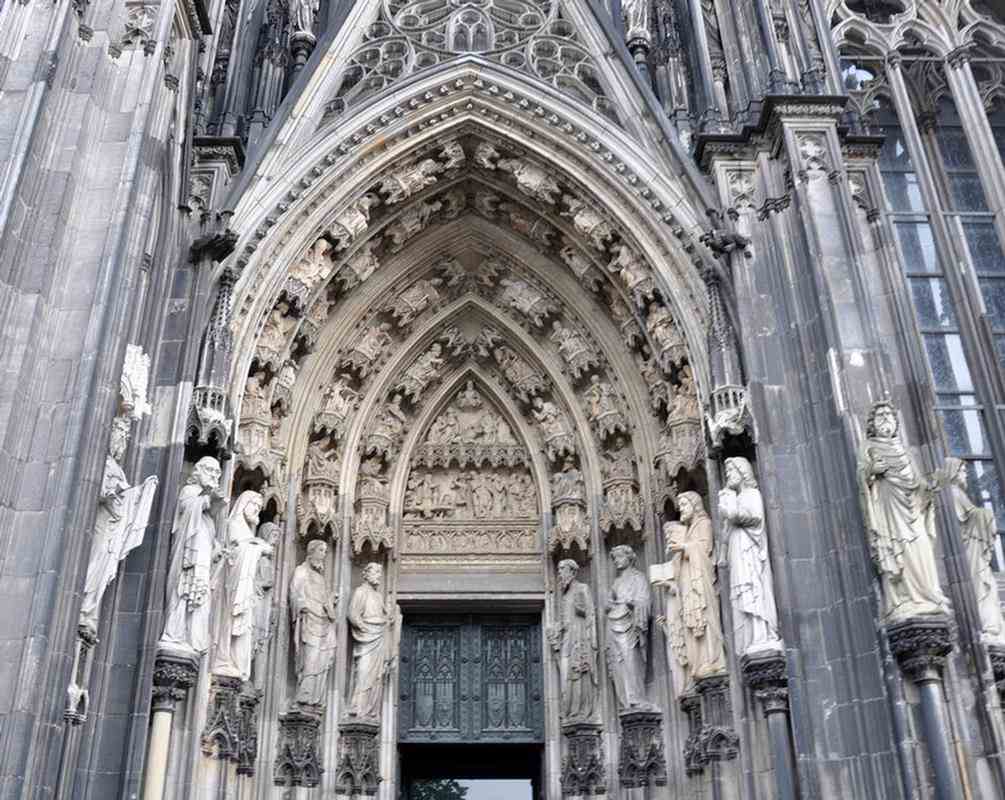
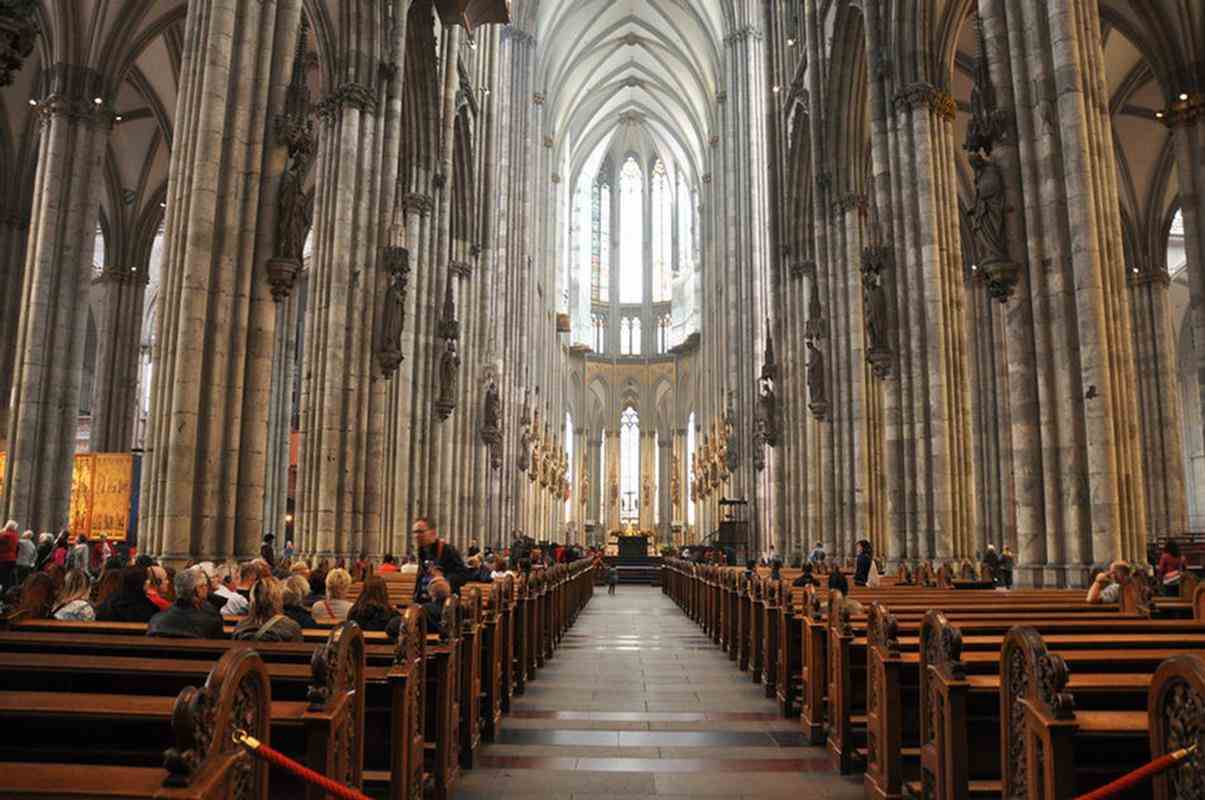
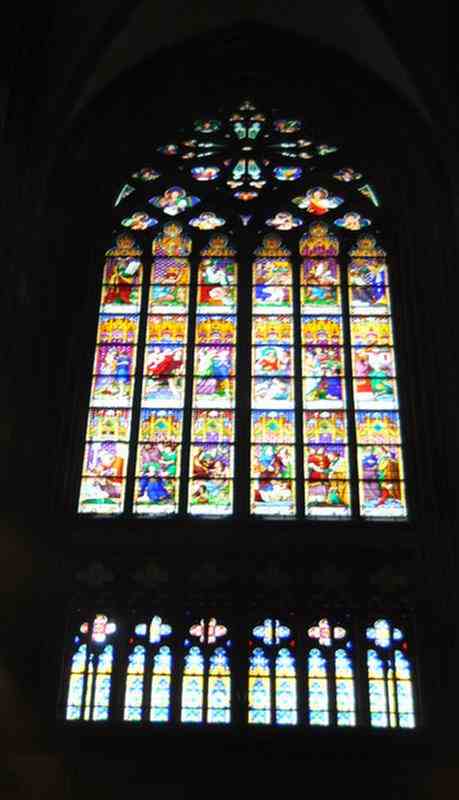

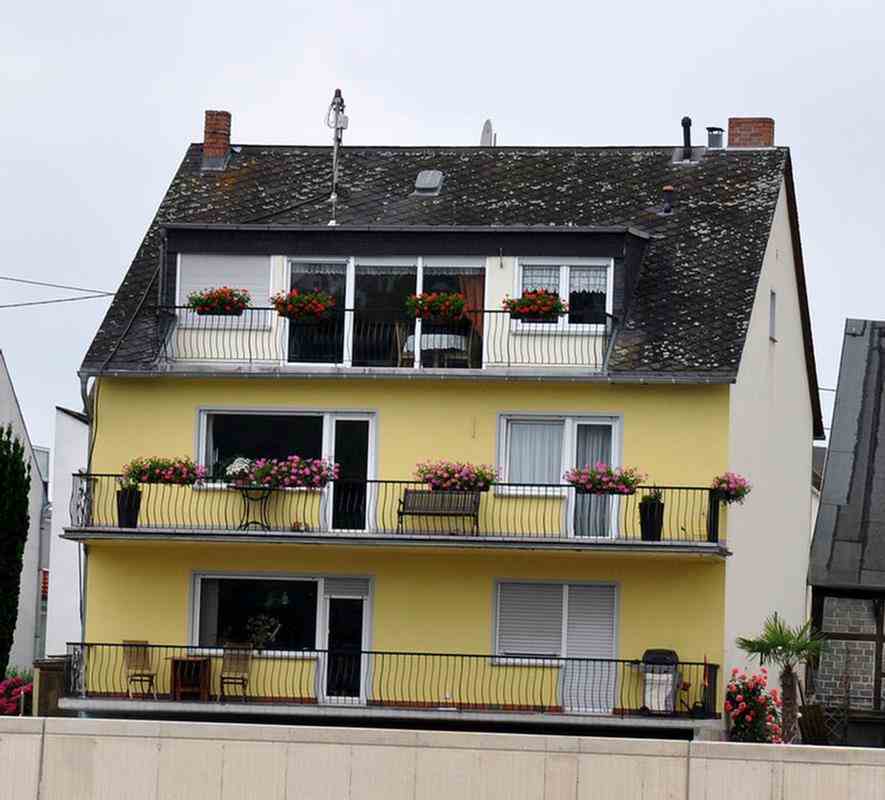
Cruising the Rhine River from Koblenz to Lorelei.
The 26-day cruise had been carefully arranged so that we cruised past the most scenic sights during the daytime.
We had a lot of different departure times to achive this.
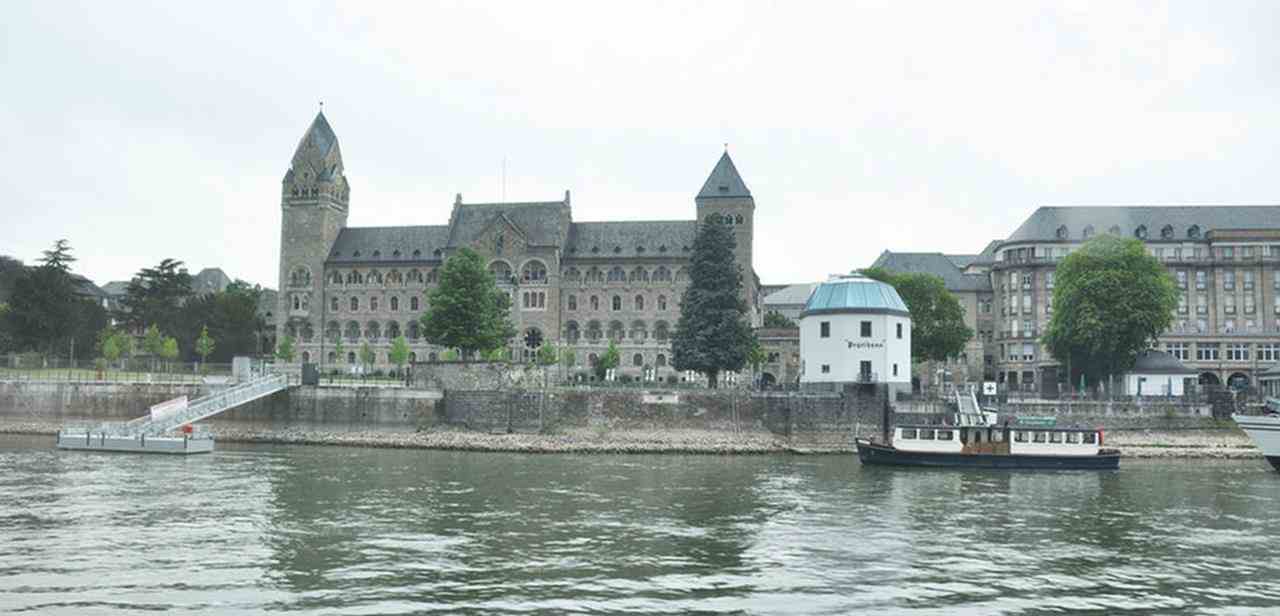
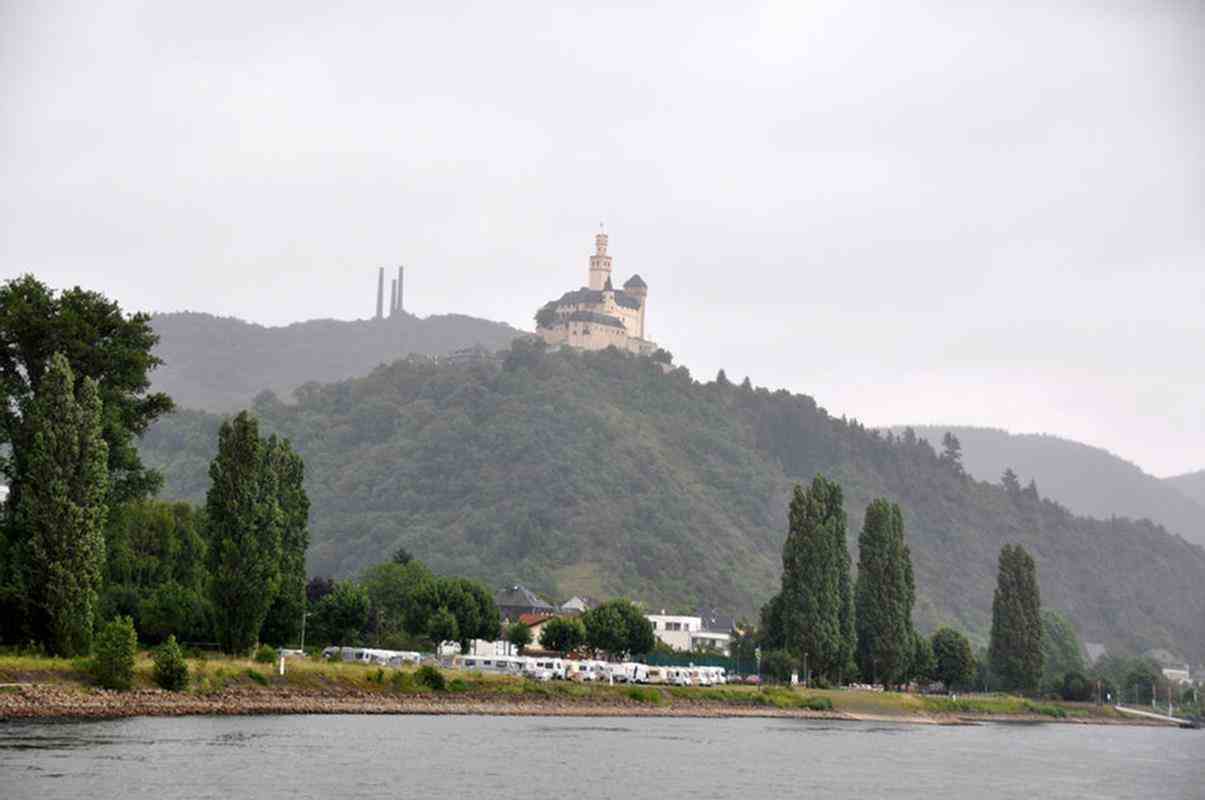
Another photo of this combined hotel and church.
To enter the church you pass through the bar.
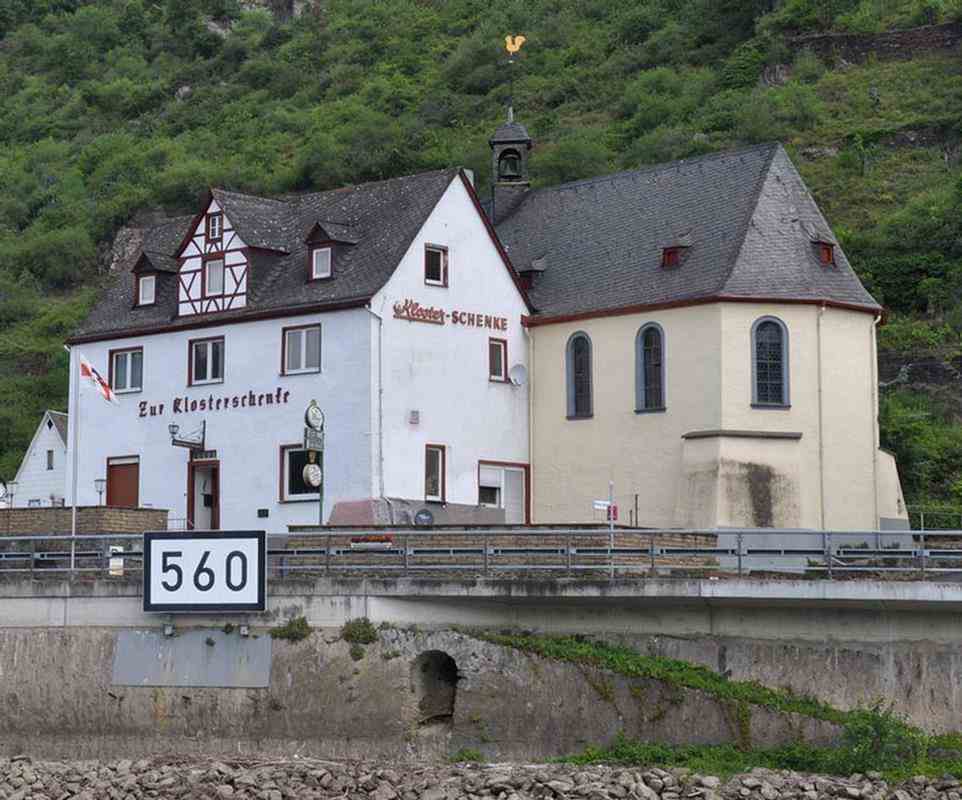
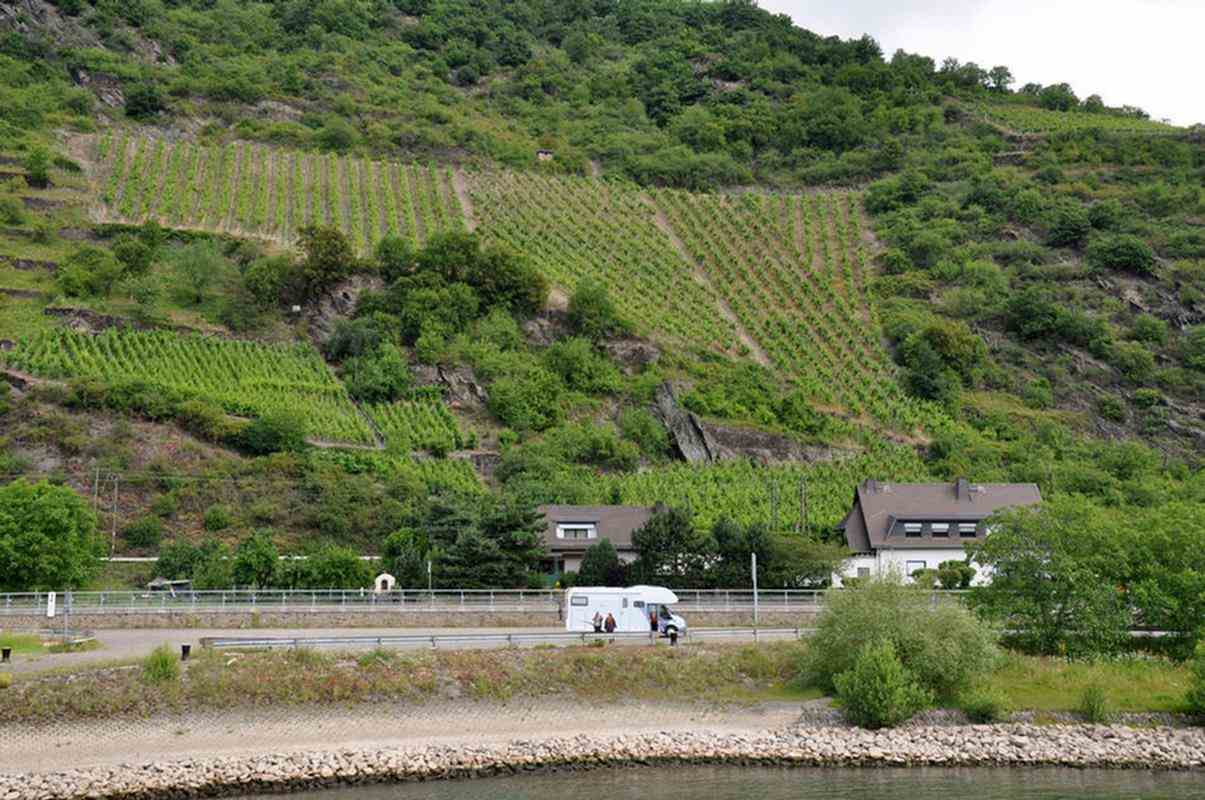
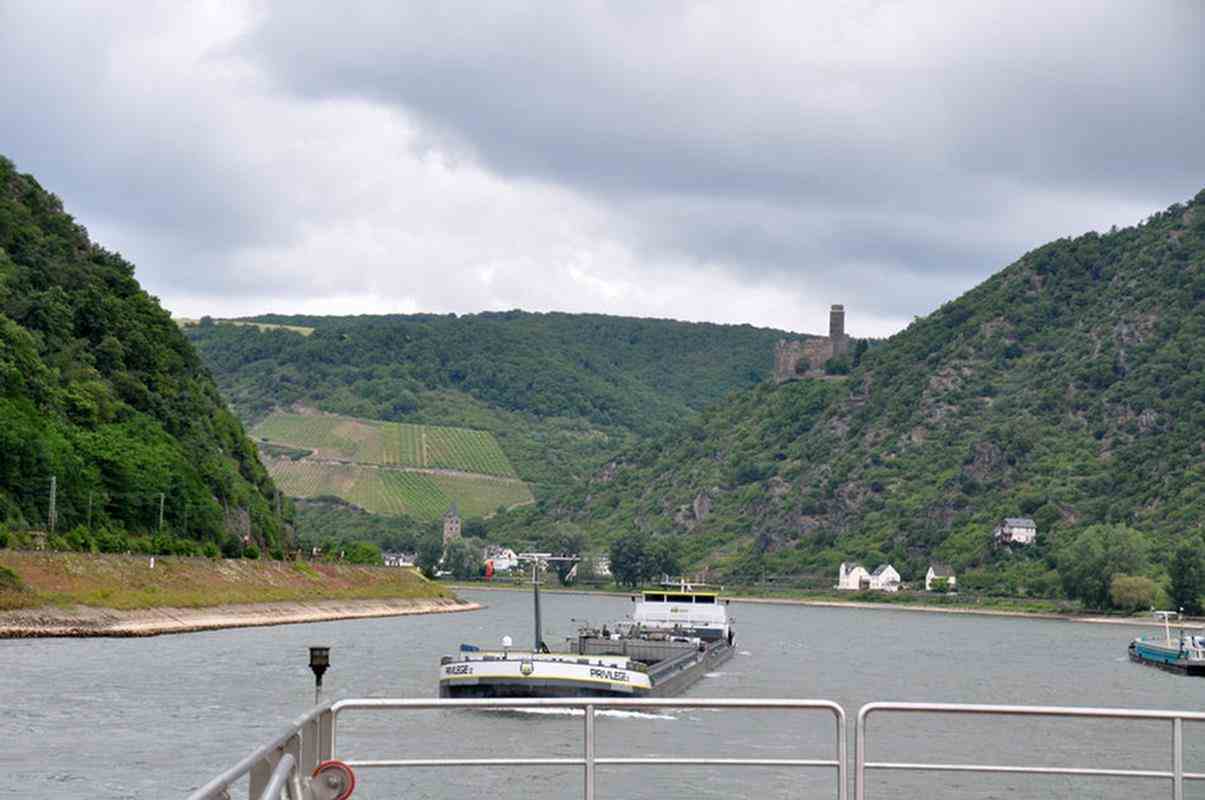
The Lorelei statue near Lorelei Rock marks the narrowest part of the Rhine River.
The name Lorelei means murmuring rock. The heavy currents, and a former small waterfall in the area created a murmuring sound,
and this combined with the special echo the rock produces, gives the rock its name.
There have also been many accidents in the narrow gorge which have lead to Lorelei myths.
It has also led to Lorelei as the name of a feminine water spirit, similar to a mermaid.
Lorelei is popular in folklore and in works of music, art and literature.
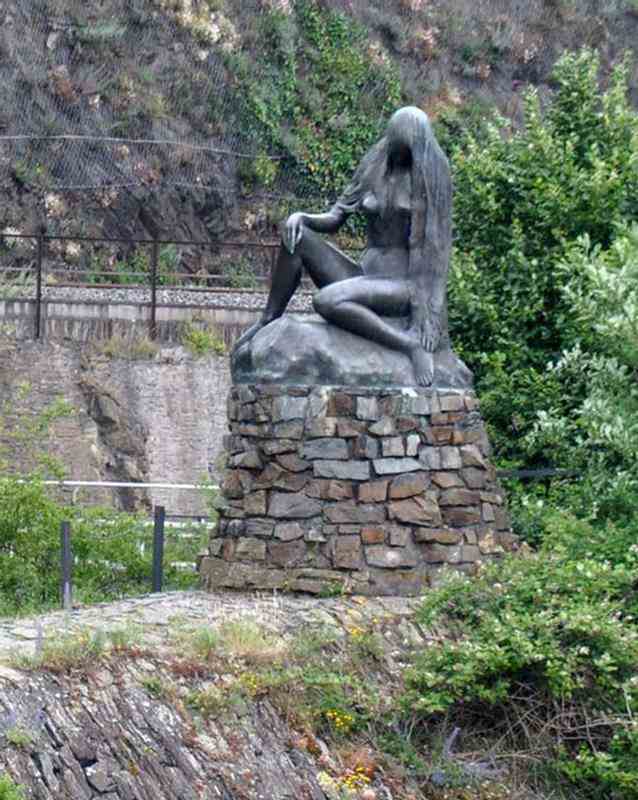

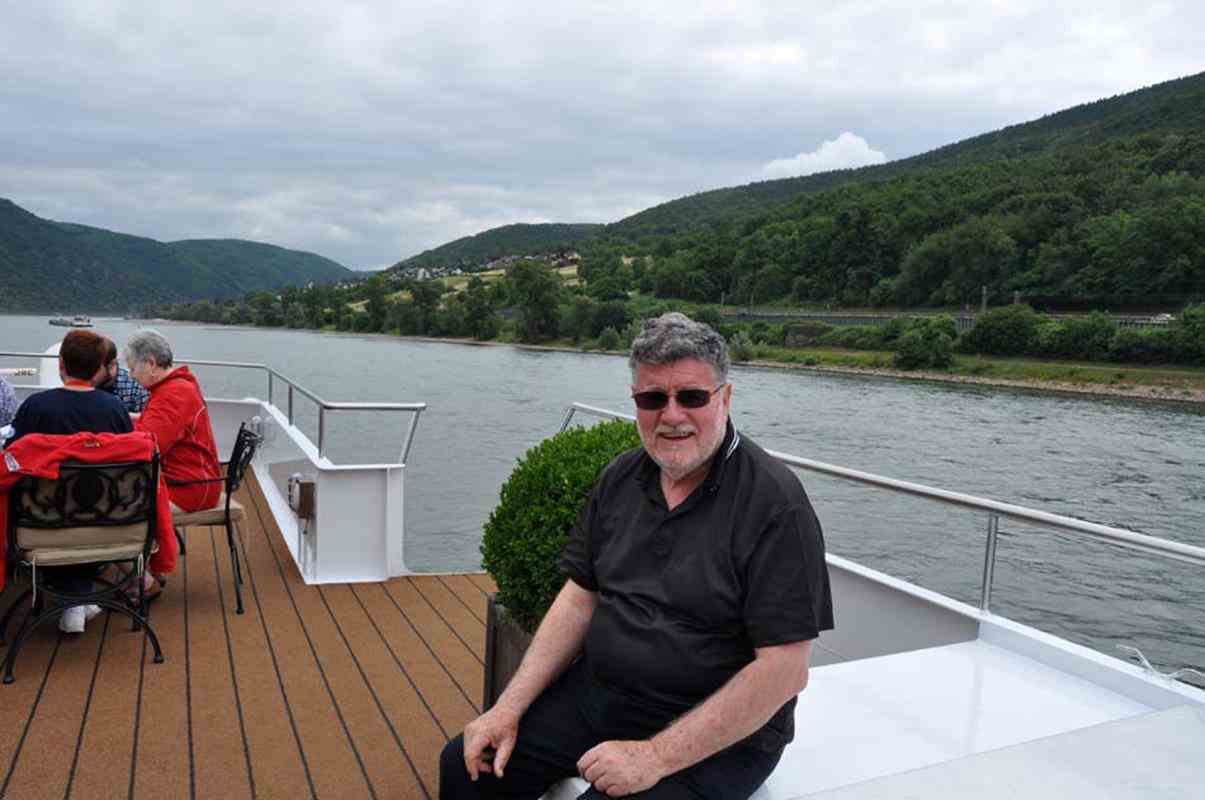
We caught a tourist tractor-train to Siegfried's Mechanical Musical Museum in Rudesheim.
They had lots of working instruments.
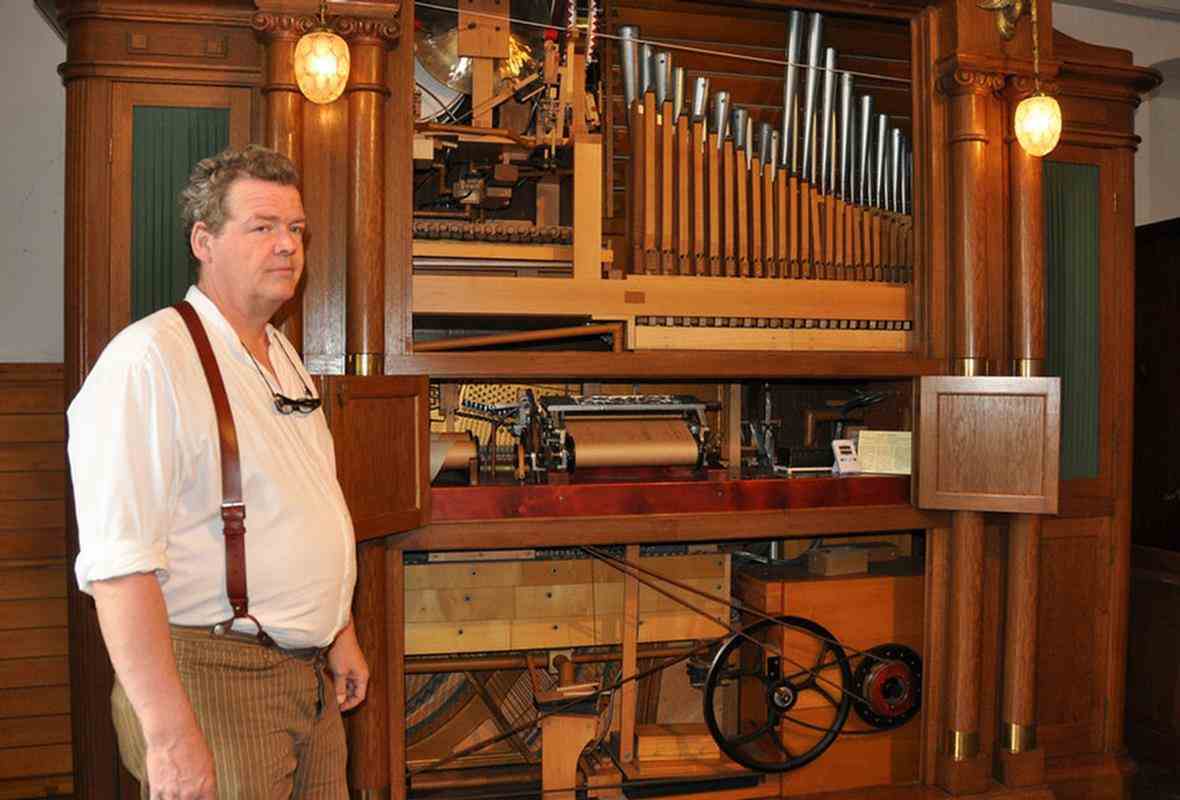
Frankfurt
During the night we motored up the Rhine River turning into the Main River at Mainz near Weisbaden and docked at Frankfurt.
The Main River is the longest tributary of the Rhine River and the longest river entirely in Germany.
We were docked right in the centre of Frankfurt.

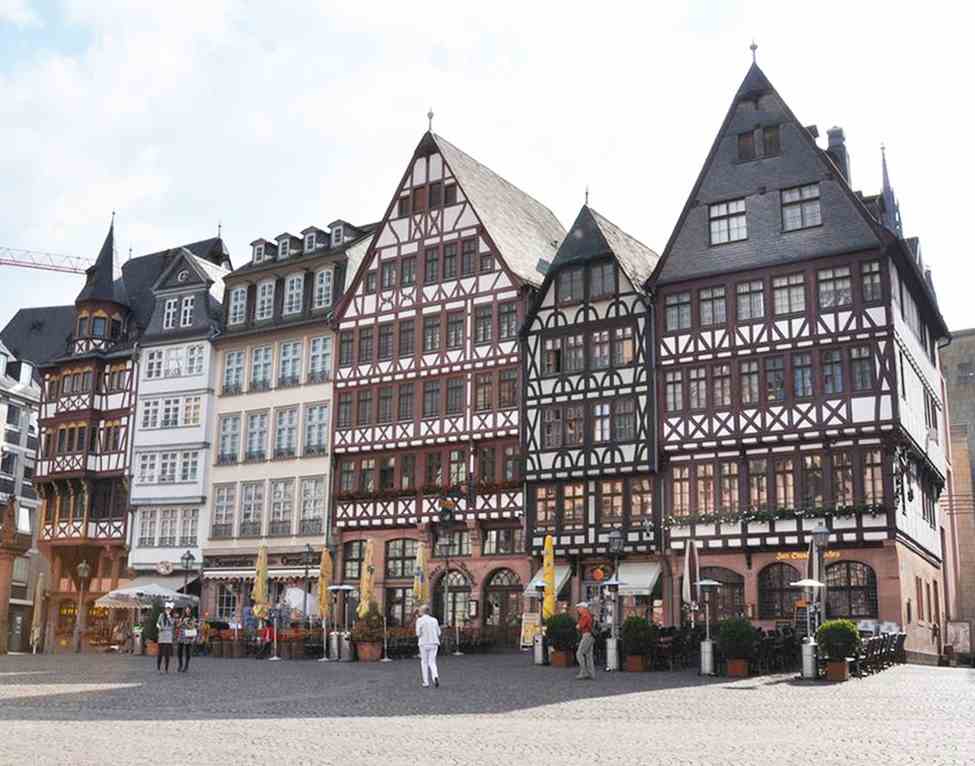
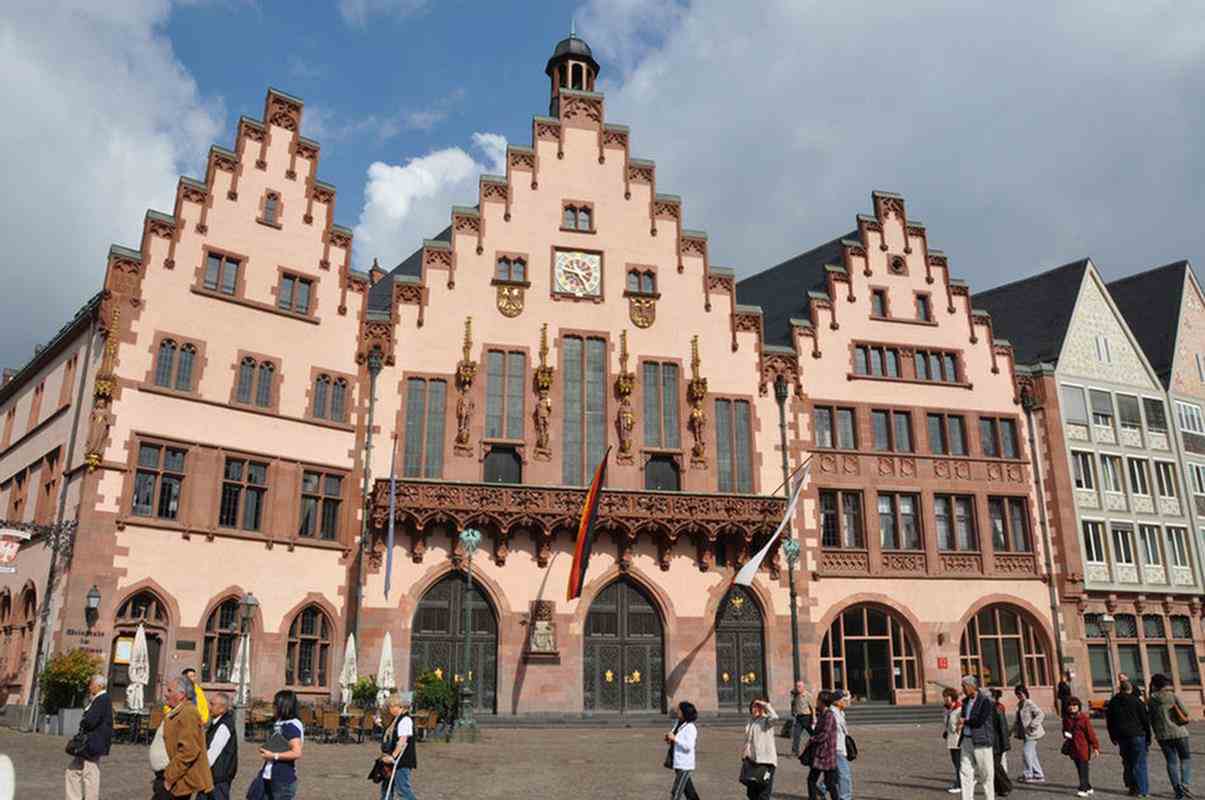
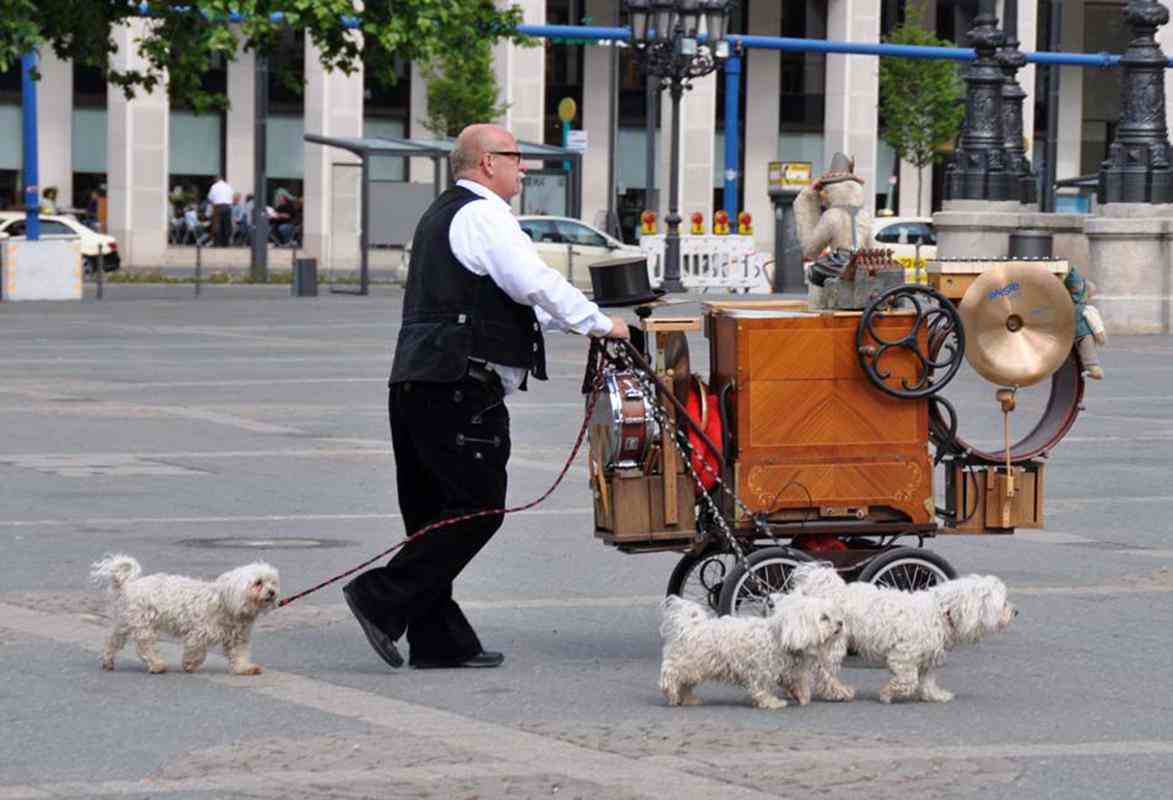
The old Frankfurt Opera House has been replaced by a modern venue.

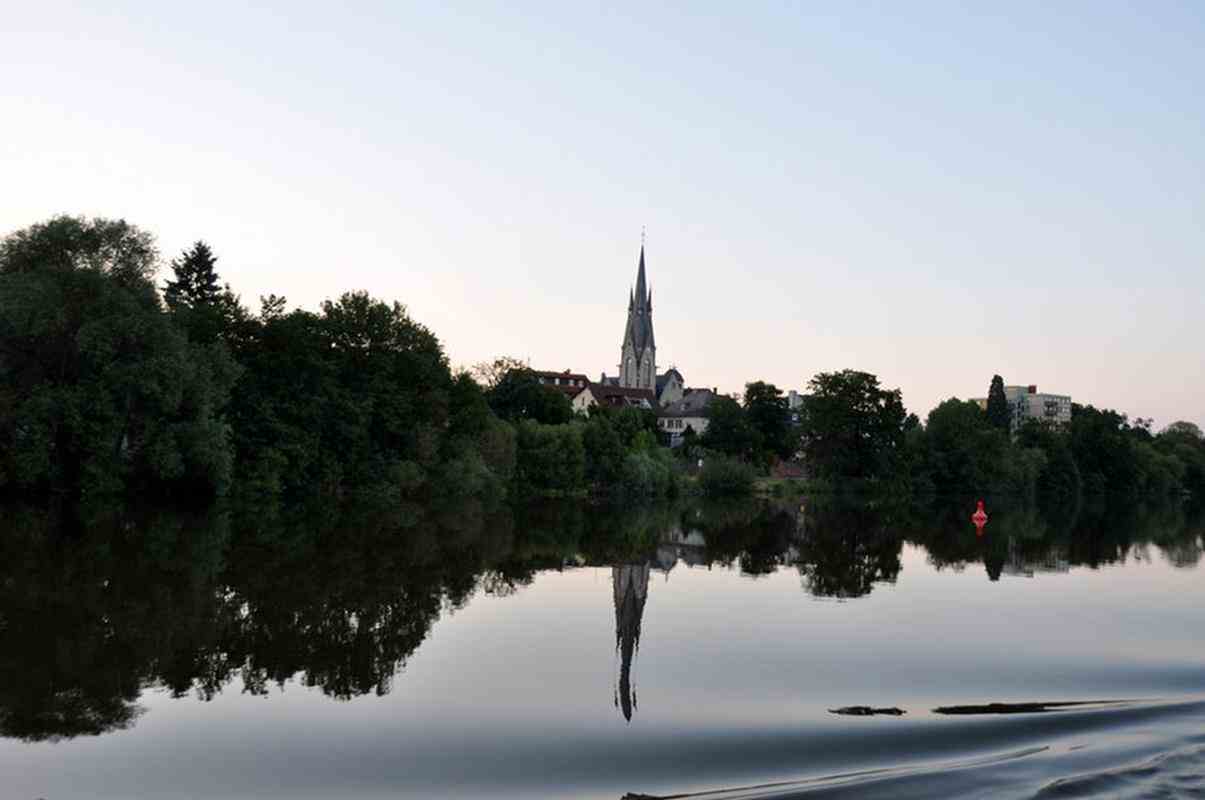
Miltenberg is an unspoilt historic town with 300-year old buildings and no tourist shops.
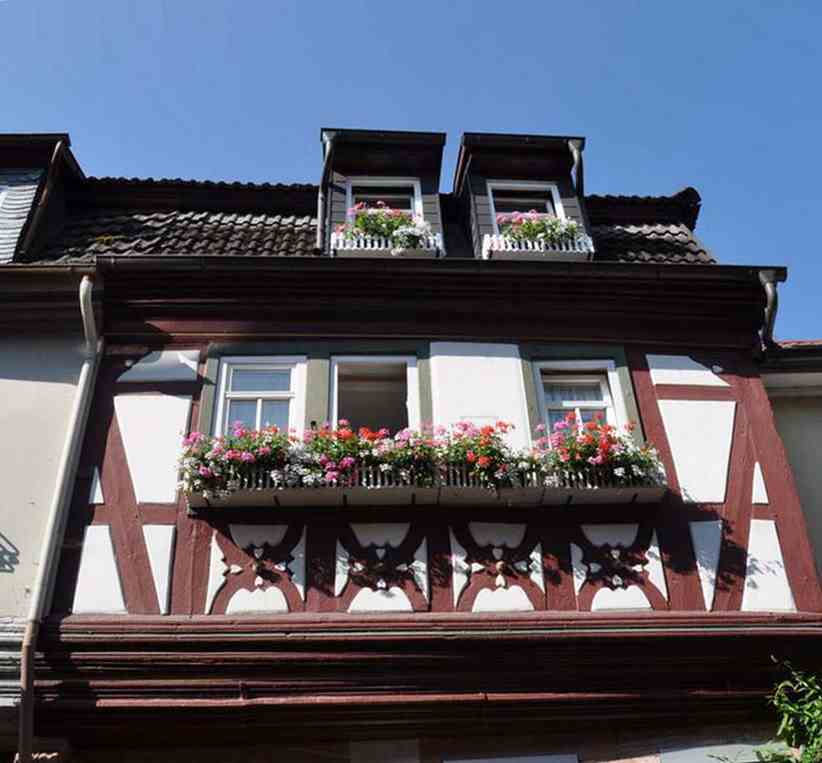

Some fine wines at Castle Lowenstein.
The House of Lowenstein-Wertheim-Rosenberg has been producing wine for more than 300 years.
80% of their production is white wines.
We had a tasting of 2 white wines and a red wine. They were very smooth.

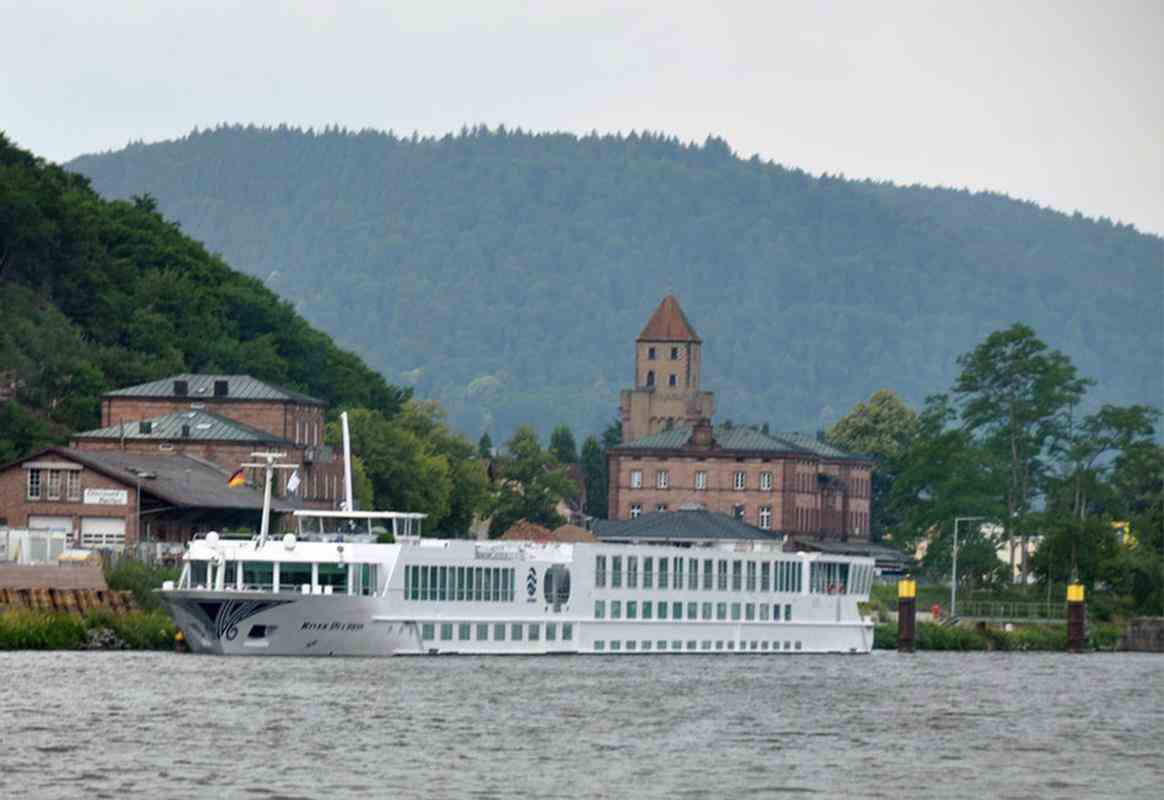
There were on 71 locks on the rivers and canals on our 26-day Rhine-Main-Danube River cruise.
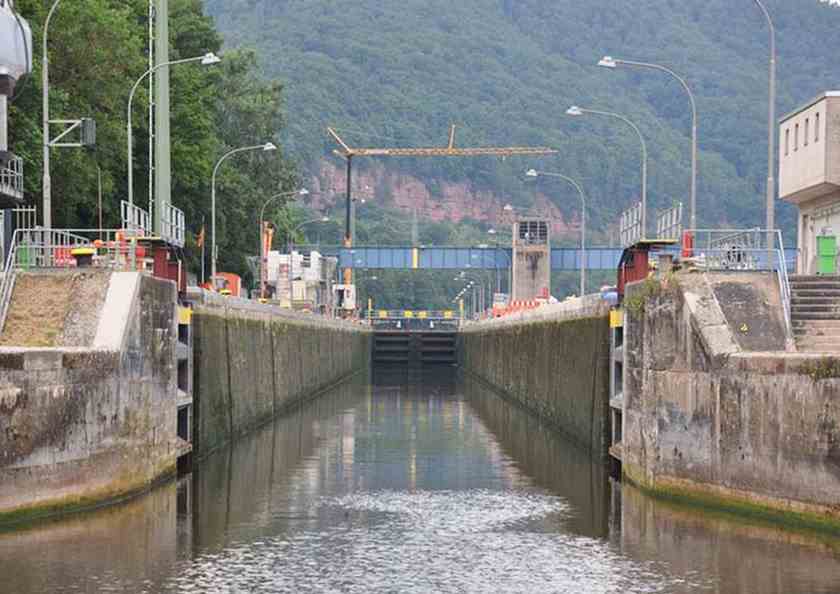
Rothenburg
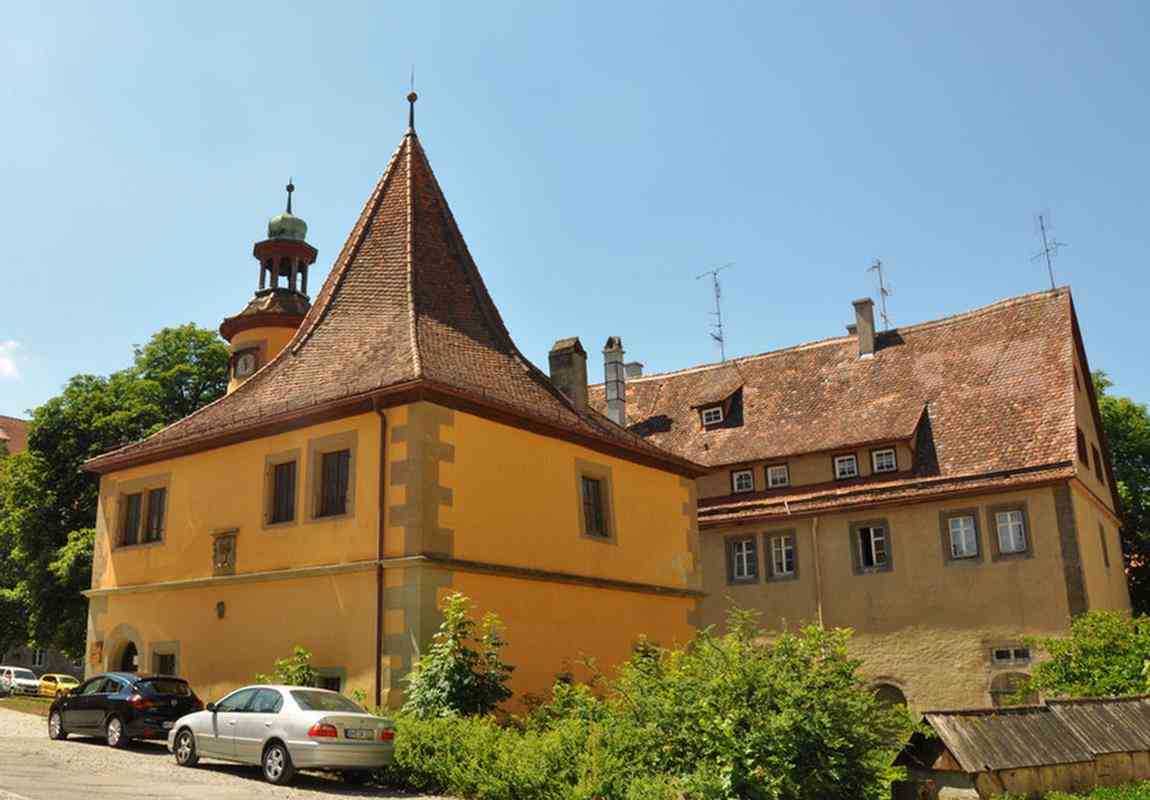

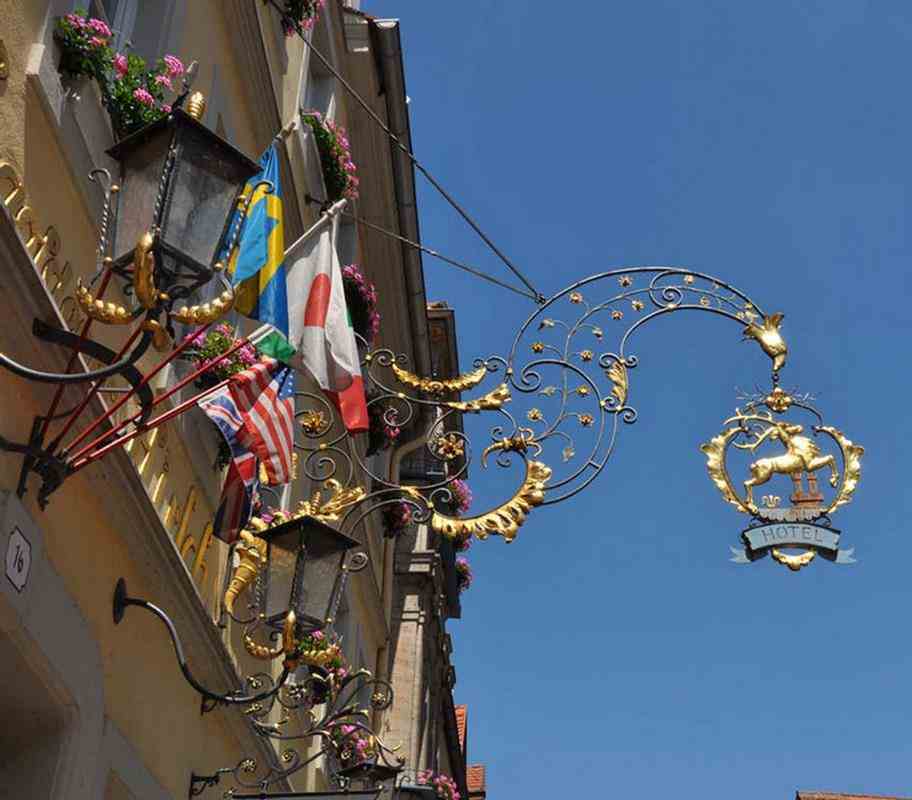
Like a number of other European towns, the town hall clock opens windows depicting a story when striking on the hour.


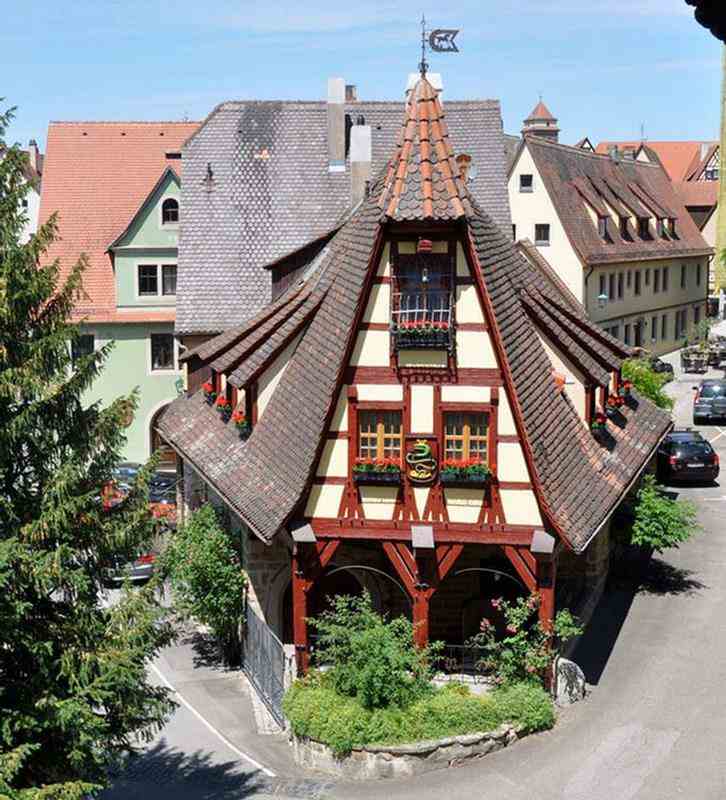
Bamberg
Further along the Main River at its junction with the River Regnitz we came to Bamberg,
the centre of another former Principality of the Austro-Hungarian Empire.
The historic city centre is a UNESCO World Heritage site.
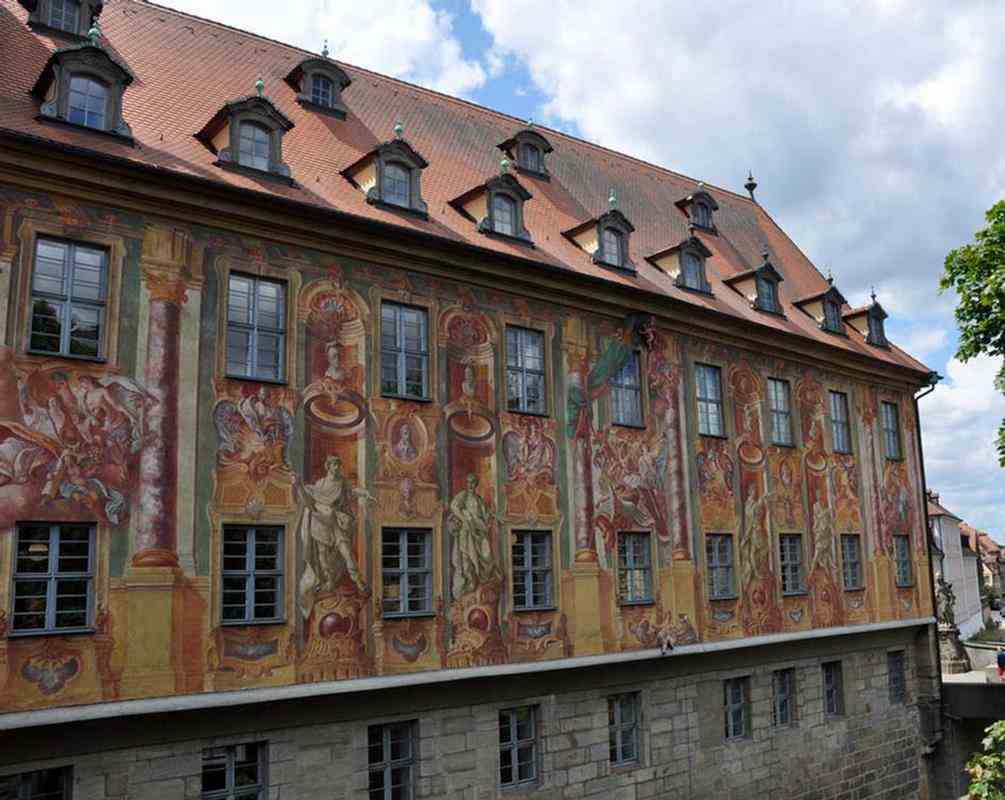
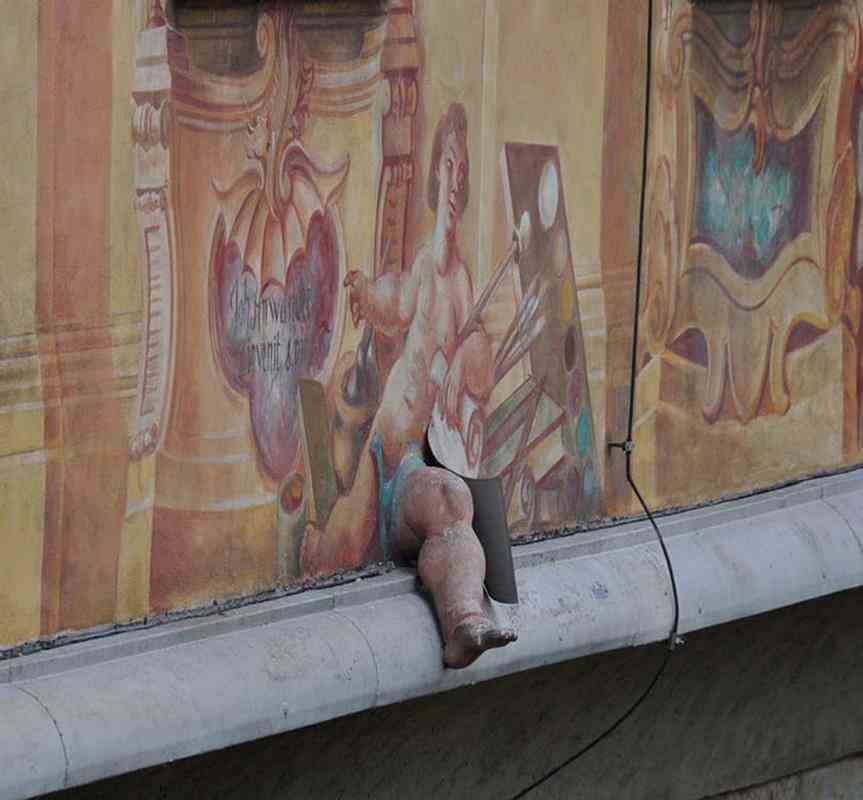
This building was once an abattoir.
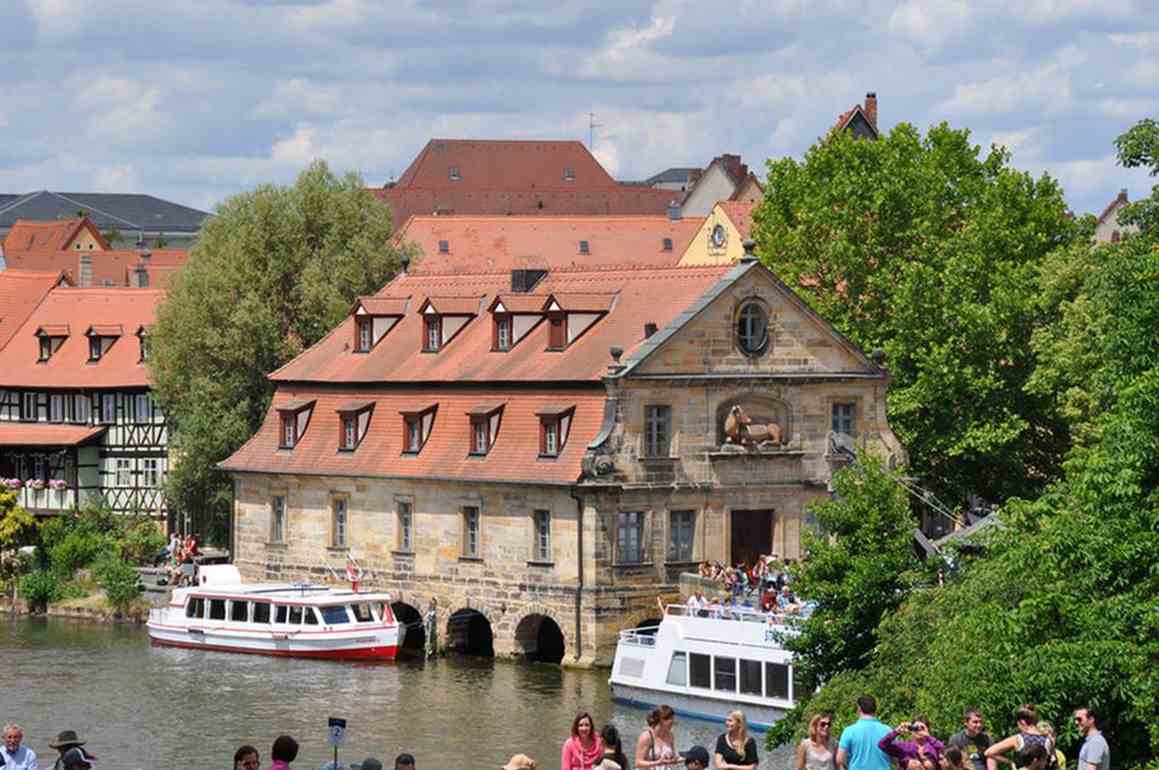
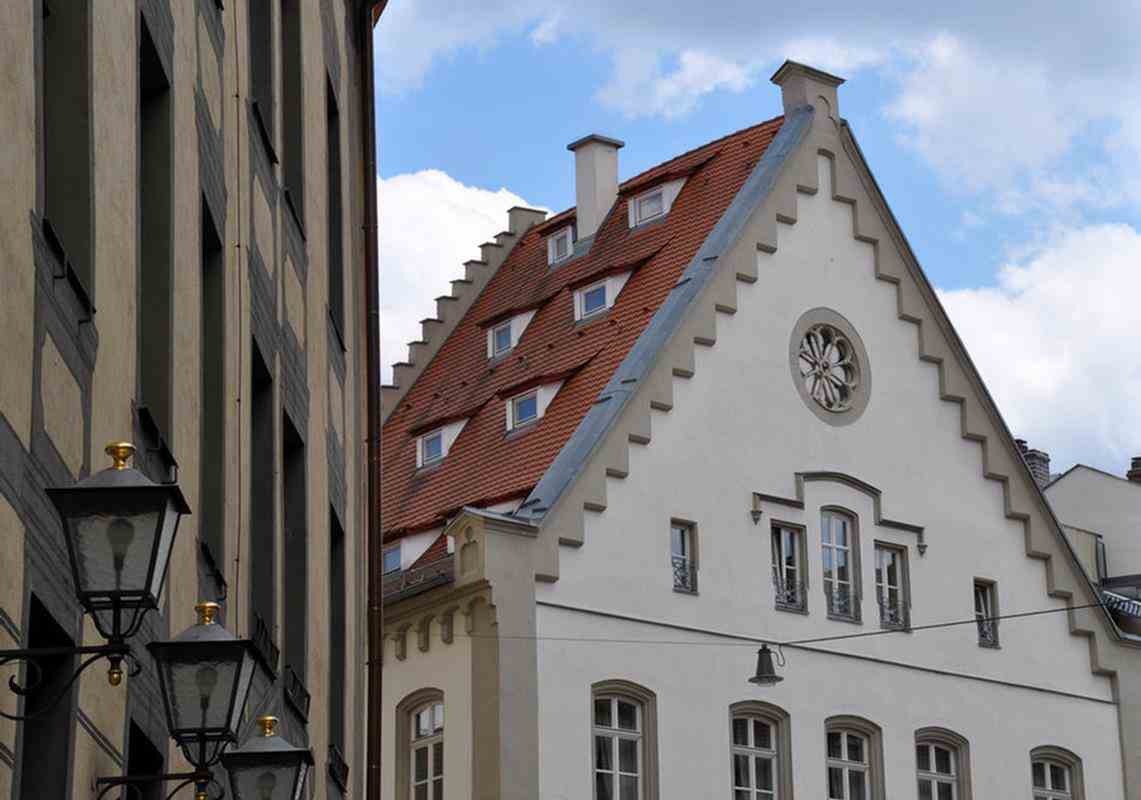

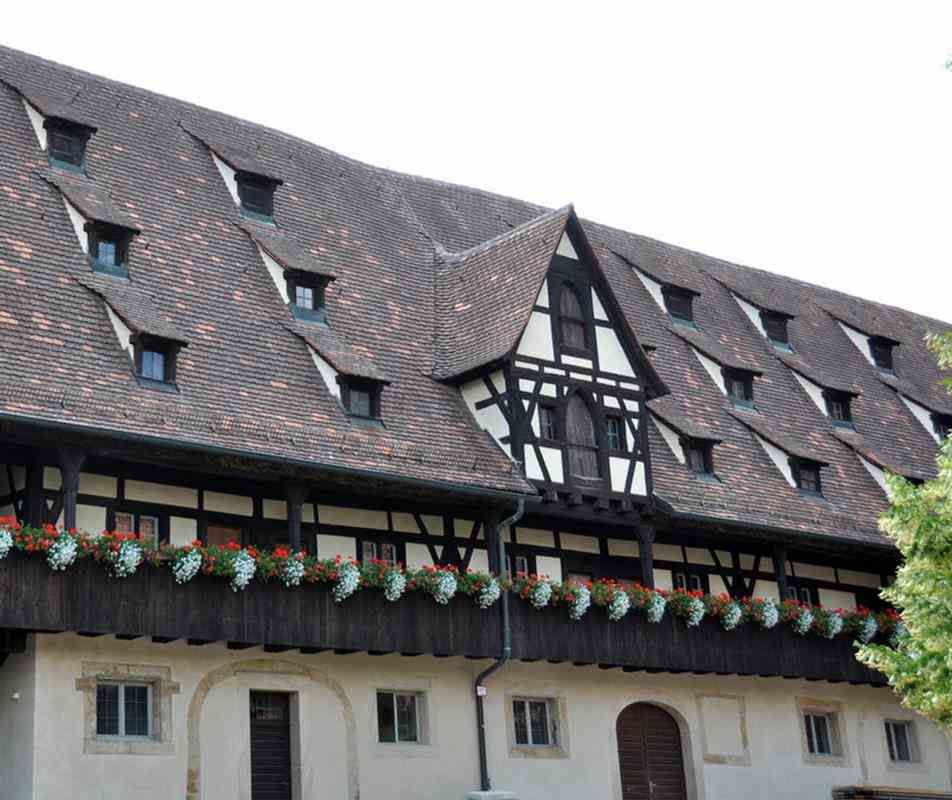
Nuremberg
Nuremberg is often referred to as having been one of the unofficial capitals of the Holy Roman Empire
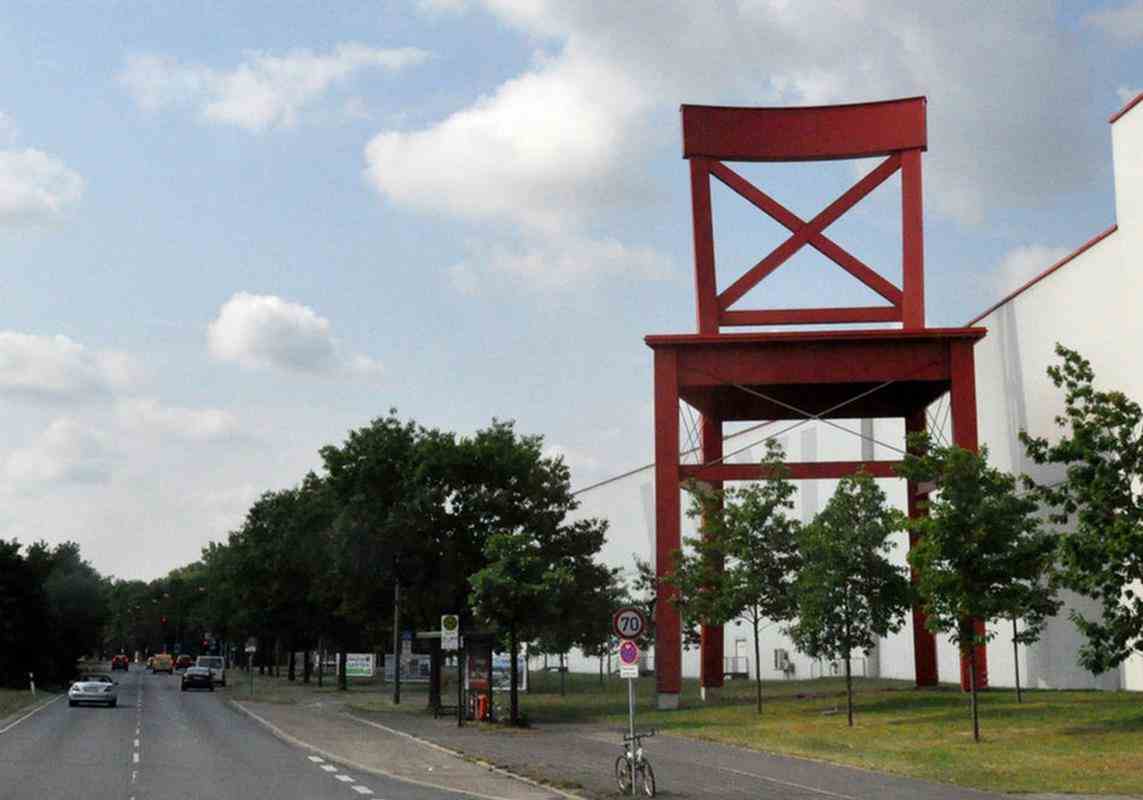
The Congress Hall in Nuremberg.
Inspired by the Colosseum in Rome, it was never finished and the roof never built.
It was supposed to seat 50,000 for Hitler's rallies.
We visited the Document Centre which is housed in a new building and part of the Congress Building.
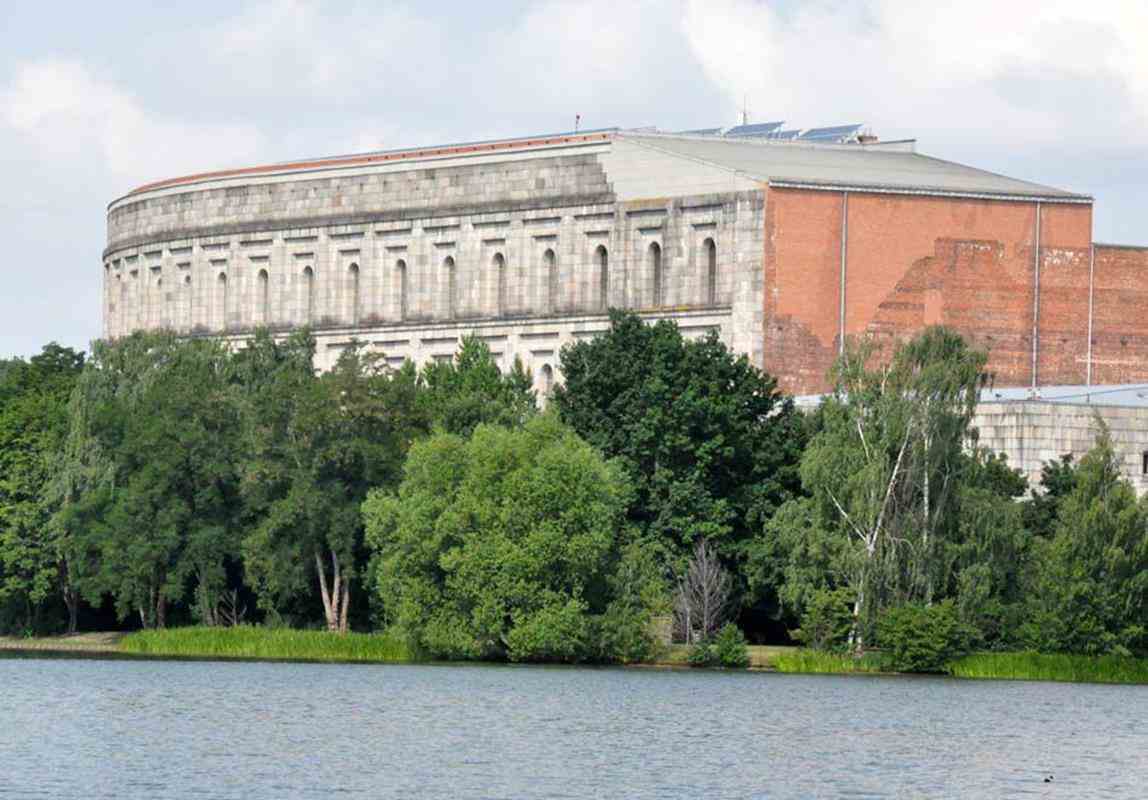
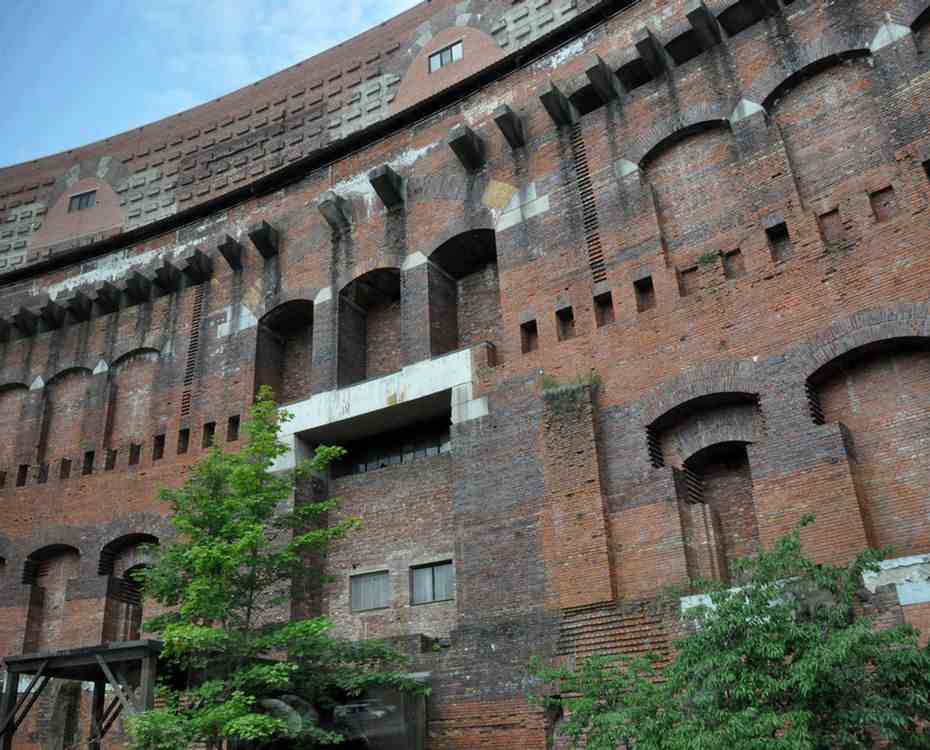
Nuremberg District Court where the Nuremberg Trials were held in 1945-1946.

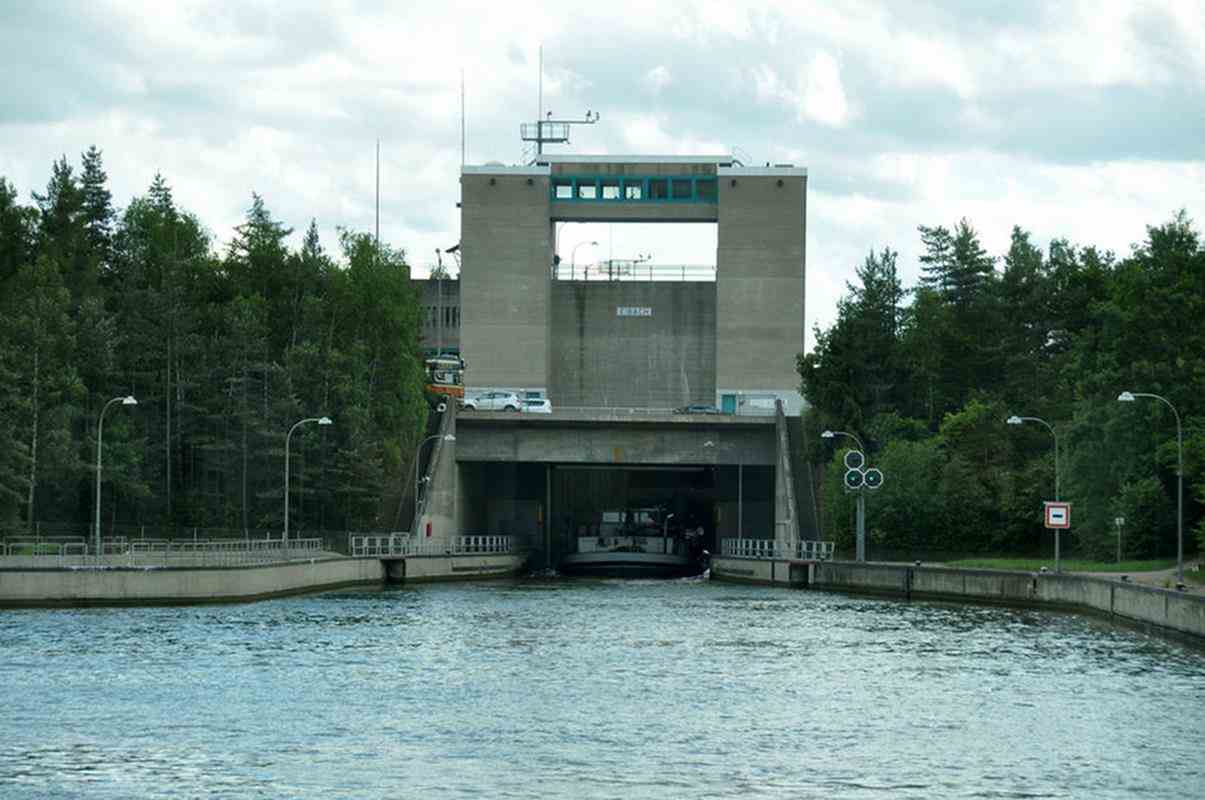
The 172km Main-Danube Canal links Bamberg on the Main River via Nuremberg to Kelheim on the Danube River.
It is entirely in Germany. Ever since 793AD there have been plans for a canal and the link was finally completed in 1992.
The largest authorised vessels on the canal are 190 m in length and 11.45 m wide.
The Duchess is 11.40m wide. and 110m long.
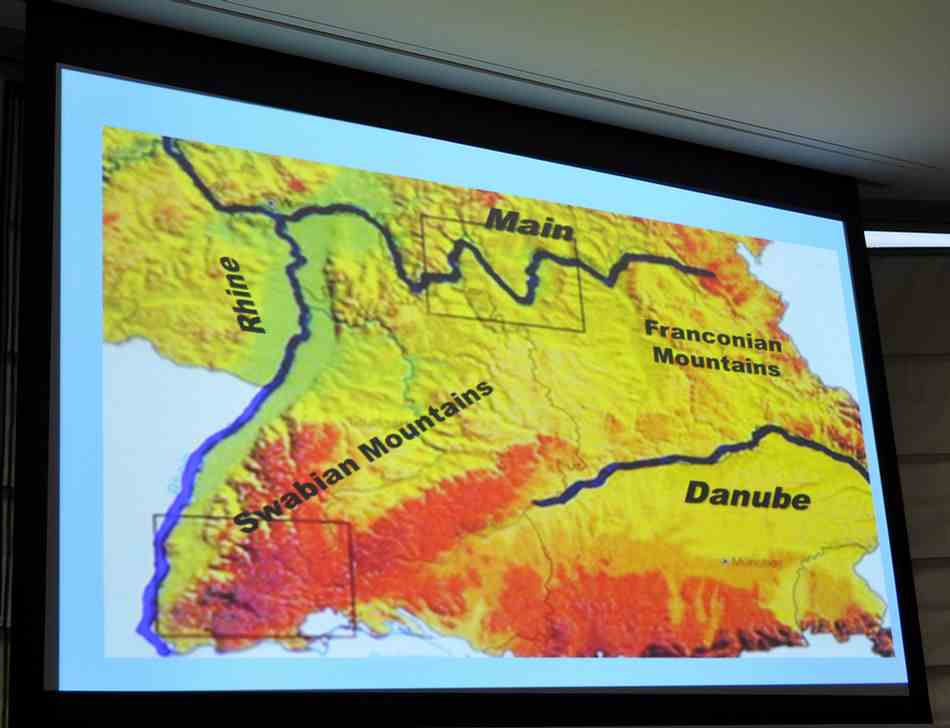
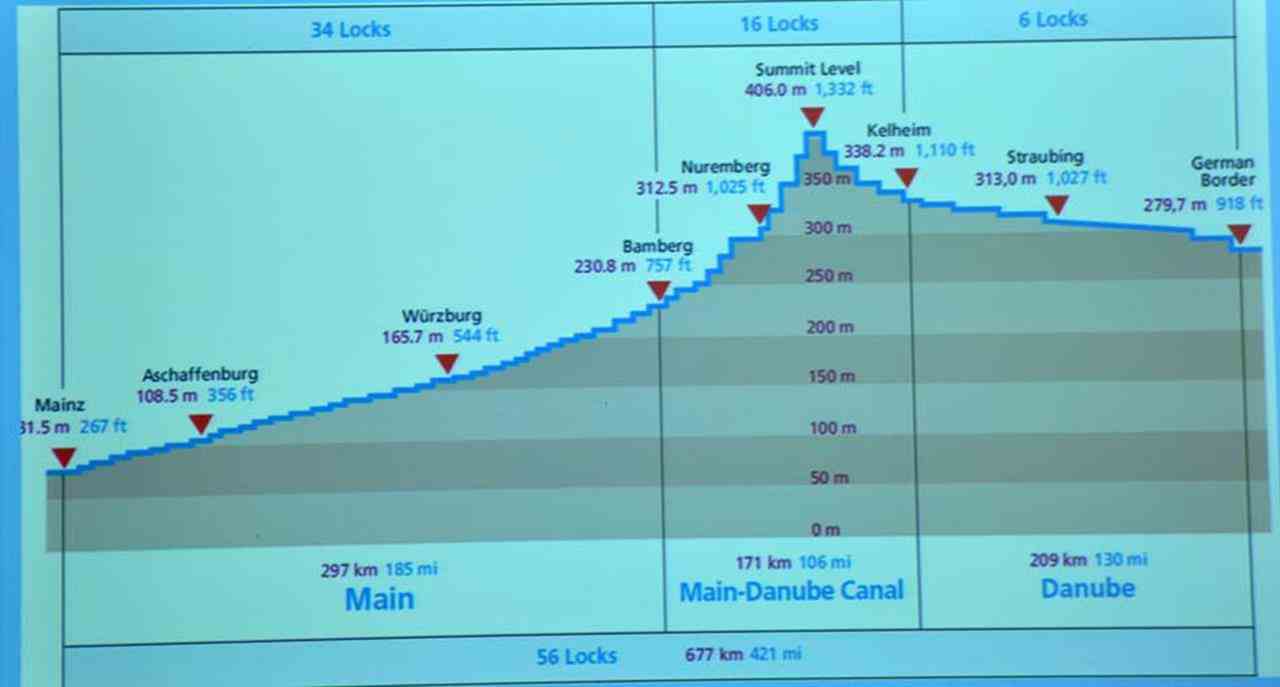

The Befreiungshalle is a historical classical monument upon Mount Michelsberg above the city of Kelheim.
King Ludwig I of Bavaria ordered the Befreiungshalle to be built in order to commemorate the victories against Napoleon
during the Wars of Liberation that lasted from 1813 to 1815.
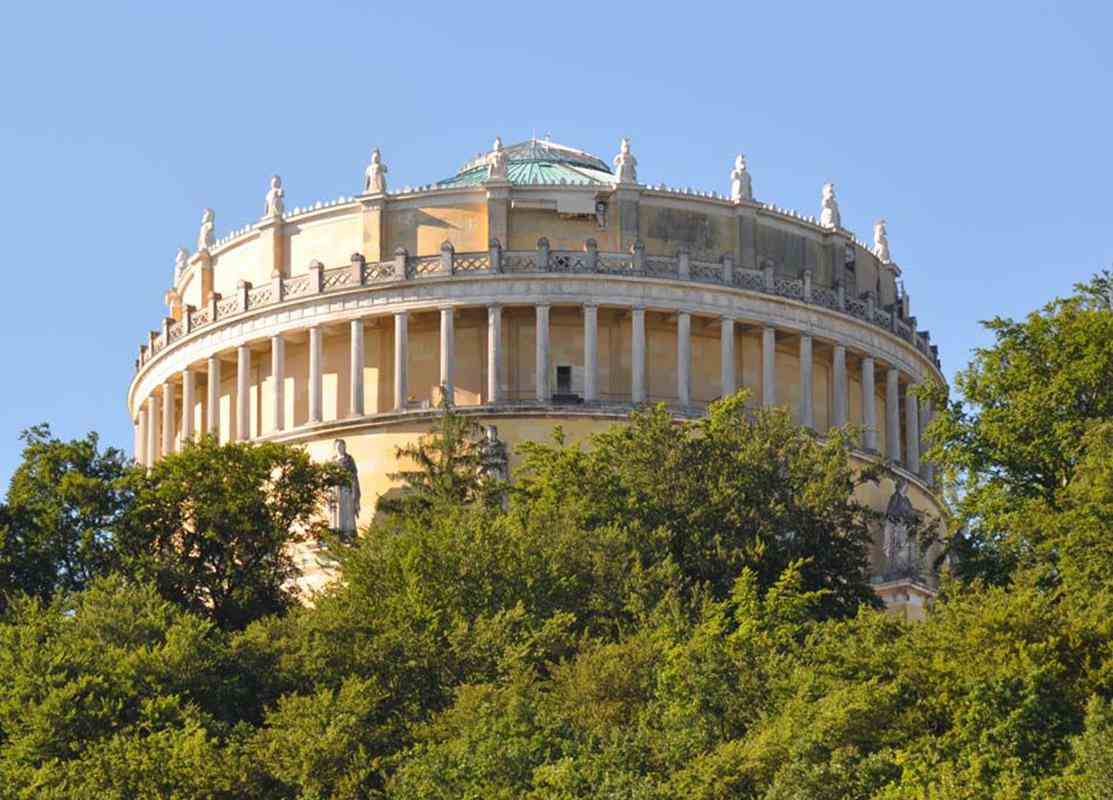
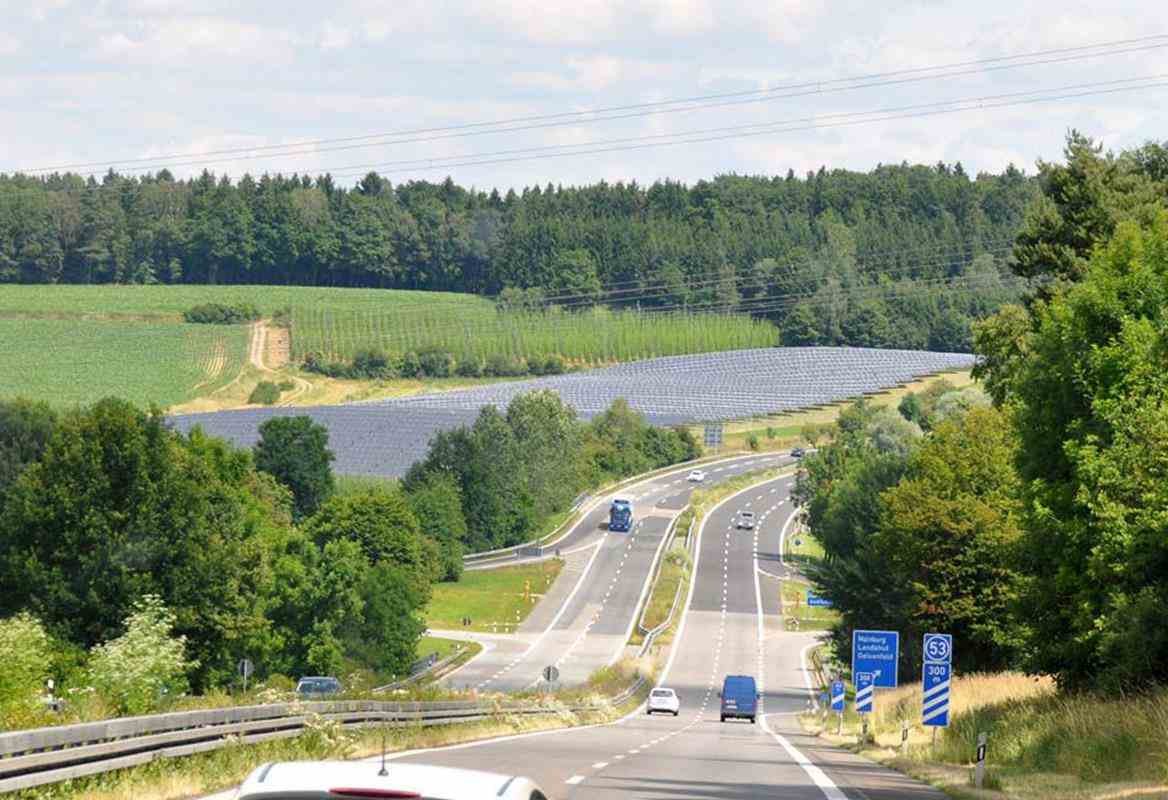
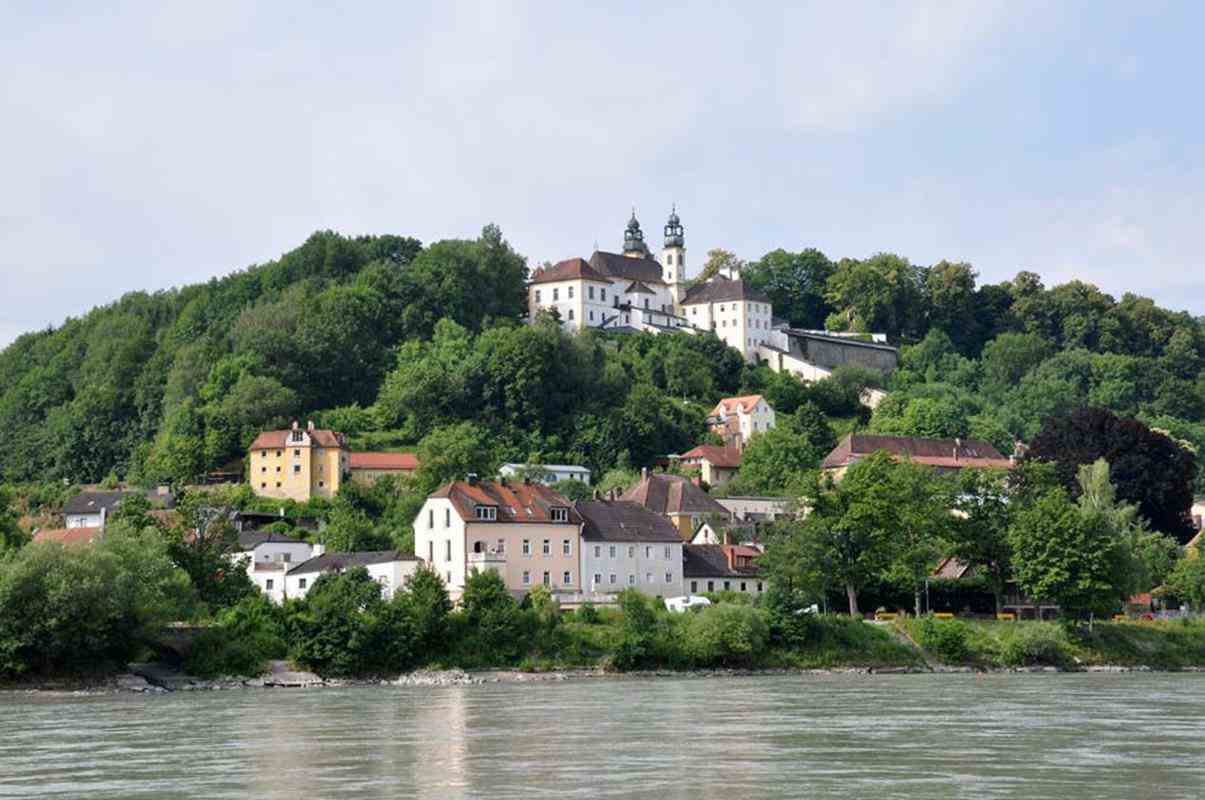
Passau
Passau was our last port in Germany, it is close to the Austrian border.
It is a university town. Out of its 50,000 people, 11,000 are students at the University of Passau.
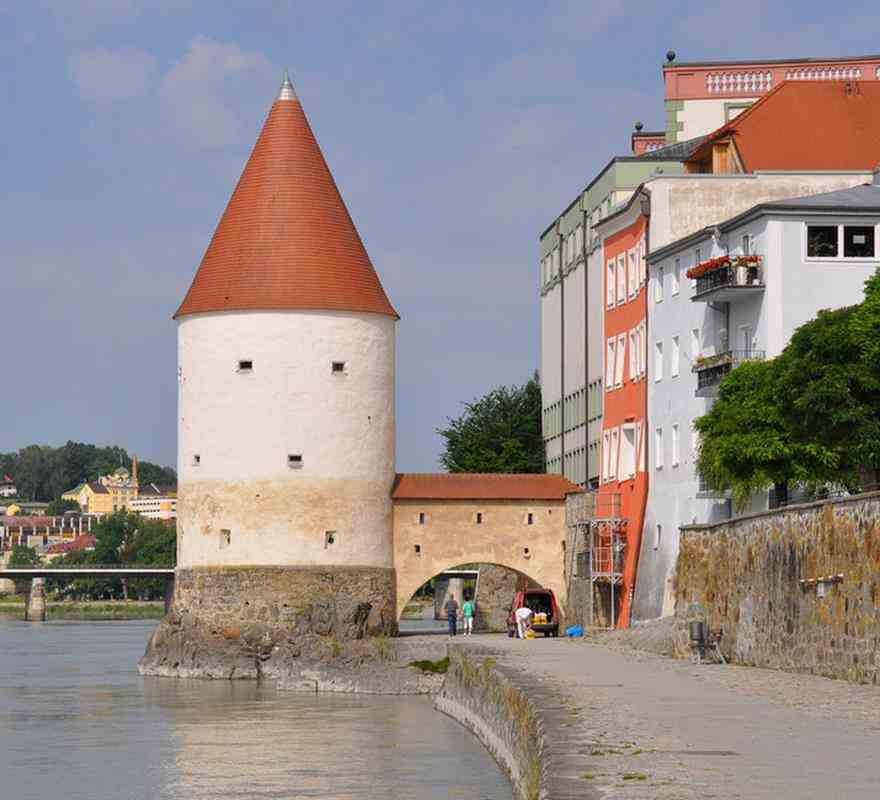

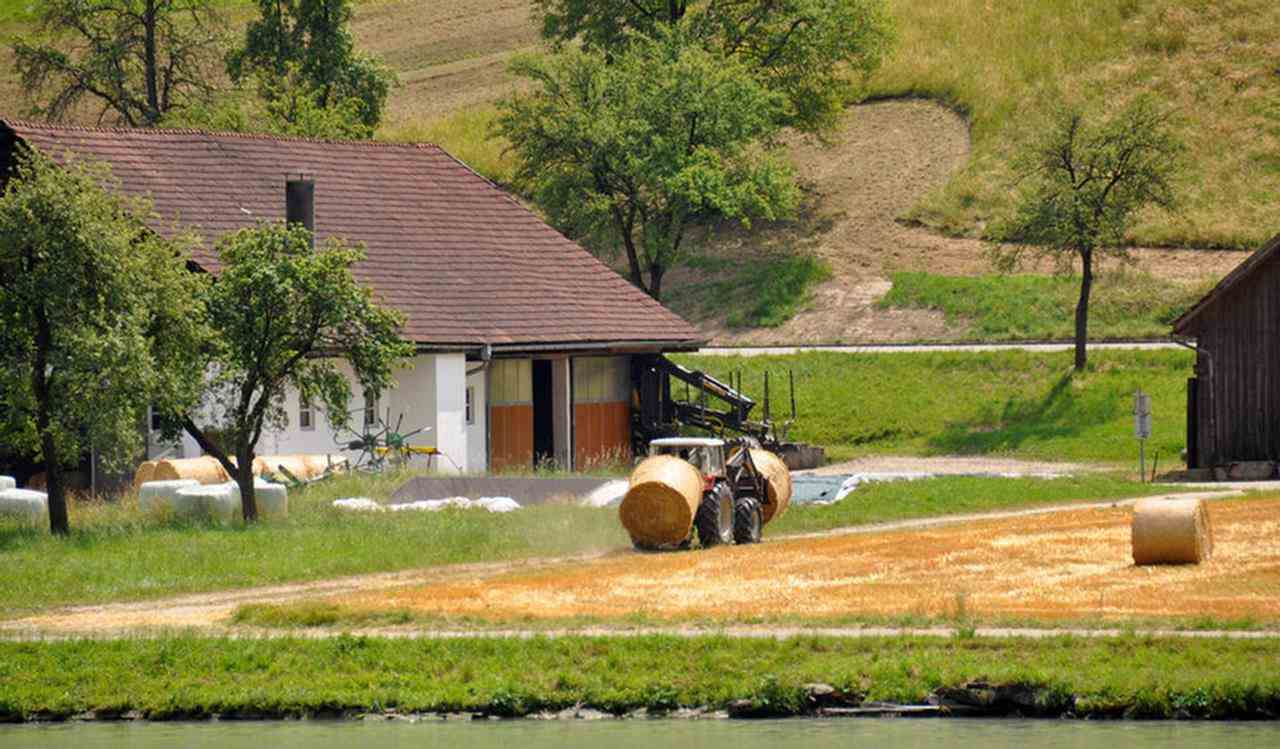
Our cruise continued on the Danube River through Austria, Slovakia, Hungary, Croatia, Serbia, Bulgaria and Romania.
We diembaked at Giurgiu in Romania and we were bussed to Bucharest.
After a night in Bucharest we flew to Istanbul in Turkey for 6 nights.
We stopped over in Dubai on the way home.
A great 48-day trip.
A 2017 photo
We flew into Munich at the start of our first Operatif Music lovers tour.
Europe - Operatif Bohemian Rhapsody Tour
(Melbourne - Dubai - Munich - Salzburg - Český Krumlov - Prague - Vienna - Bratislava - Budapest - Dubai - Melbourne)
Two excited passengers on an Emirates A380 (Emirates have 95 of them in 2017), en-route to Munich from Dubai, a 6¼ hour flight.
Over 3300 entertainment channels for our noise-cancelling headphones.
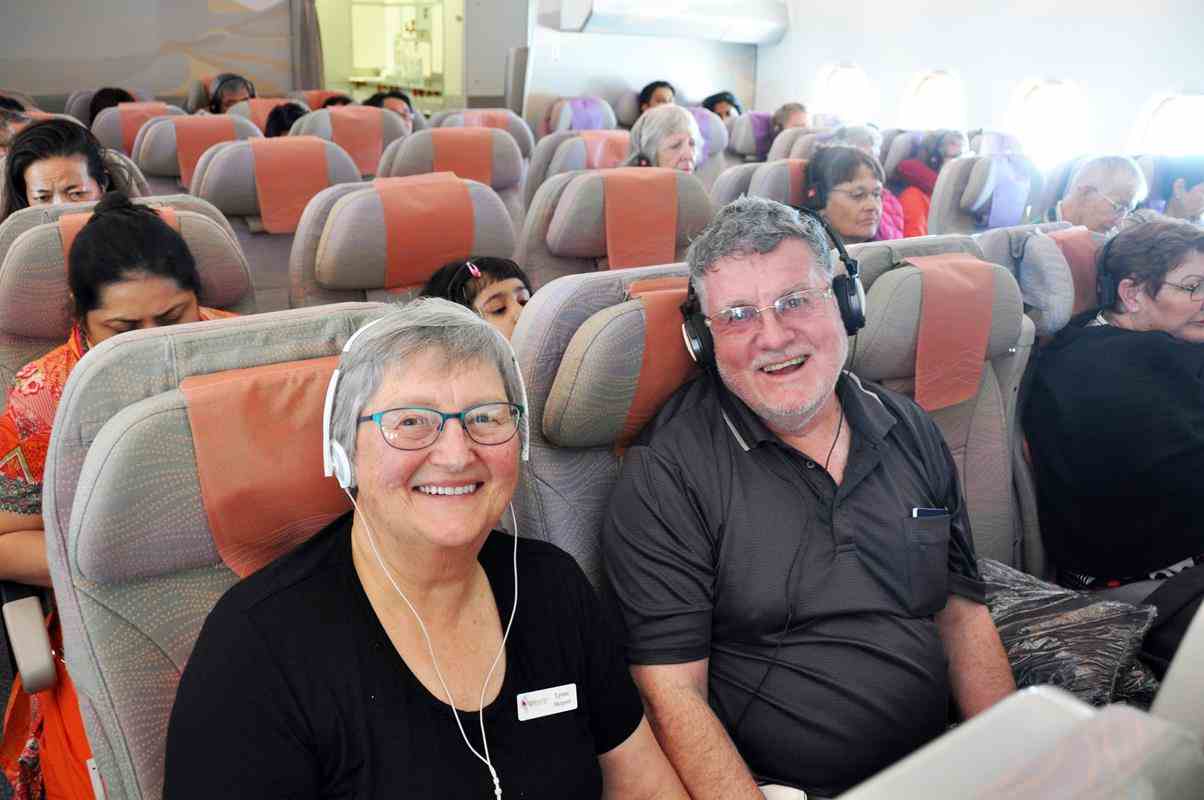
After arriving in Munich and meeting Jelena, our European tour director from Zagreb in Croatia, we were bussed to Salzburg in Austria (2½ hours).
|
Trips to Germany
1.
1985 - I passed through East and West Germany by train from Russia, on
the way
to Europe, and later visited West Germany.2. 1999 - We visited Germany on our first around-the-world trip. 3. 2002 - We visited Germany during our Eastern European tour on our second around-the-world trip. 4. 2014 - We cruised through Germany as part of our Rhine - Main - Danube River cruise. 5. 2017 - We flew into Munich and travelled to Saltzburg in Austria at the start of the Operatif Bohemian Rhapsody tour. |
1985 Photos
I passed through East and West Germany on the way to the UK by train on my 13-week Melbourne - Bangkok - Hong Kong - Taipei - Japan -
Trans Siberian Railway - Poland - Germany - Holland - UK - Athens - Israel - Egypt - Western Europe - Singapore - Melbourne trip.
Later I visited West Germany on my 4-week tour of Wesetern Europe.
This tour left Dover on the ferry Reine Astrid for the port of Ostend in Belgium. Then to Brussels, Amsterdam and Copenhagen.
Then we entered West Germany from the Danish Jutland peninsula past Hamburg and on to Hannover.
Our Hannover hotel was opposite a park with lots of deer, boars, horses and squirrels in it.


From Hannover we travelled through increasingly picturesque countryside over high aqueduct type bridges
to the Rhine River at Boppard where we started a cruise on the Rhine River.
We passed a combined church and hotel. You enter the church through the hotel.





We passed Loreley Rock where legend has it that a maiden lived here who caused distraction to the boat's crews so that they ran onto the rocks.
There is a song about it and a bronze statue of her.
We finished our cruise at Oberwesen and then travelled through Bonn, the West German capital to Cologne (Koln).
Cologne Cathedral.
It was massive inside and out.
A West German village.

The Moselle River in West Germany.


From
Cologne we drove back through Bonn and had lunch at Baden
Baden.
We
passed through the edge of the Black Forest on to the Swiss border at
Basel. As it was a cloudy, hazy day we could not see much of the Black
Forest.
After a few days in Switzerland and Liechtenstein we
crossed into Austria for a few km through the 13.5km Arlberg Tunnel
and back into West Germany to Munich.
Lake Fernsteinzieg.

Mt. Zugspitze, 2963 metres, the highest mountain in West Germany.


The 1972 Olympic Games stadium in Munich.

The BMW building in Munich. It is shaped like a 4 cylinder motor cycle engine.


Dating from the 3rd of October 1990, West and East Germany reunified into one nation, Germany.
Photos from our 1999 trip
My second visit was when Margaret and I visited Germany on our first around-the-world trip in 1999.
(99-days - Melbourne - Bangkok - Frankfurt - Moscoe - St. Petersburg - Stockholm - Helsinki - Copenhagen - Malaga - London -
Western Europe - UK - Egypt - Jordan - Israel - Greece - New York - Las Vegas - Melbourne.)
During our 4-week Western Europe tour we entered Germany from The Netherlands and travelled to Cologne.
Cologne
An Australian tourist having his lunch outside Cologne Cathedral.

Some of the 12 apostles and other decorations over the main door of Cologne Cathedral


A view of the Rhine river from one of the steeples of Cologne cathedral. There were 509 steps to reach the top of the 157 metre high steeple.

One of the villages beside the river on our 25 km Rhine cruise upstream from Boppard.


The building with the weather vane is a combined church and hotel. You enter the church through the hotel.



The Black Forest
Decorative figures on the wall of the restaurant where we had lunch in the Black Forest at Hofgut Sternen.
The hatch in the middle opened on the hour to present a typical cuckoo clock display.

A colourful display at the restaurant where we had lunch in the Black Forest.



Picturesque Lake Titisee near the Black Forest.


Heidelberg
At Heidelberg Castle.

The earliest castle structure was built before 1214 and later expanded into two castles circa 1294.
However, in 1537, a lightning bolt destroyed the upper castle. The present structures had been expanded by 1650, before damage by later wars and fires.
In 1764, another lightning bolt caused a fire which destroyed some rebuilt sections.
The castle has only been partially rebuilt since its demolition in the 17th and 18th centuries.


From here we visited the Rhine Falls in Switzerland, and our 1999 Western European continued through Austria,
Italy, France, Spain, and back to Dover from Calais in France.
Photos from our 2002 trip
With an around the world air ticket, we flew out of Melbourne on the 10th of May to Vancouver in Western Canada.
We then flew to Calgary and after a week in Alberta we then flew to Frankfurt in Germany.
From here we went on a Trafalgar Highlights of New Europe tour.
(Frankfurt to Berlin, Poland, Slovakia, Hungary, Austria, The Czech Republic and Rothenburg before returning to Frankfurt.)
After this tour we flew to Istanbul in Turkey and went on a Trafalgar tour of Turkey.
Then to Singapore via Dubai and back to Melbourne after 54 days.
After flying over the North Pole from Calgary to Frankfurt.
We stayed at nearby Wiesbaden before the Eastern European tour on which we went to Berlin first, then on to Poland.
Unfortunately our cameras were stolen from our room at the hotel at the start of this tour in Frankfurt.
We bought new cameras in Berlin but did have a chance to take photos there.
After visiting Poznan, Warsaw, Czestochowa and Krakow in Poland, We travelled through Slovakia to Budapest in Hungary.
Then to Vienna in Austria and Prague in the Czech Republic.
We re-entered Germany and visited Rothenburg.
Rothenburg
Rothenburg ia a well-preserved medieval old town in Barvaria.
Apart from the cars through its streets is like what it was in the 1700's.
Most of the buildings were tourist shops. They have metal silhouette signs that depict the type of business. Spot the McDonalds!
Like a number of other European towns, the town hall clock opens windows depicting a story when striking on the hour.
The clock, installed in 1683, shows the Meistertrunk scene.
This is the famous moment in 1631, when at General Tilly's command, ex-mayor Nusch drank almost a gallon of wine at one draught,
thereby saving the town from destruction.
It was possible to climb up the inside off the tower of The Rathus (Town Hall).
The view of the town and countryside from the top.
Our Eastern European tour finished at Frankfurt and again we stayed at nearby Wiesbaden.
Wiesbaden
Neat and colourful gardens at Wiesbaden.
The street festival, Wilhelmstrassfest, was near our hotel. It was very, very crowded.
Our friend Harriet drove us to vineyards near Wiesbaden.
With her friend Sylvia we first went to a winery overlooking the Rhine River.
Next Harriet took us to an estate privately owned by the Metternick wine company.
A German high-speed train at Wiesbaden station.
The Seckenberg museum in Frankfurt.
Frankfurt Zoo
From Frankfurt we flew to Istanbul in Turkey.
After a 14-day tour of Turkey we flew to Singapore.
After 2 nights there we flew home.
A great 53-day around the world tour.
Photos from our 2014 Rhine - Main - Danube River cruise
This river cruise was part of our 48-day Melbourne – Dubai – Dublin – Ireland – Amsterdam –
Rhine-Main-Danube River cruise – Istanbul – Dubai - Melbourne trip.
We boarded the River Duchess in Amsterdam and enteded Germany via the 72km-long Amsterdam-Rhine canal.
Our first stop was at Cologne.
Construction of Cologne Cathedral (Kölner Dom) commenced in 1248 and was halted in 1473, leaving it unfinished.
Work restarted in the 19th century and was completed, to the original plan, in 1880.







Cruising the Rhine River from Koblenz to Lorelei.
The 26-day cruise had been carefully arranged so that we cruised past the most scenic sights during the daytime.
We had a lot of different departure times to achive this.


Another photo of this combined hotel and church.
To enter the church you pass through the bar.



The Lorelei statue near Lorelei Rock marks the narrowest part of the Rhine River.
The name Lorelei means murmuring rock. The heavy currents, and a former small waterfall in the area created a murmuring sound,
and this combined with the special echo the rock produces, gives the rock its name.
There have also been many accidents in the narrow gorge which have lead to Lorelei myths.
It has also led to Lorelei as the name of a feminine water spirit, similar to a mermaid.
Lorelei is popular in folklore and in works of music, art and literature.



We caught a tourist tractor-train to Siegfried's Mechanical Musical Museum in Rudesheim.
They had lots of working instruments.

Frankfurt
During the night we motored up the Rhine River turning into the Main River at Mainz near Weisbaden and docked at Frankfurt.
The Main River is the longest tributary of the Rhine River and the longest river entirely in Germany.
We were docked right in the centre of Frankfurt.




The old Frankfurt Opera House has been replaced by a modern venue.


Miltenberg is an unspoilt historic town with 300-year old buildings and no tourist shops.


Some fine wines at Castle Lowenstein.
The House of Lowenstein-Wertheim-Rosenberg has been producing wine for more than 300 years.
80% of their production is white wines.
We had a tasting of 2 white wines and a red wine. They were very smooth.

There were on 71 locks on the rivers and canals on our 26-day Rhine-Main-Danube River cruise.

Rothenburg



Like a number of other European towns, the town hall clock opens windows depicting a story when striking on the hour.



Bamberg
Further along the Main River at its junction with the River Regnitz we came to Bamberg,
the centre of another former Principality of the Austro-Hungarian Empire.
The historic city centre is a UNESCO World Heritage site.


This building was once an abattoir.




Nuremberg
Nuremberg is often referred to as having been one of the unofficial capitals of the Holy Roman Empire
The Congress Hall in Nuremberg.
Inspired by the Colosseum in Rome, it was never finished and the roof never built.
It was supposed to seat 50,000 for Hitler's rallies.
We visited the Document Centre which is housed in a new building and part of the Congress Building.


Nuremberg District Court where the Nuremberg Trials were held in 1945-1946.


The 172km Main-Danube Canal links Bamberg on the Main River via Nuremberg to Kelheim on the Danube River.
It is entirely in Germany. Ever since 793AD there have been plans for a canal and the link was finally completed in 1992.
The largest authorised vessels on the canal are 190 m in length and 11.45 m wide.
The Duchess is 11.40m wide. and 110m long.



The Befreiungshalle is a historical classical monument upon Mount Michelsberg above the city of Kelheim.
King Ludwig I of Bavaria ordered the Befreiungshalle to be built in order to commemorate the victories against Napoleon
during the Wars of Liberation that lasted from 1813 to 1815.


Passau
Passau was our last port in Germany, it is close to the Austrian border.
It is a university town. Out of its 50,000 people, 11,000 are students at the University of Passau.



Our cruise continued on the Danube River through Austria, Slovakia, Hungary, Croatia, Serbia, Bulgaria and Romania.
We diembaked at Giurgiu in Romania and we were bussed to Bucharest.
After a night in Bucharest we flew to Istanbul in Turkey for 6 nights.
We stopped over in Dubai on the way home.
A great 48-day trip.
A 2017 photo
We flew into Munich at the start of our first Operatif Music lovers tour.
Europe - Operatif Bohemian Rhapsody Tour
(Melbourne - Dubai - Munich - Salzburg - Český Krumlov - Prague - Vienna - Bratislava - Budapest - Dubai - Melbourne)
Two excited passengers on an Emirates A380 (Emirates have 95 of them in 2017), en-route to Munich from Dubai, a 6¼ hour flight.
Over 3300 entertainment channels for our noise-cancelling headphones.
After arriving in Munich and meeting Jelena, our European tour director from Zagreb in Croatia, we were bussed to Salzburg in Austria (2½ hours).